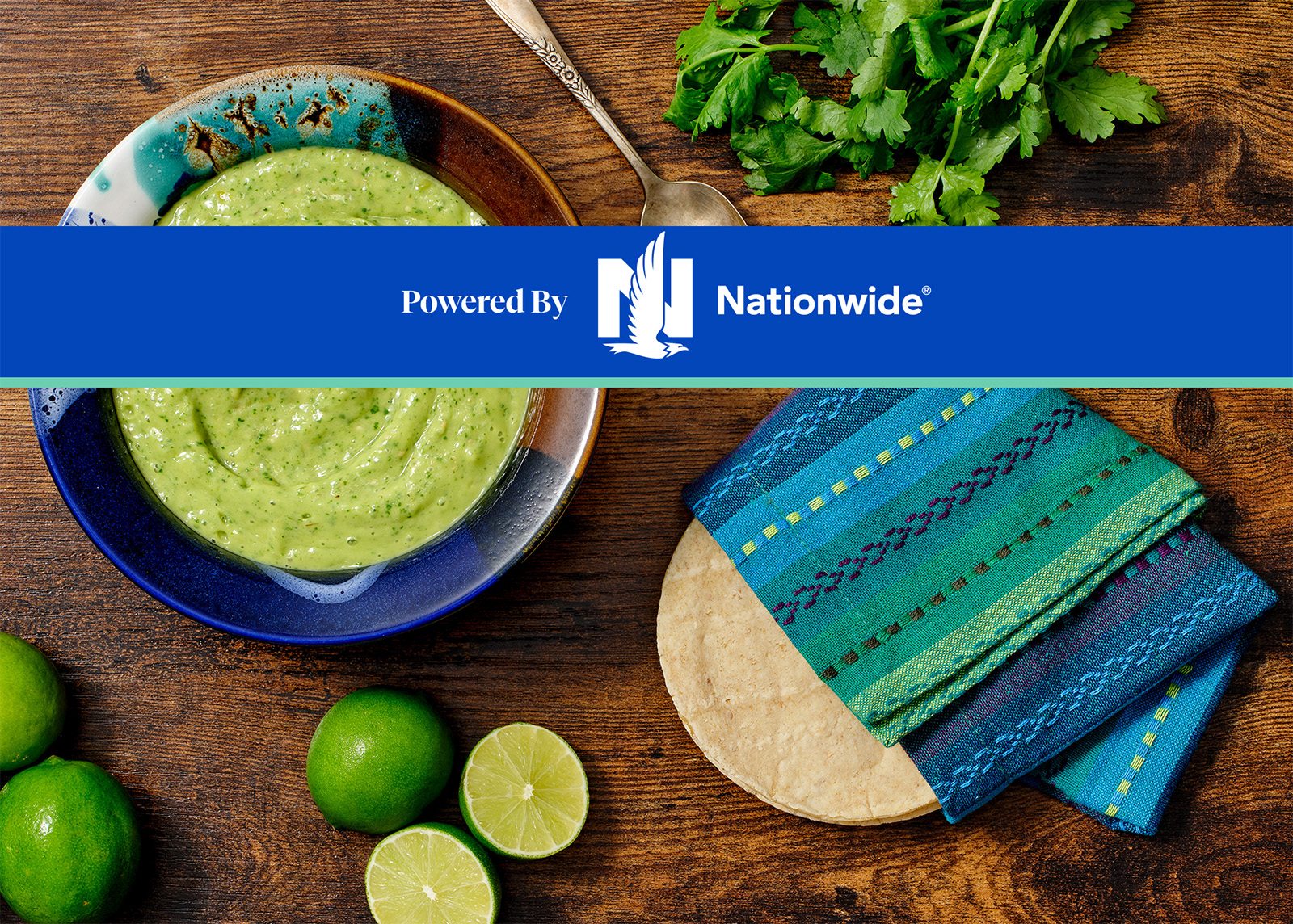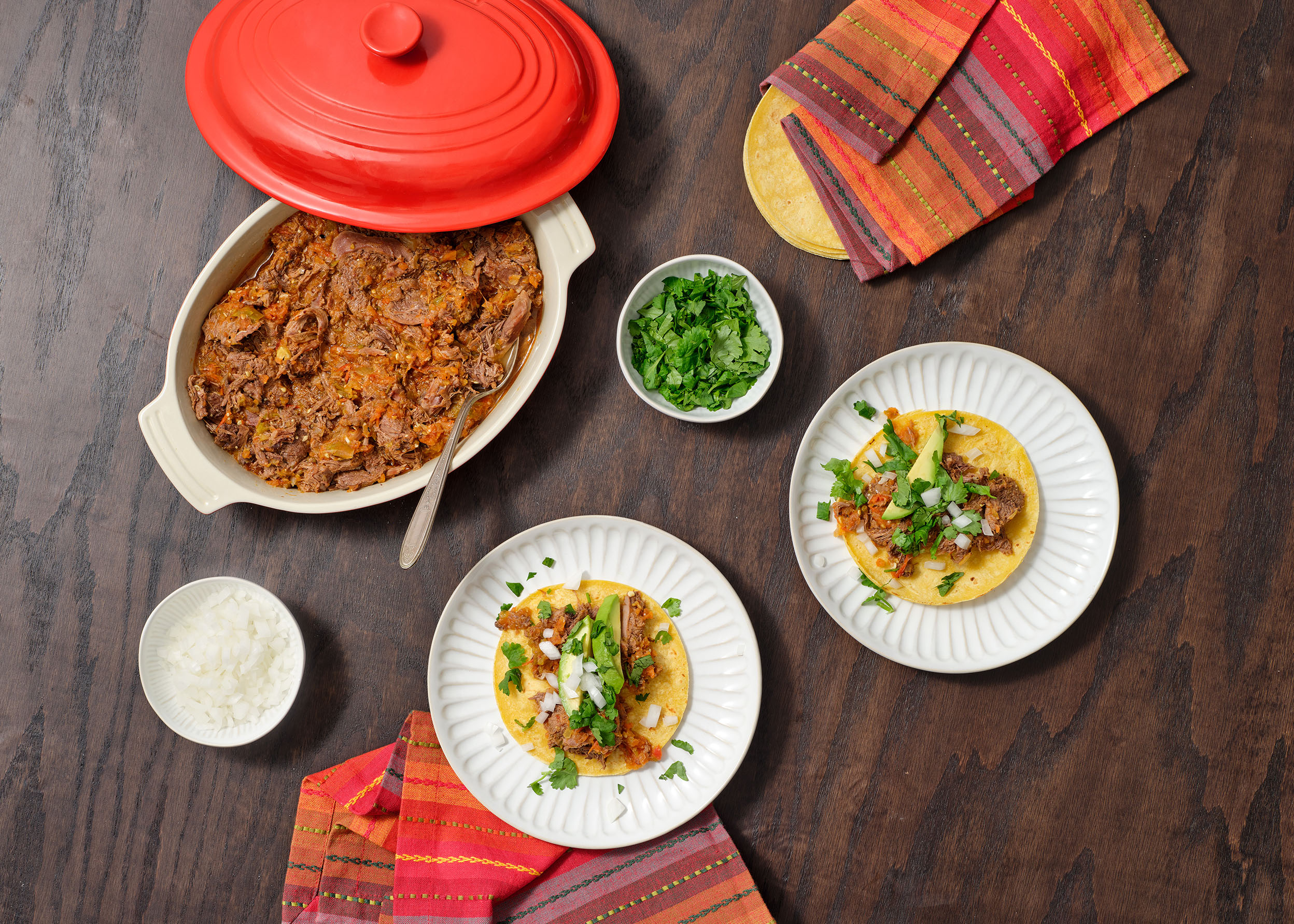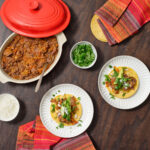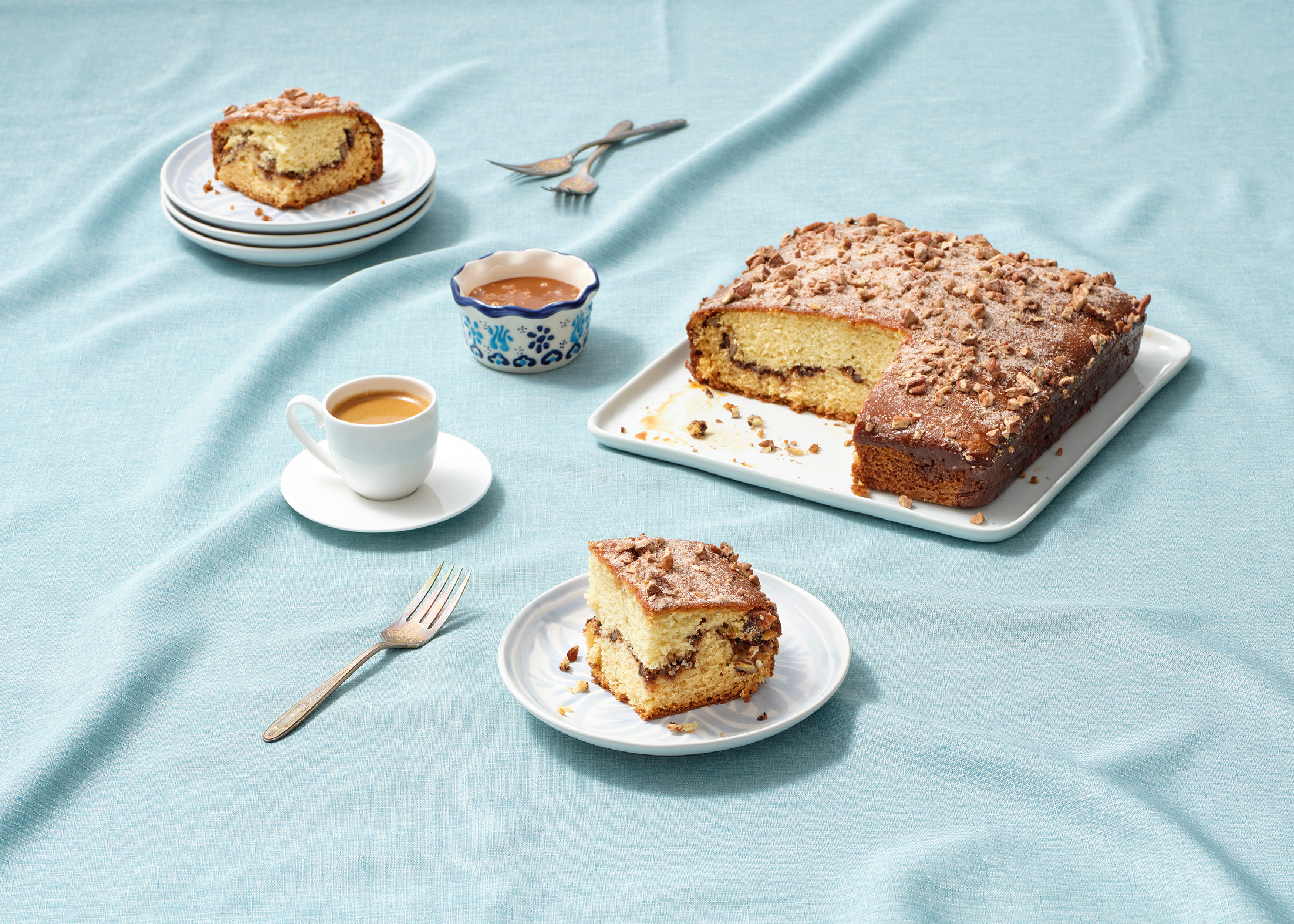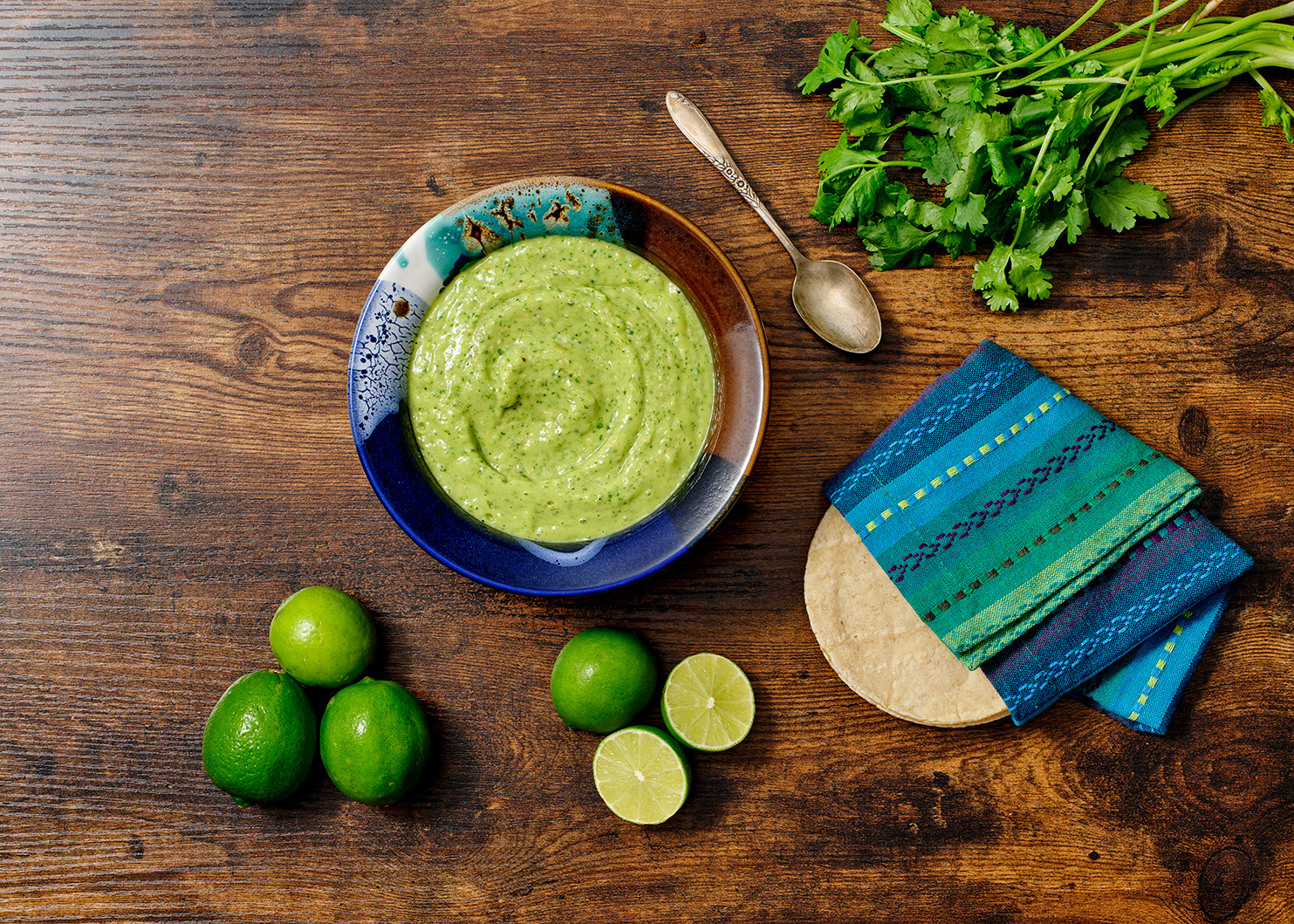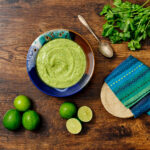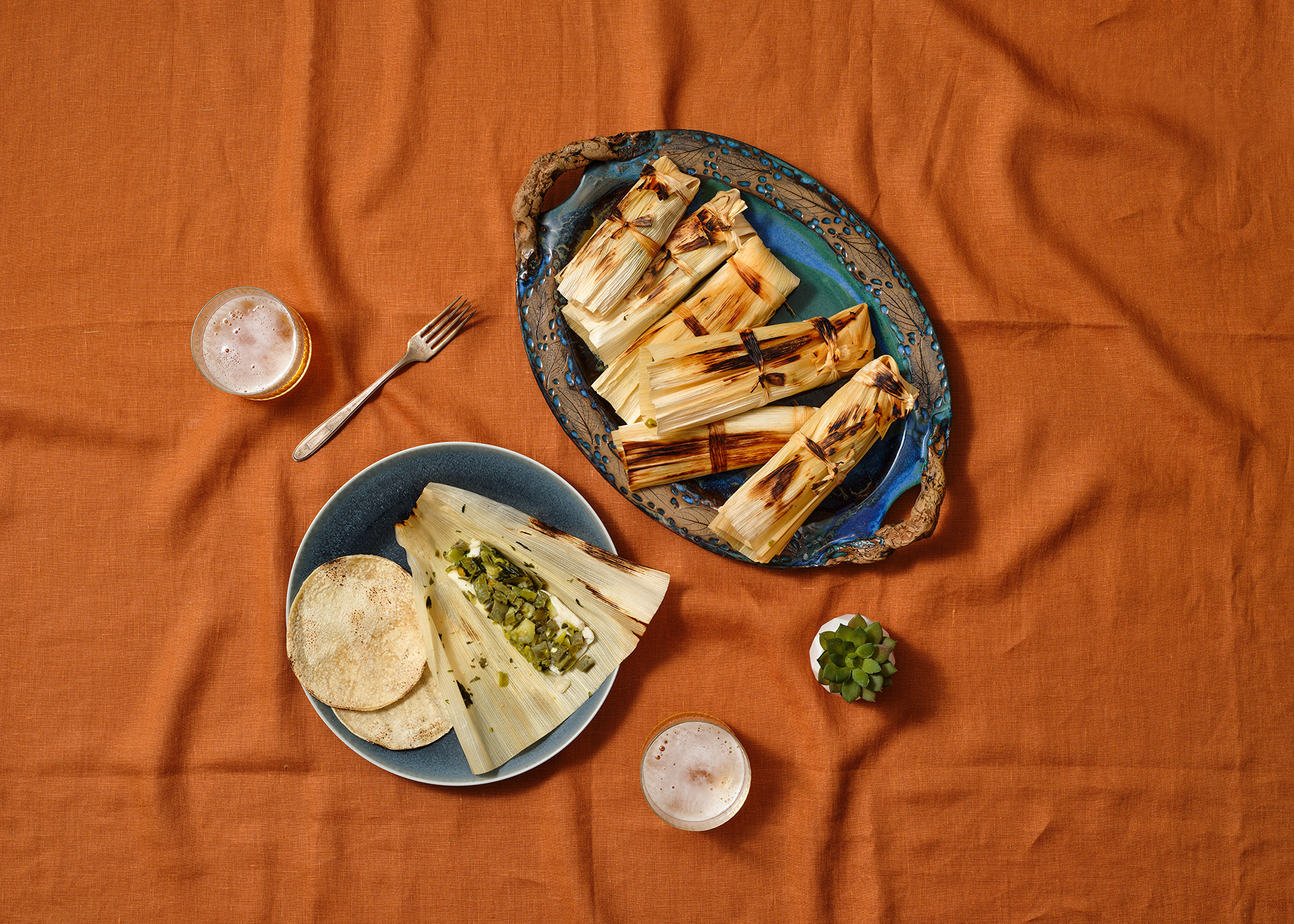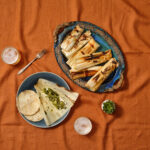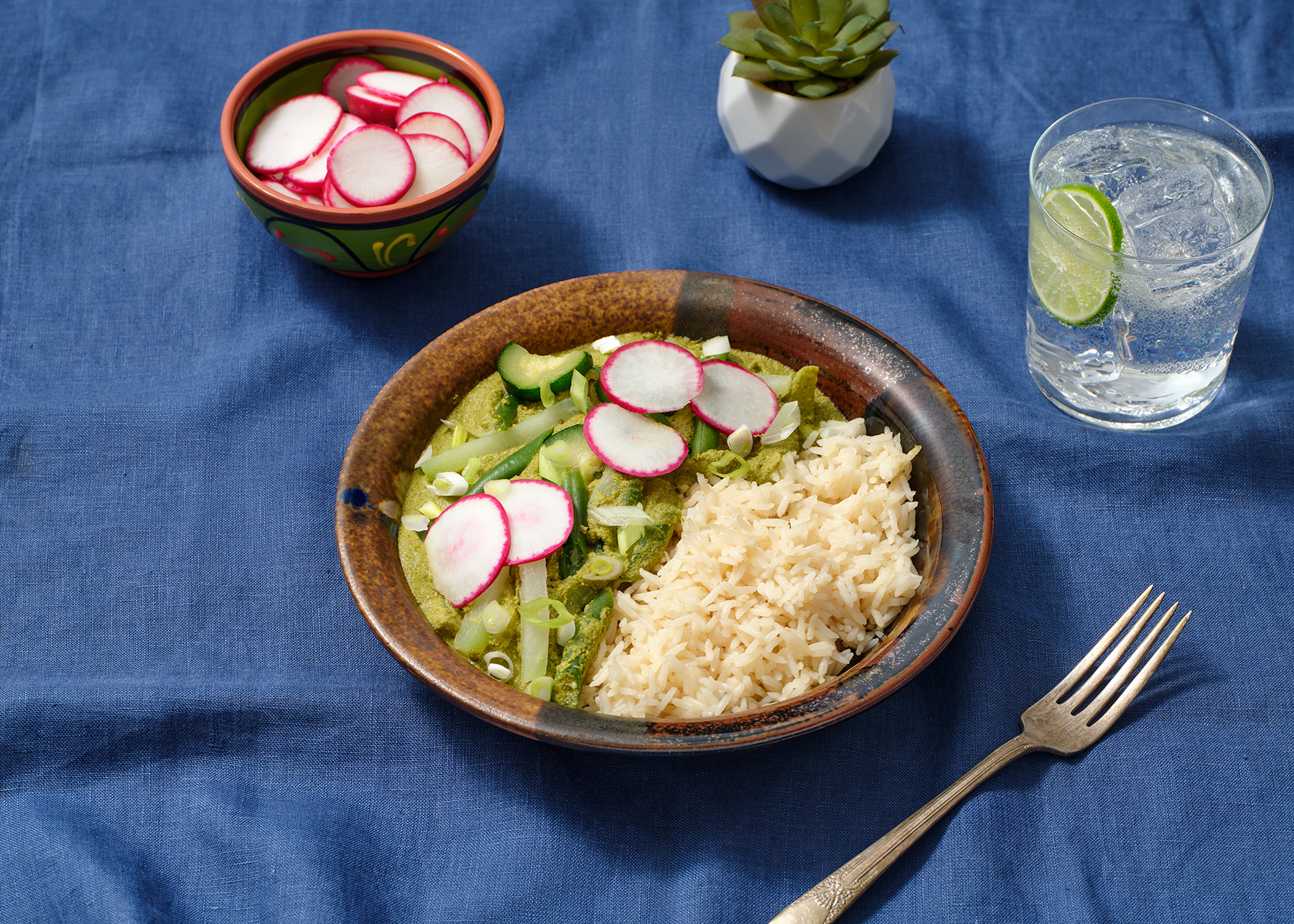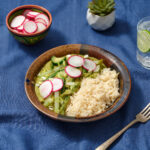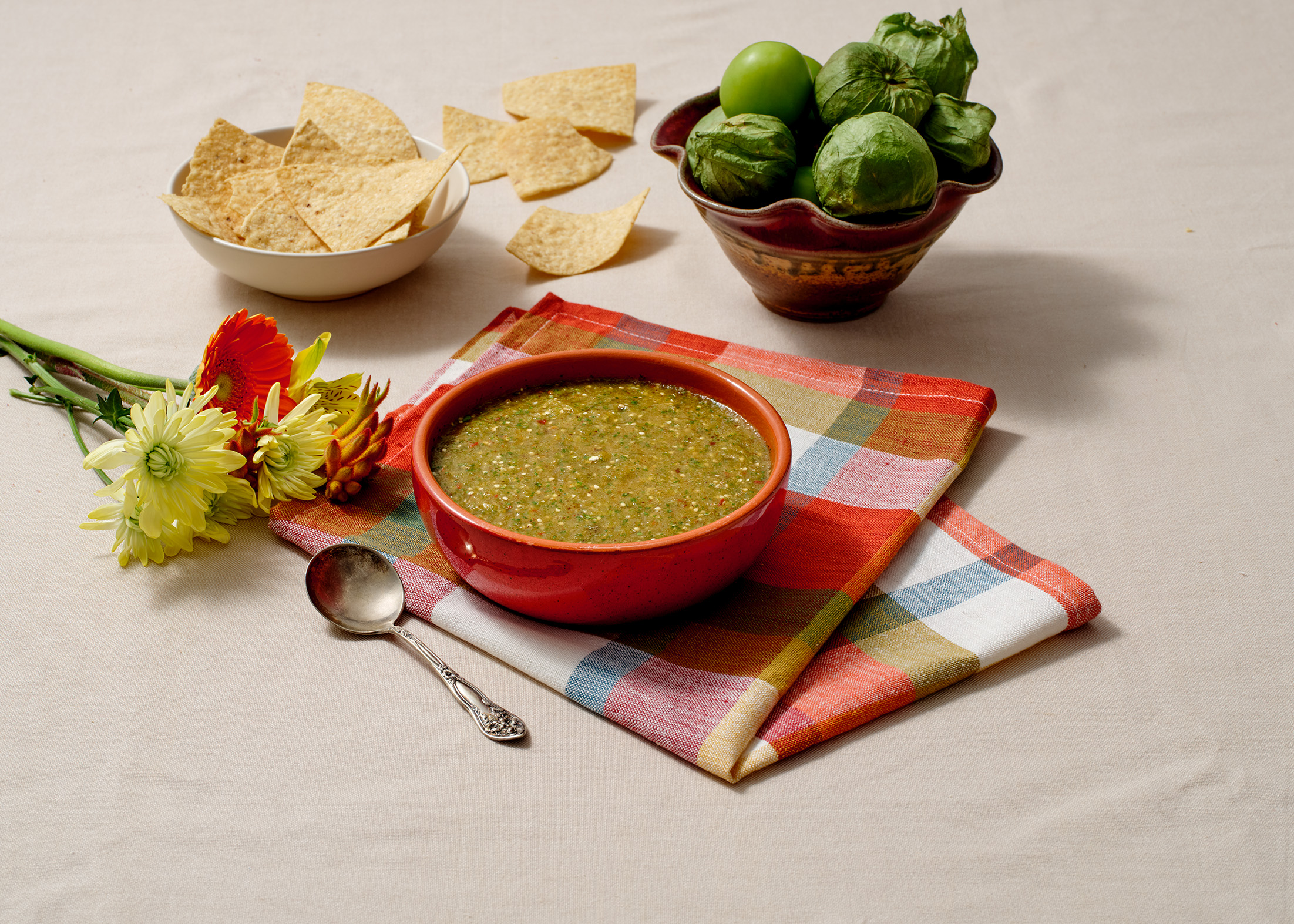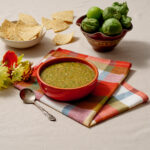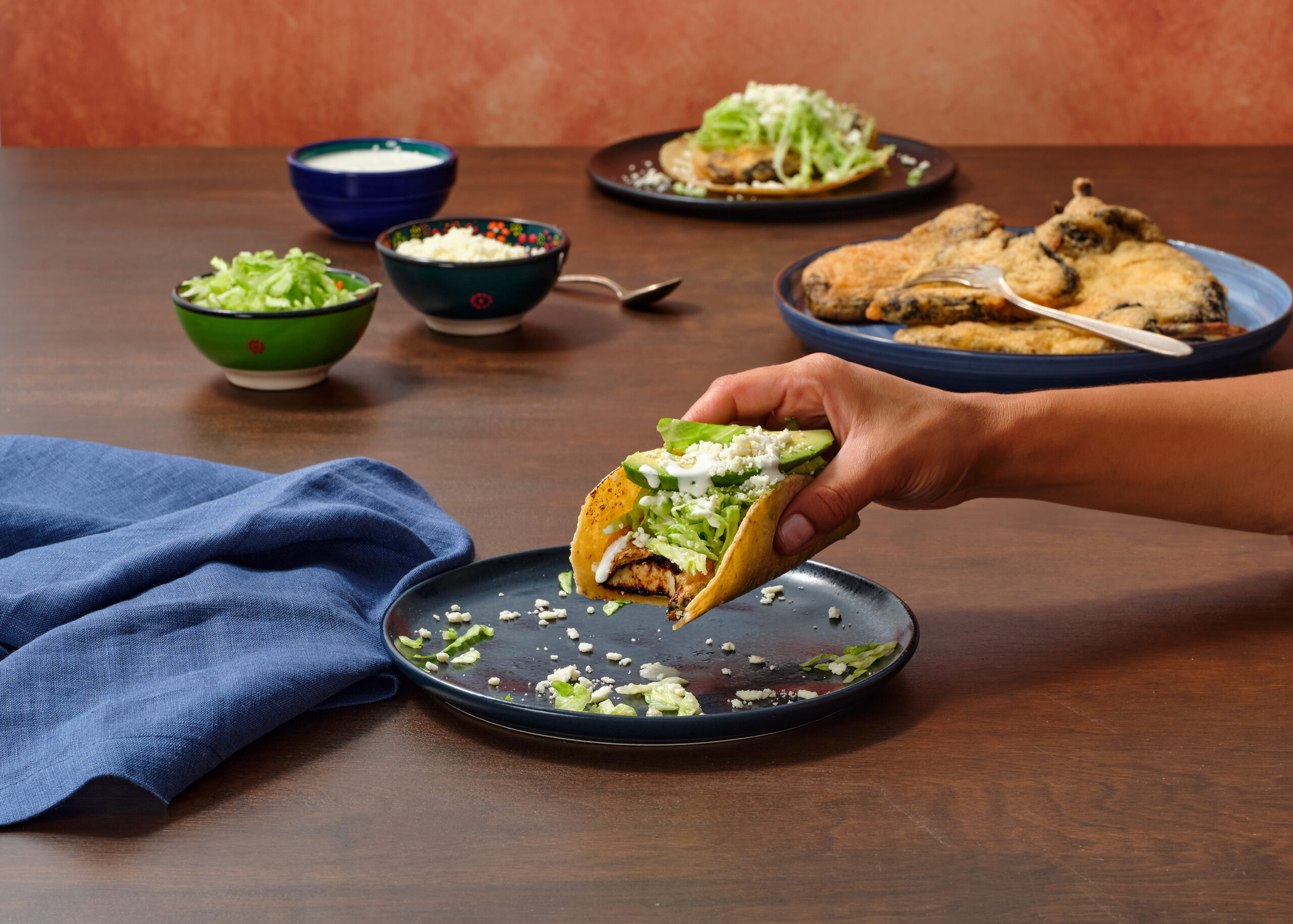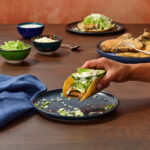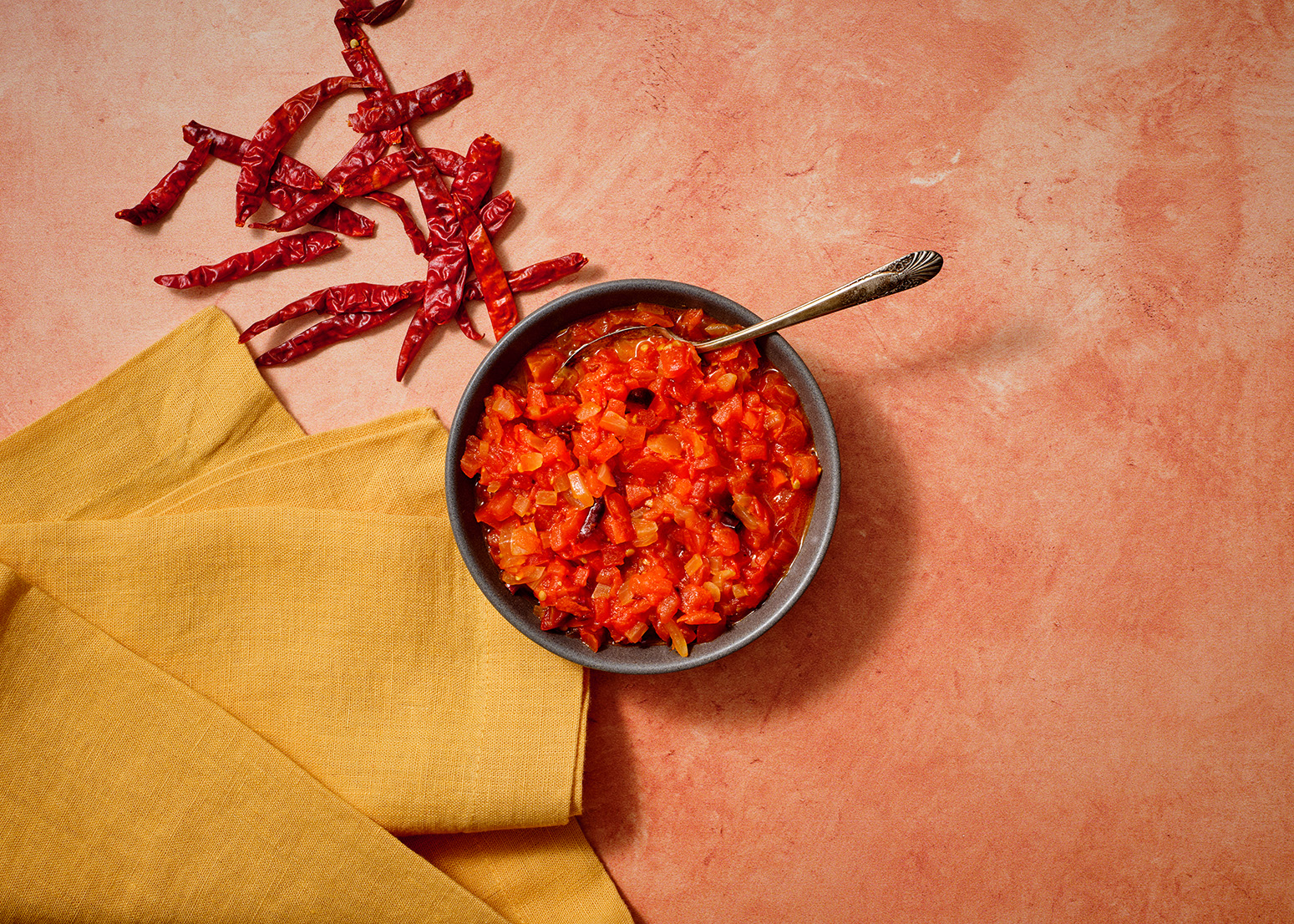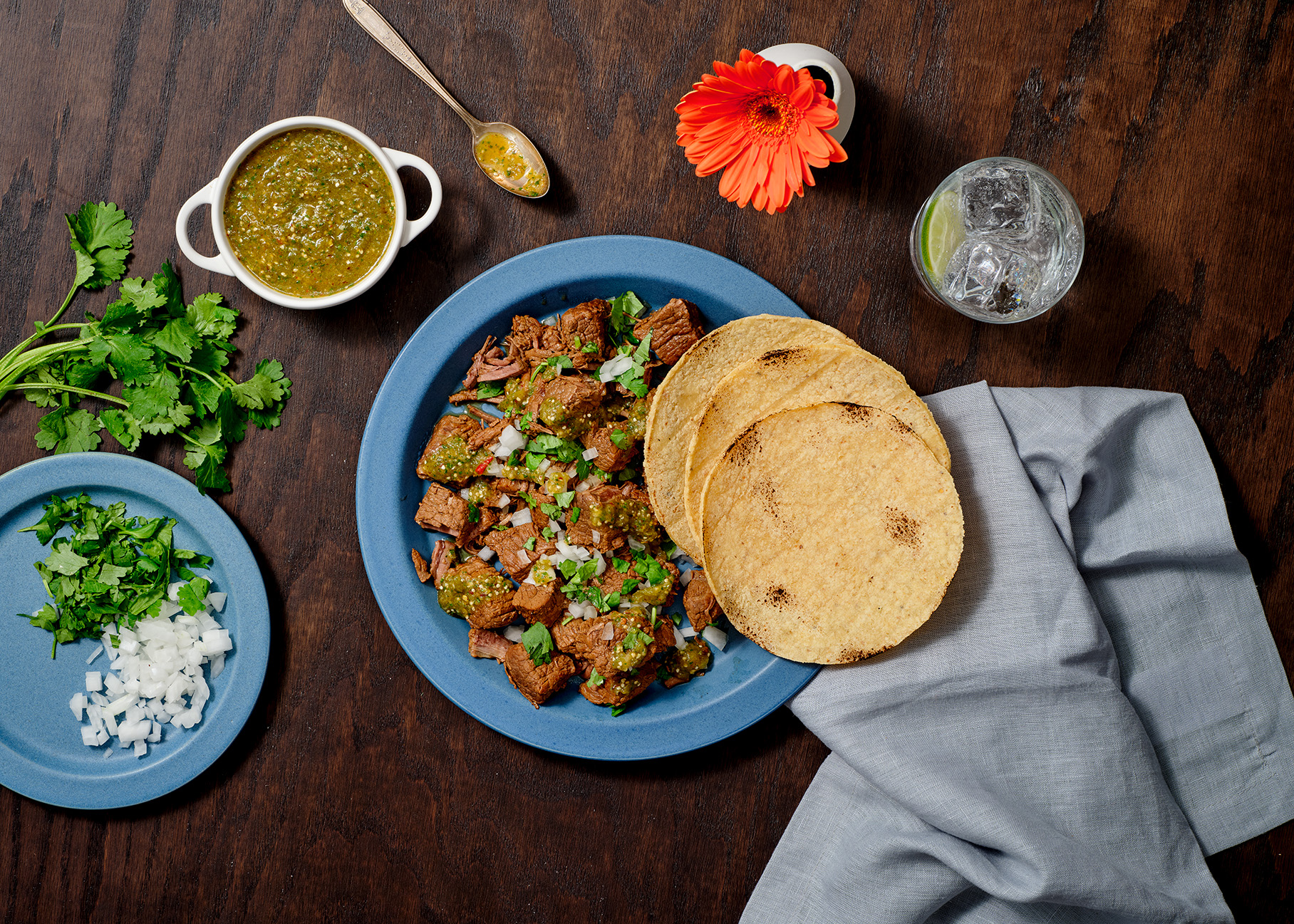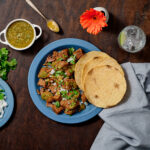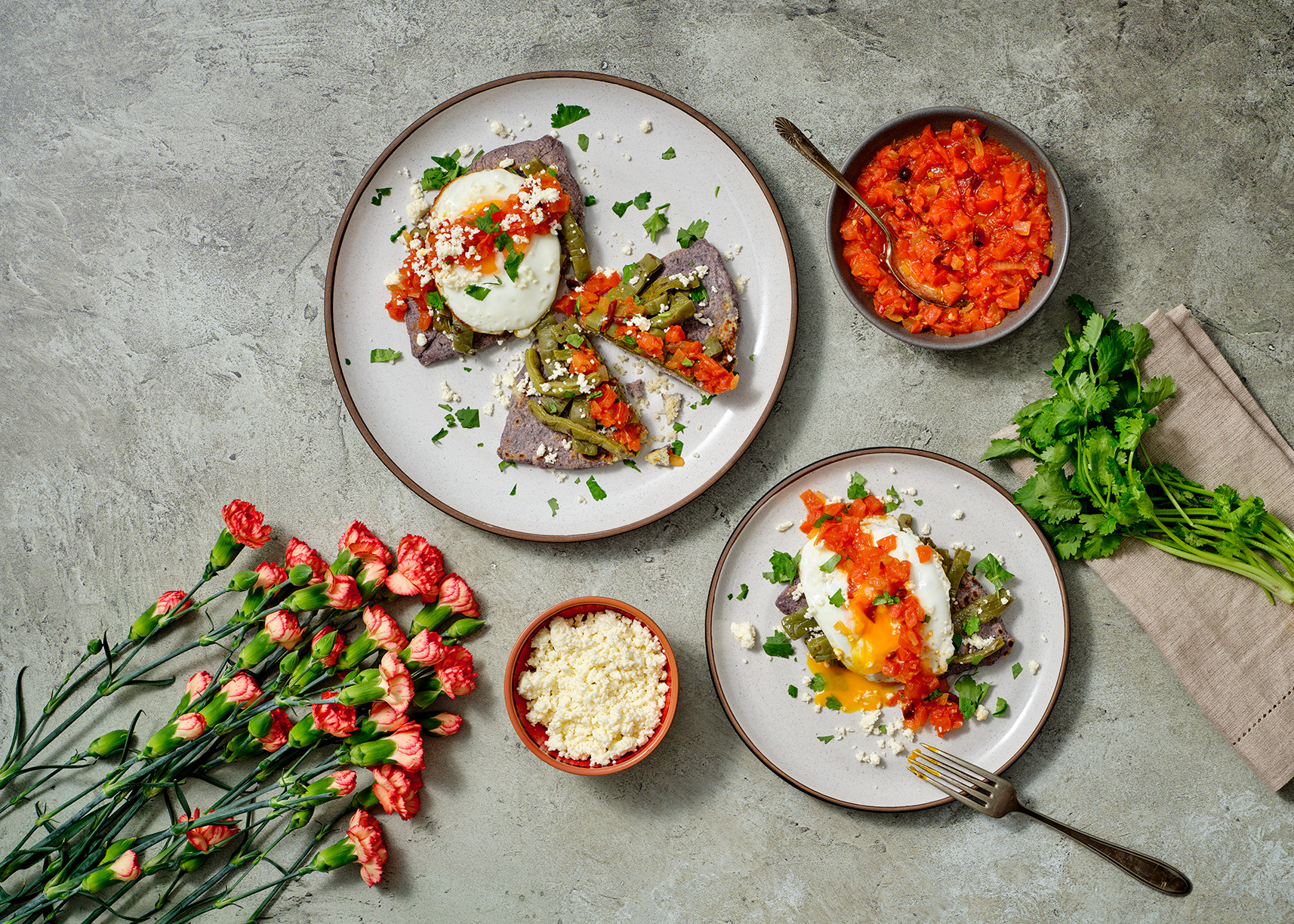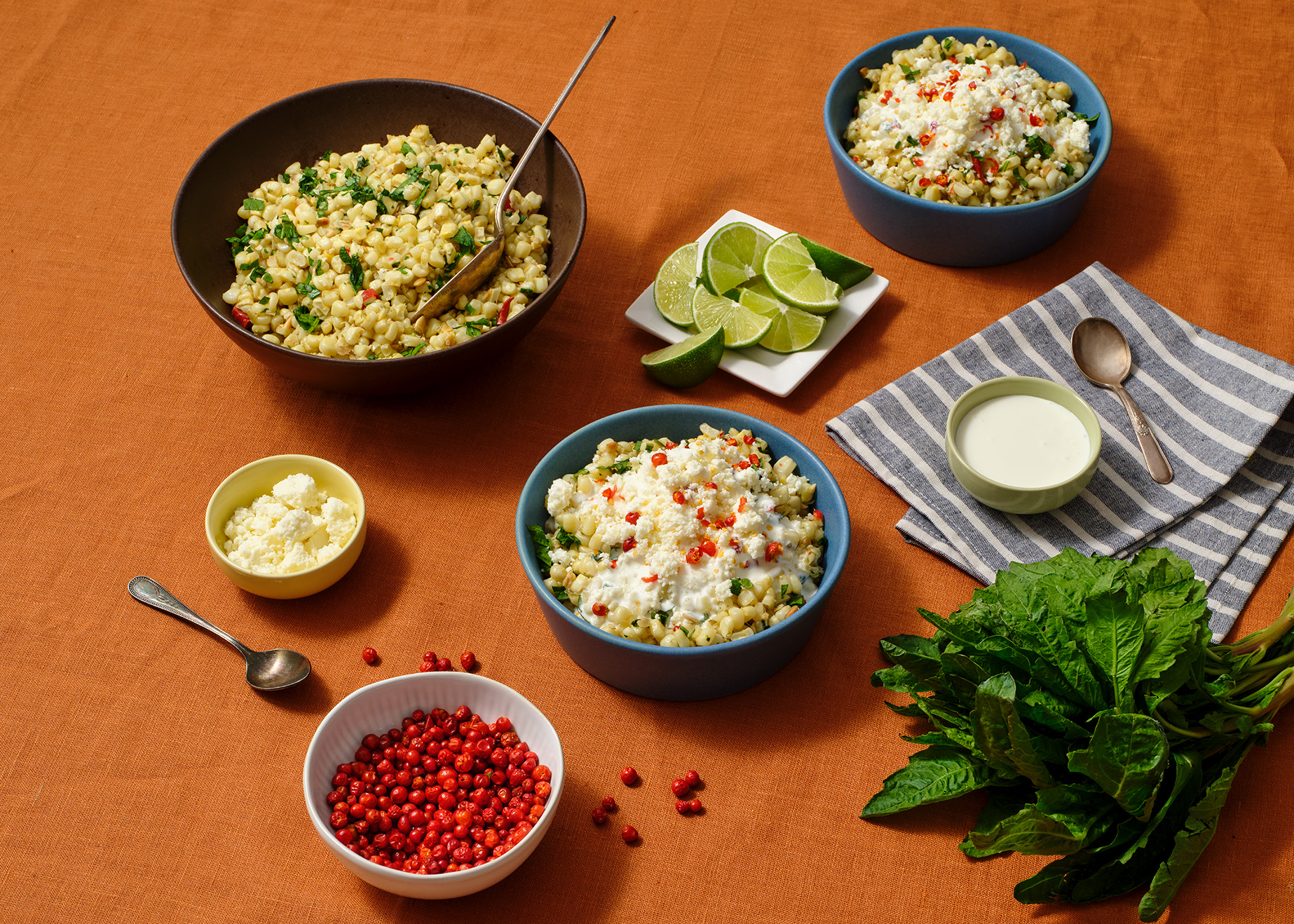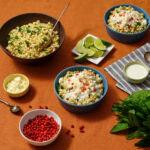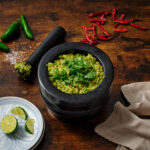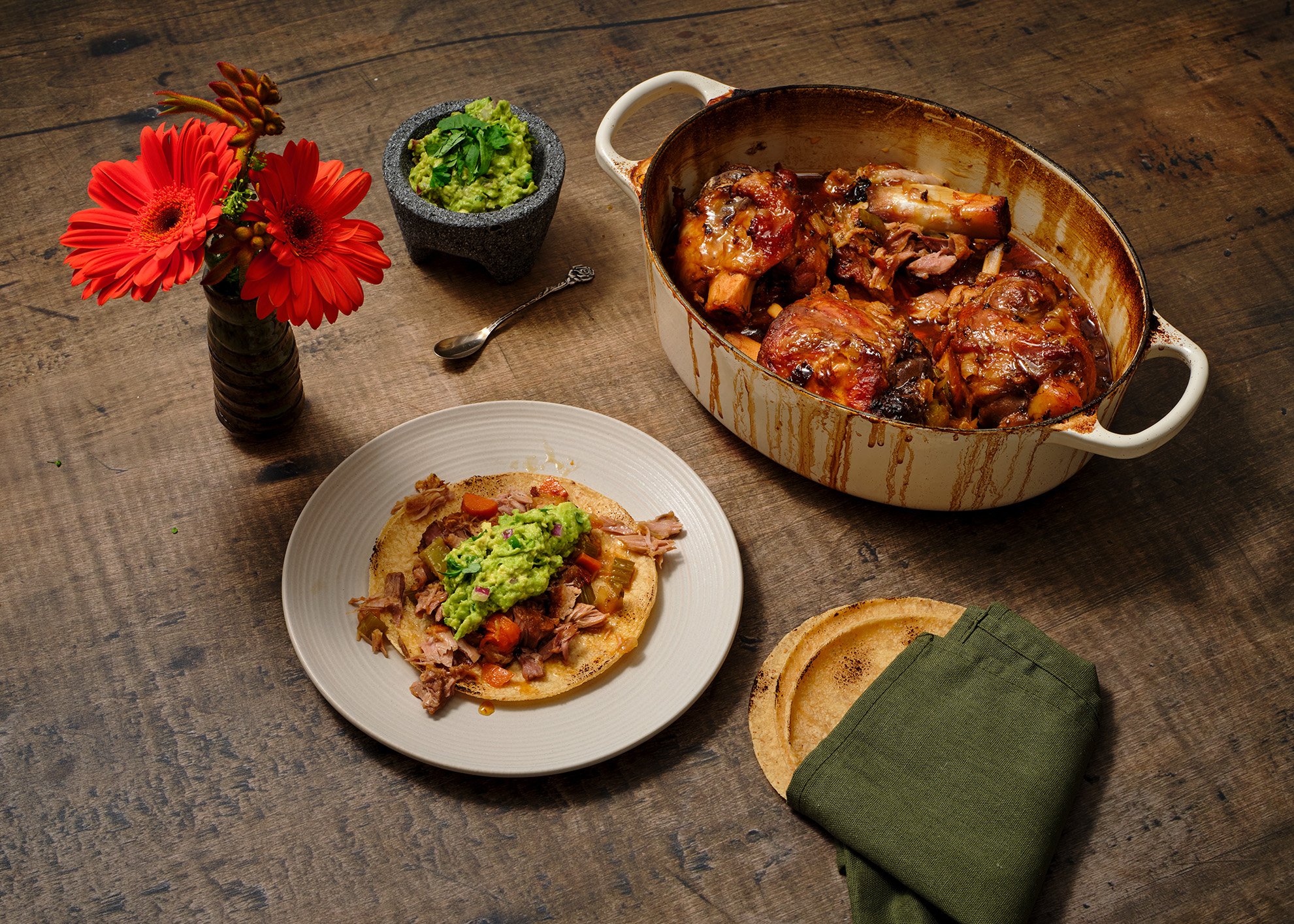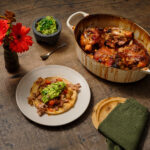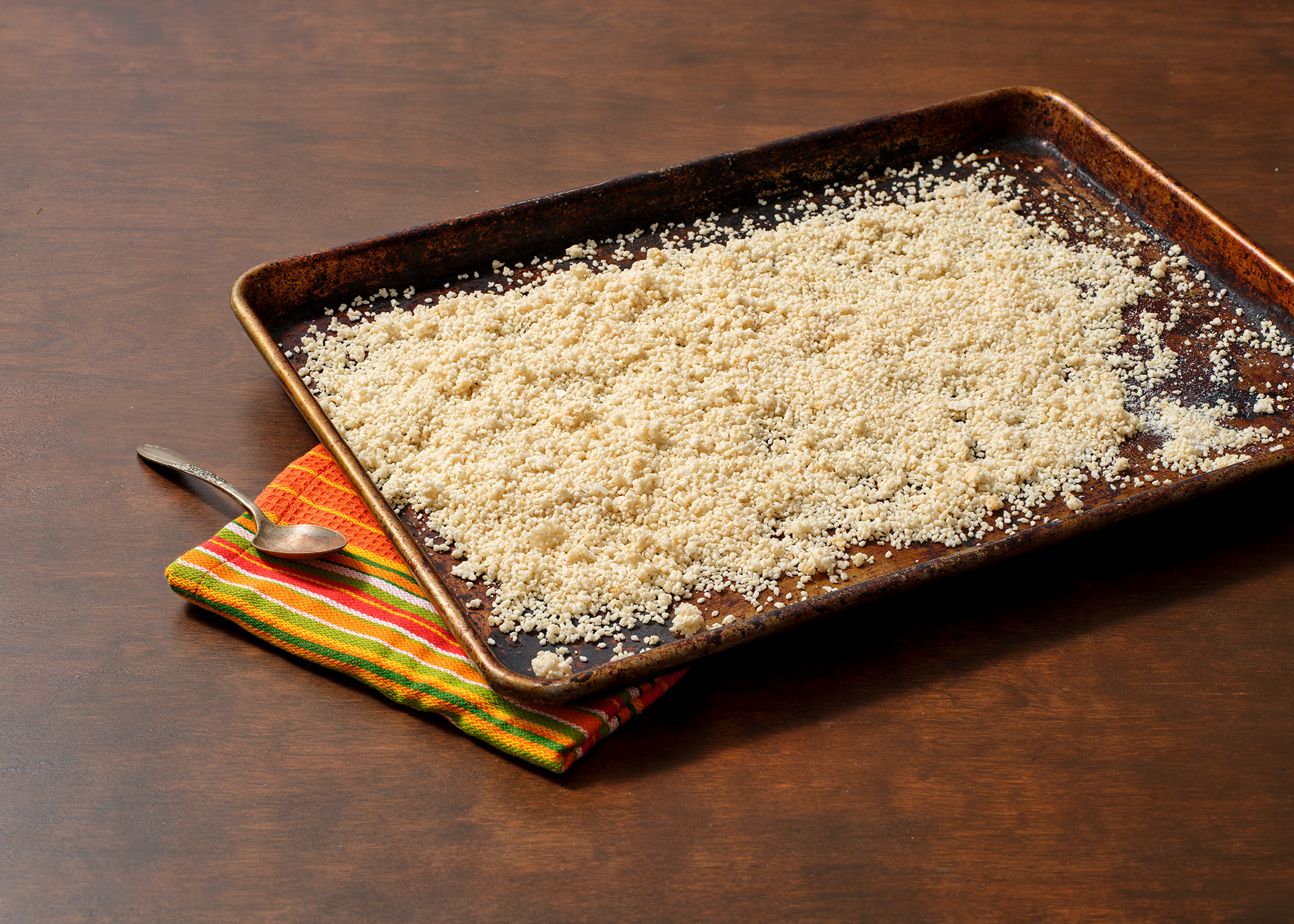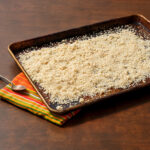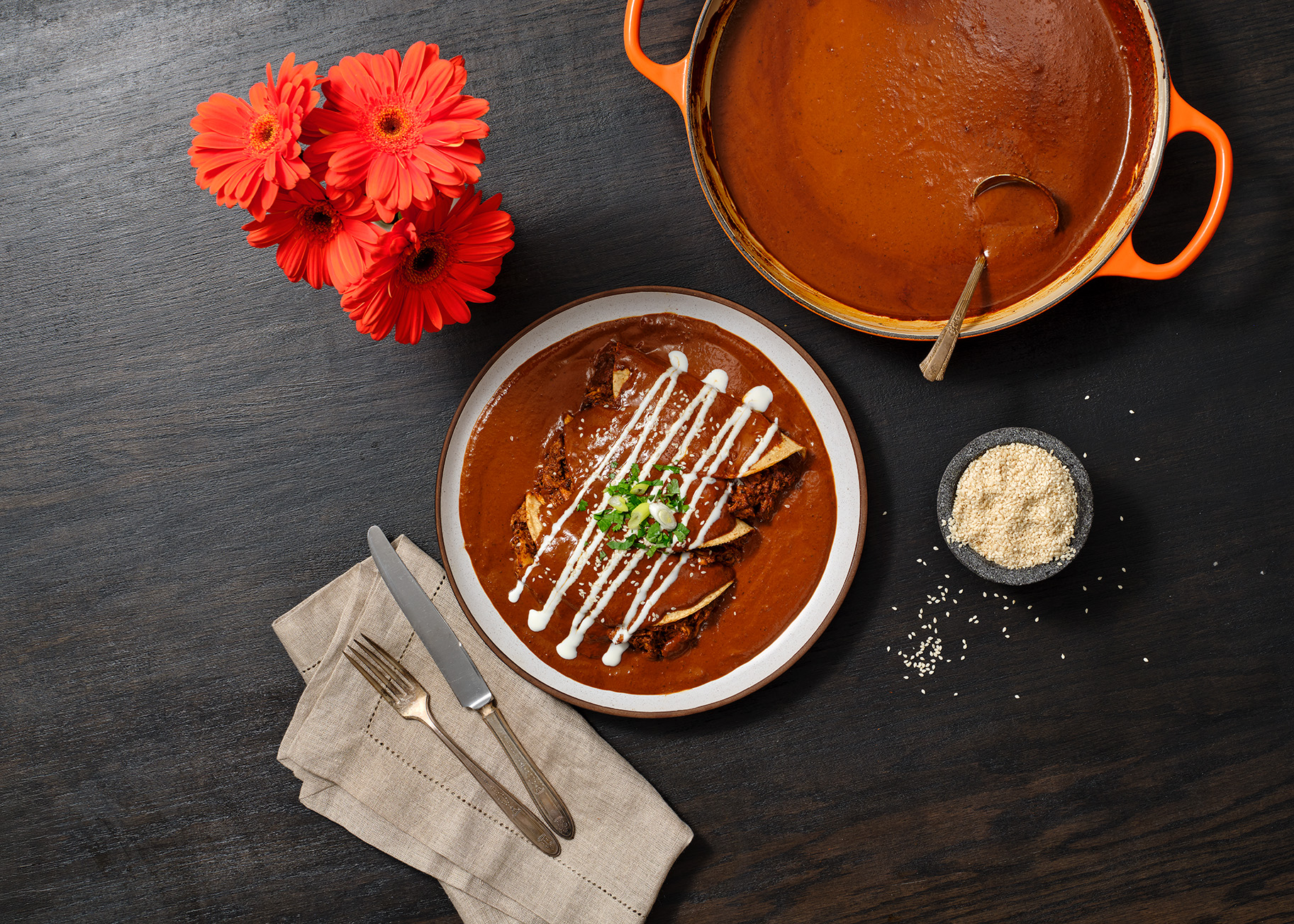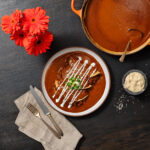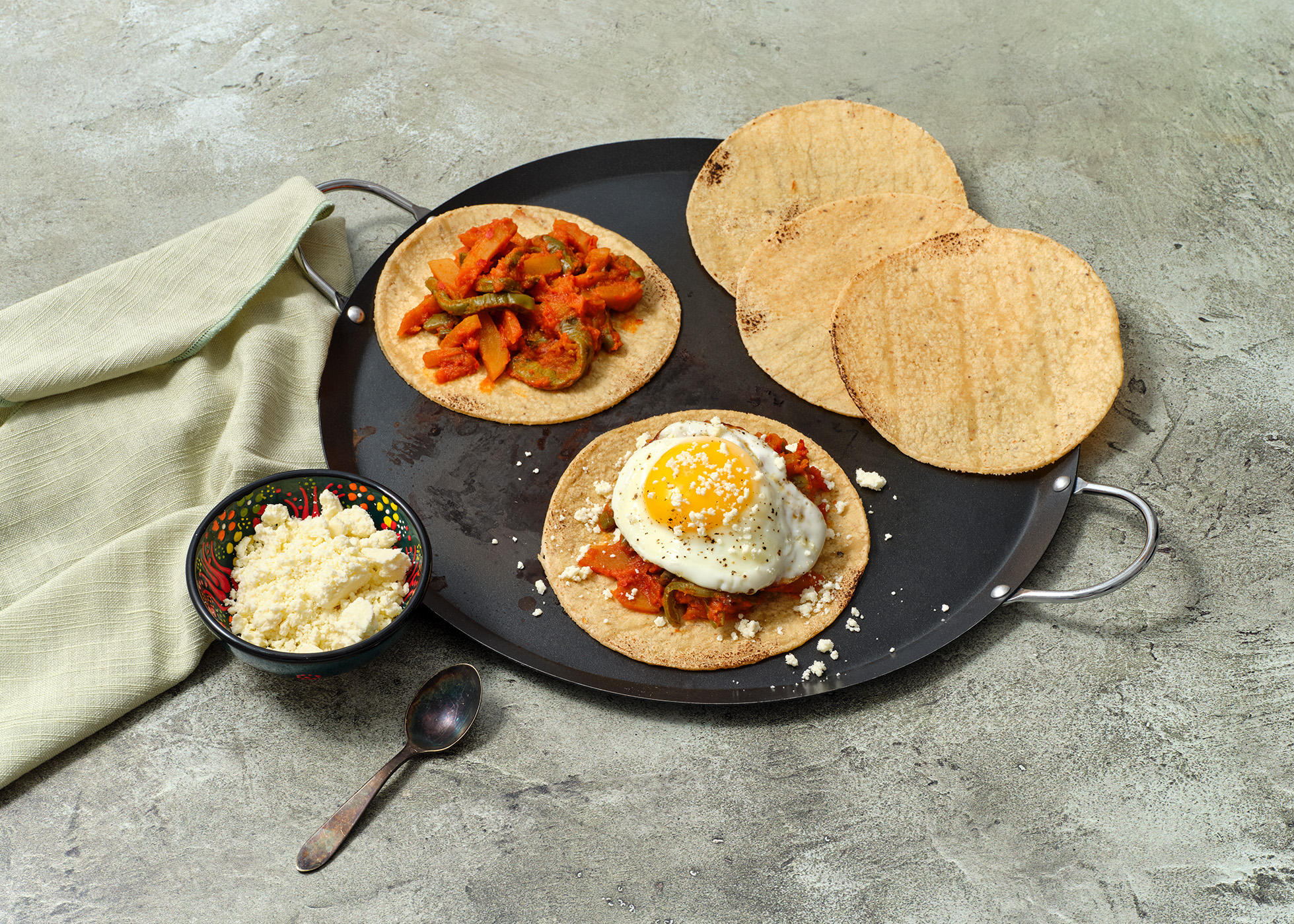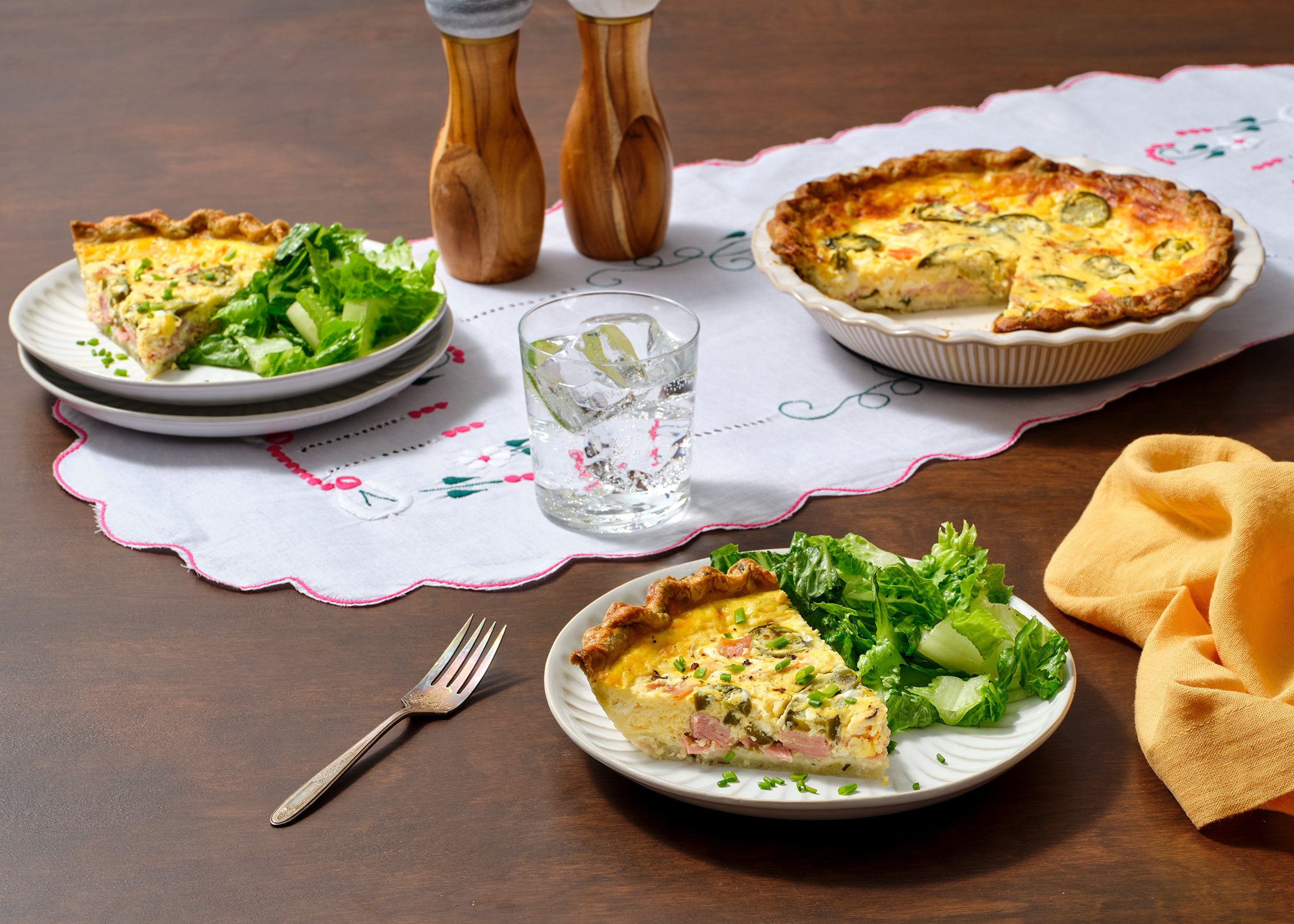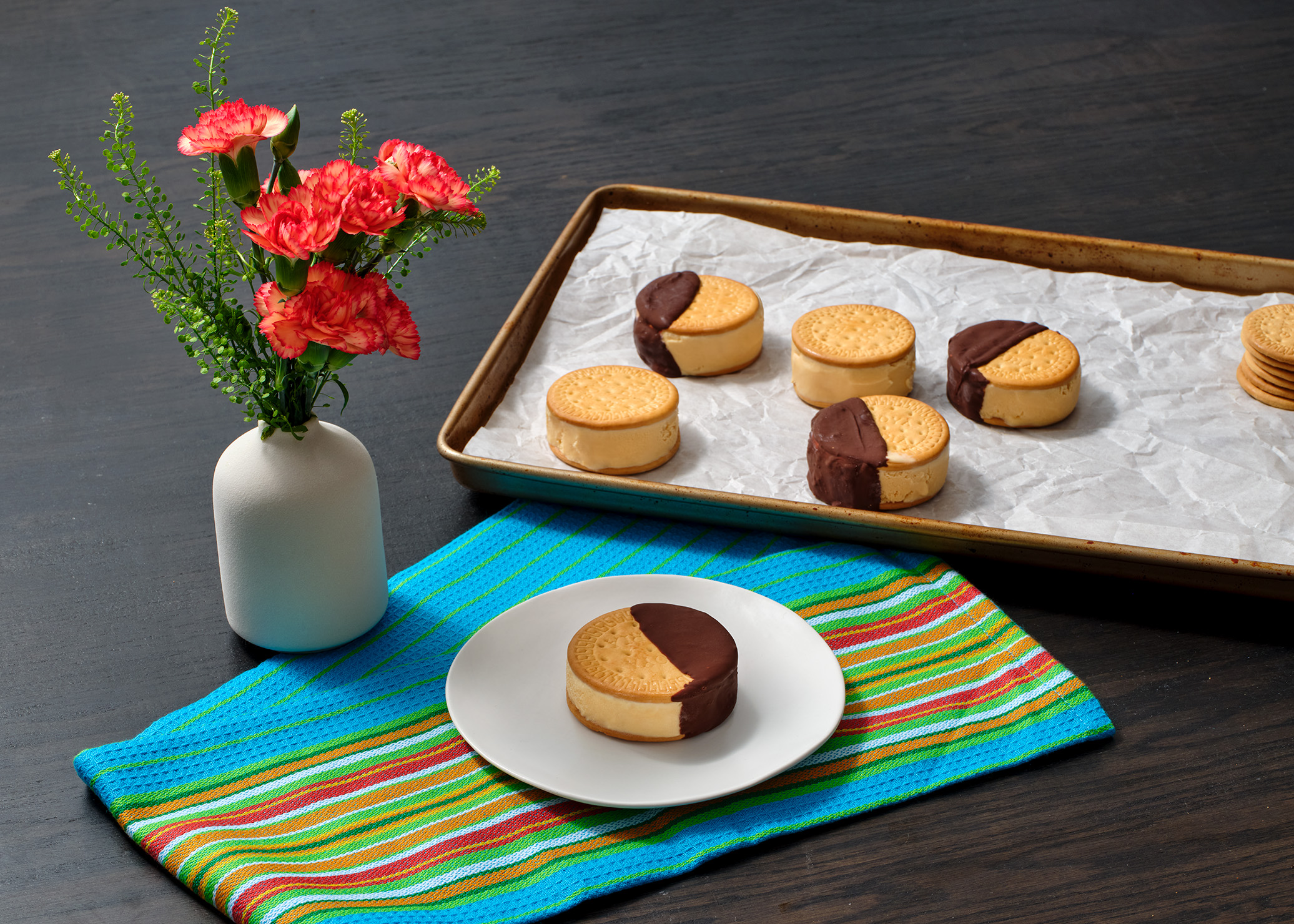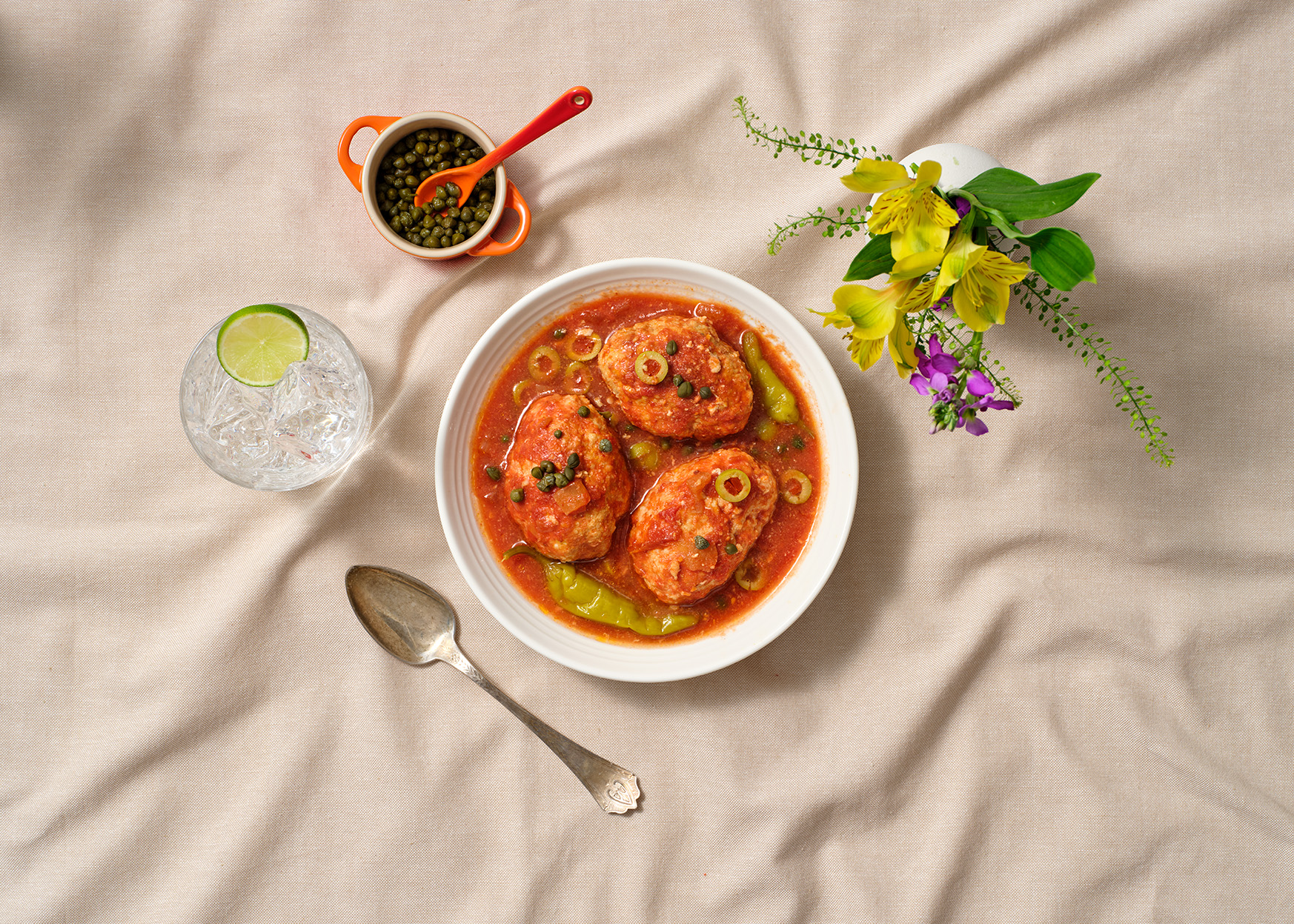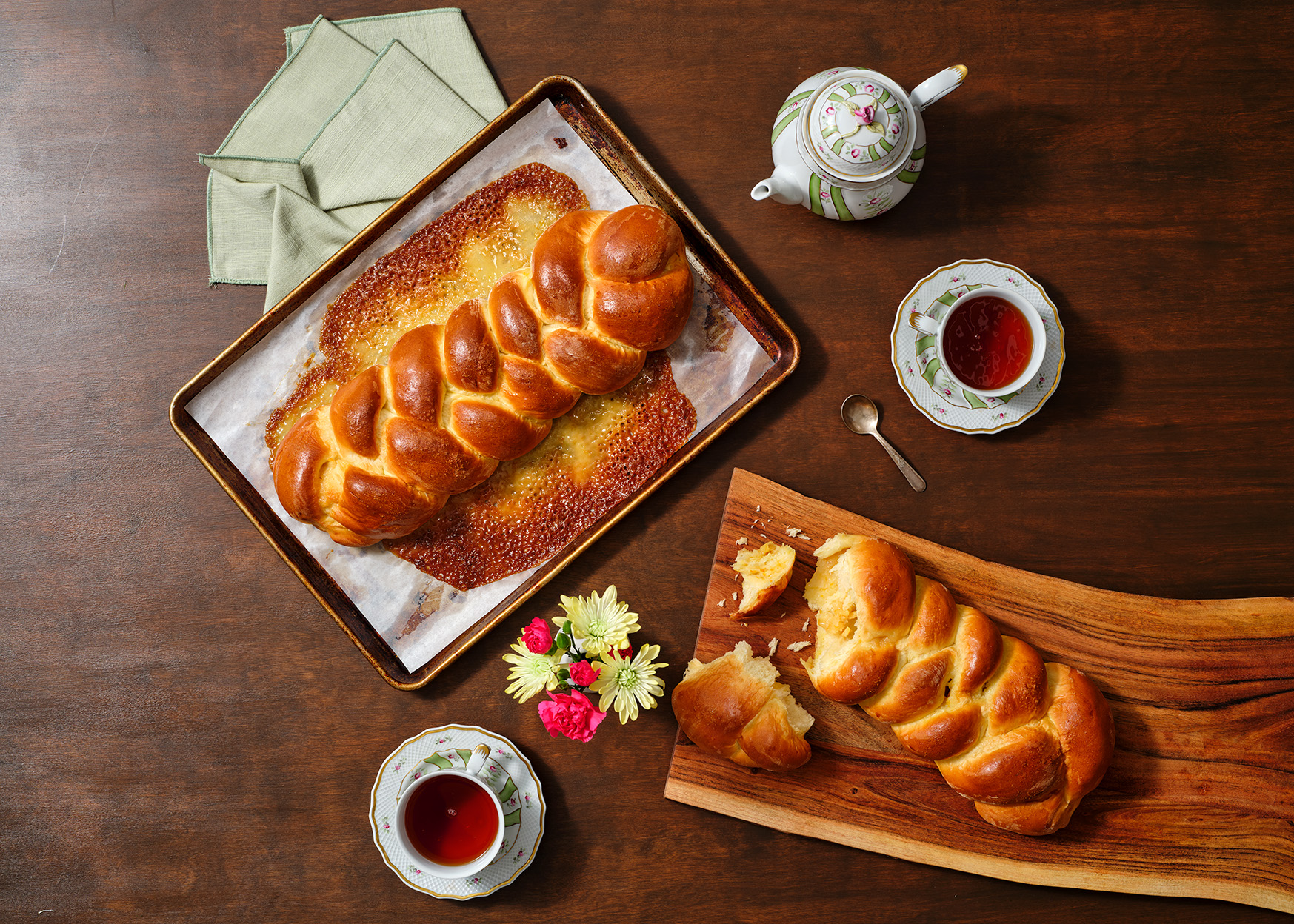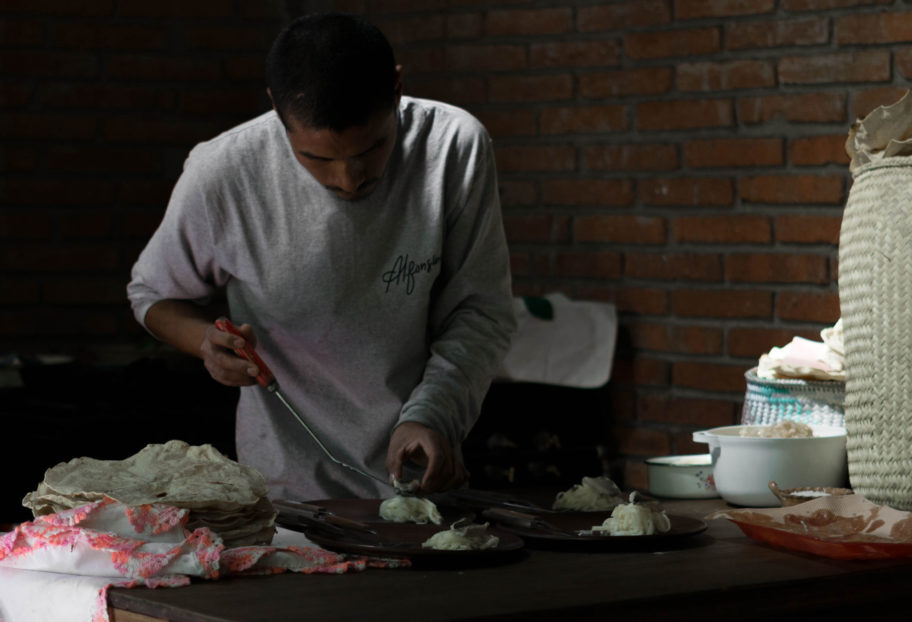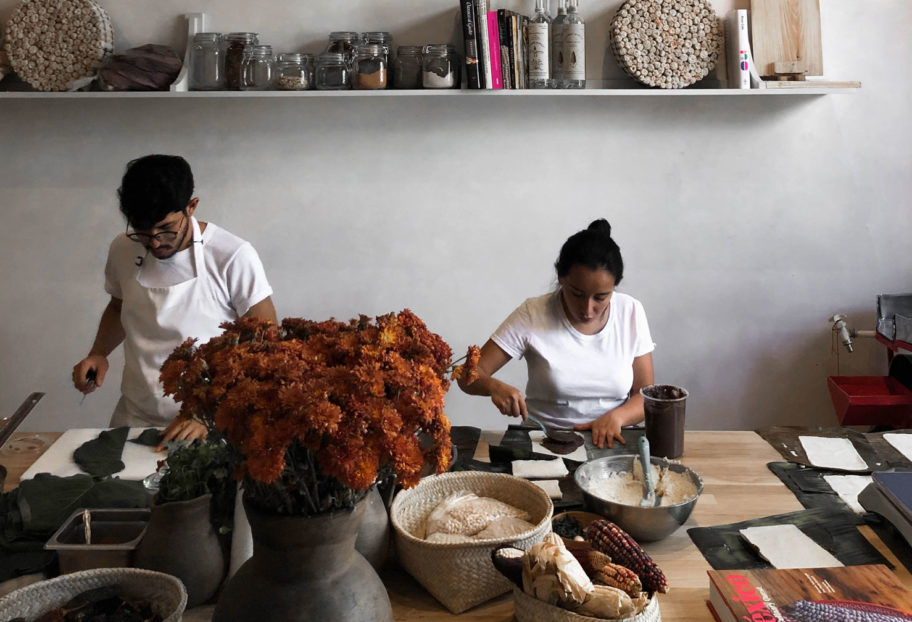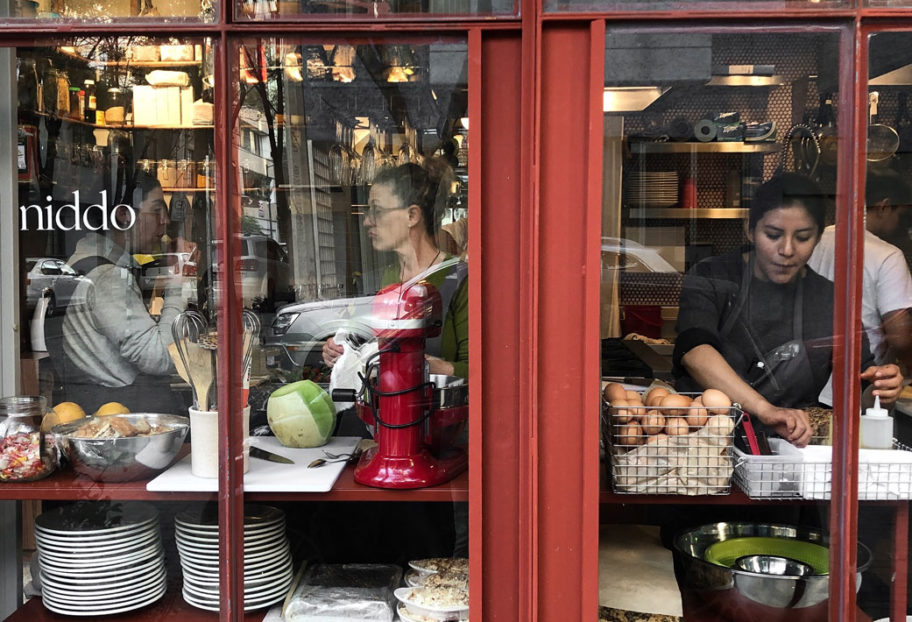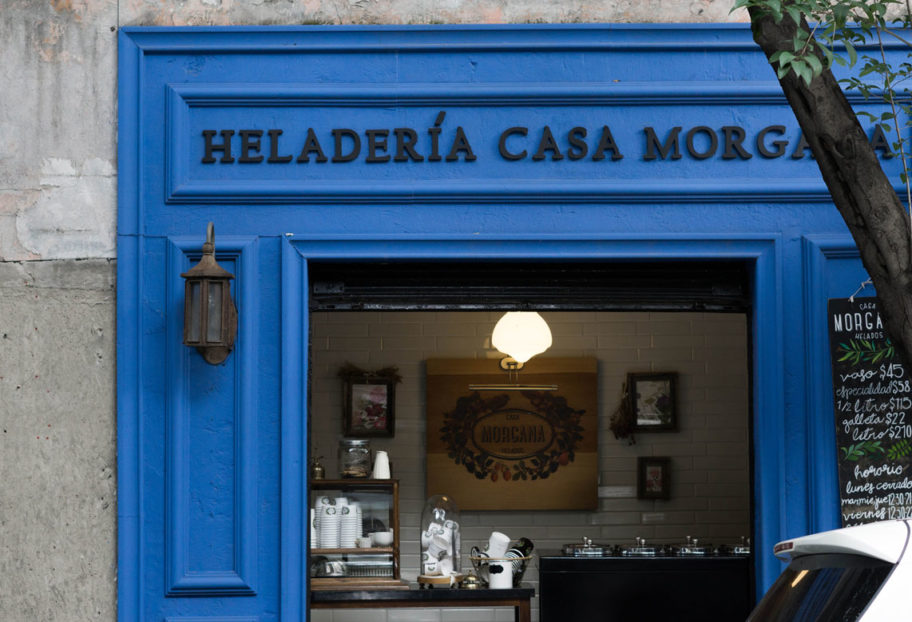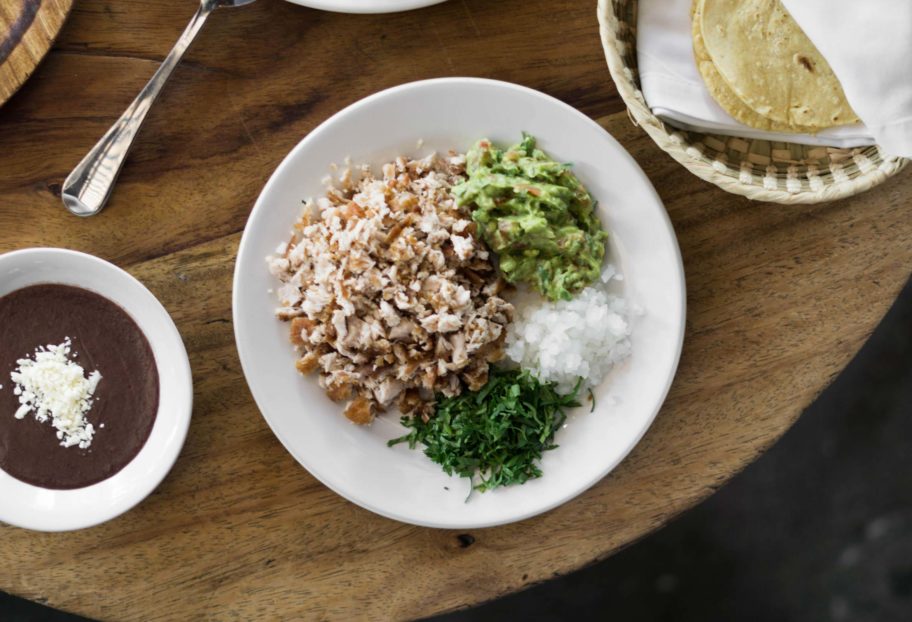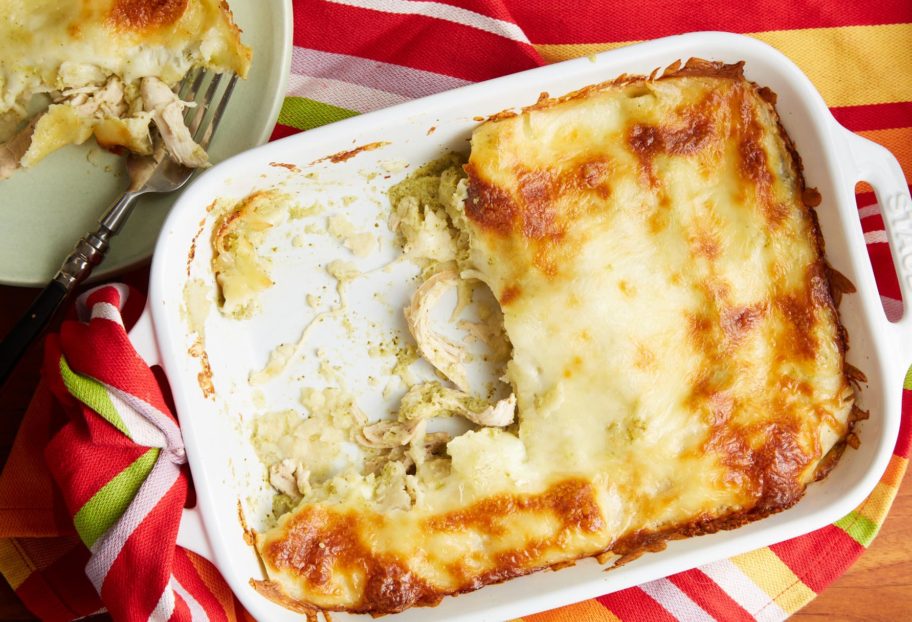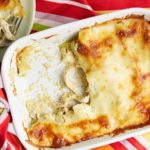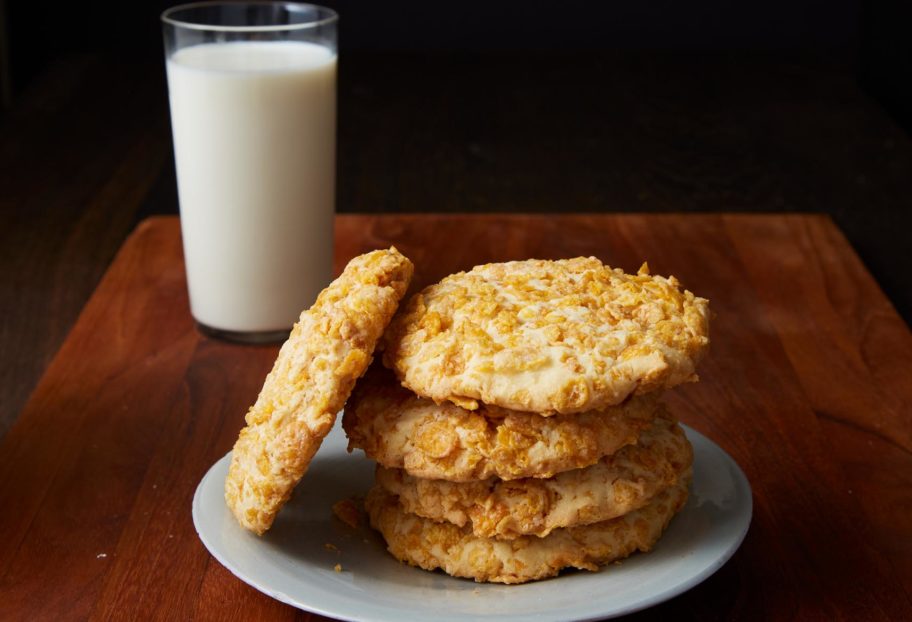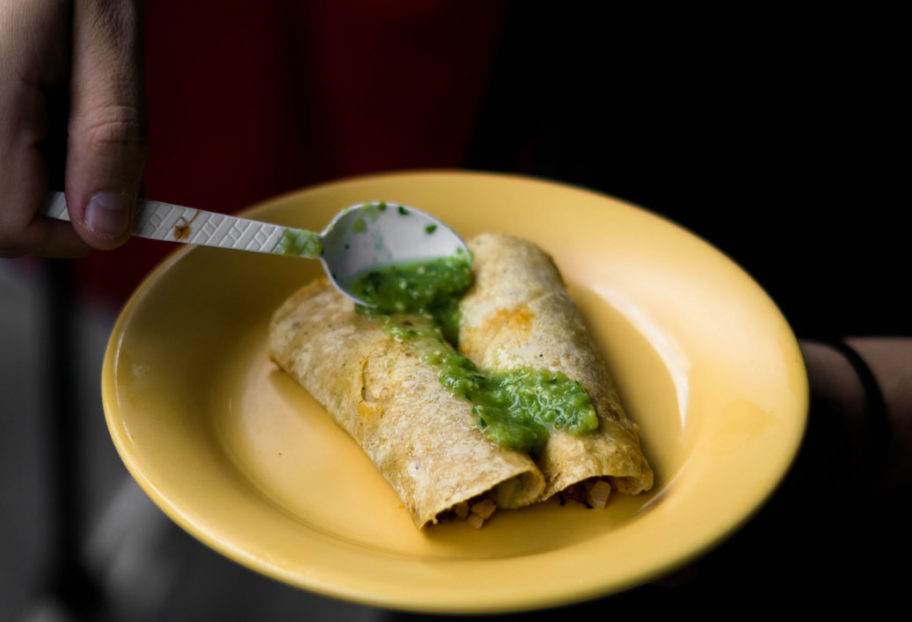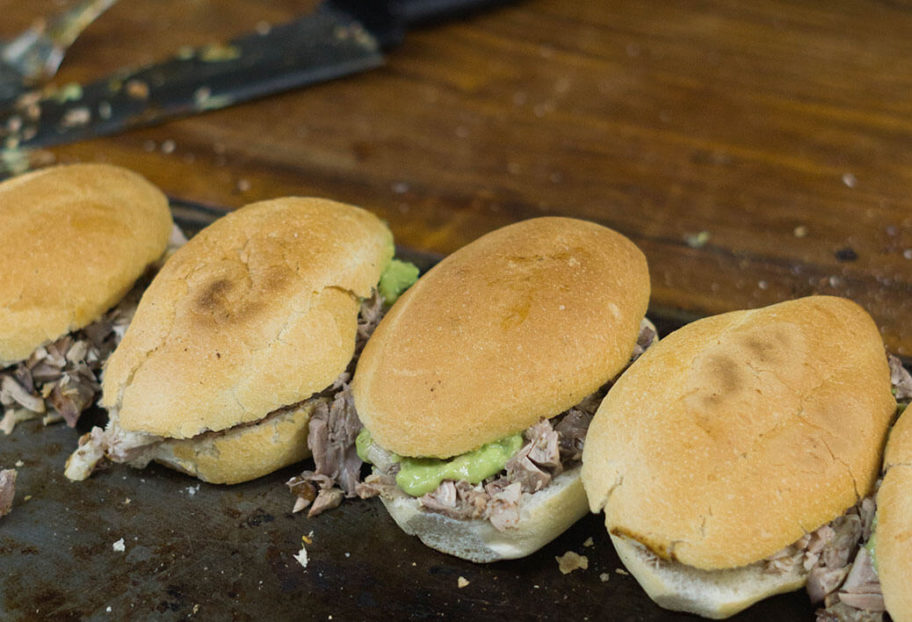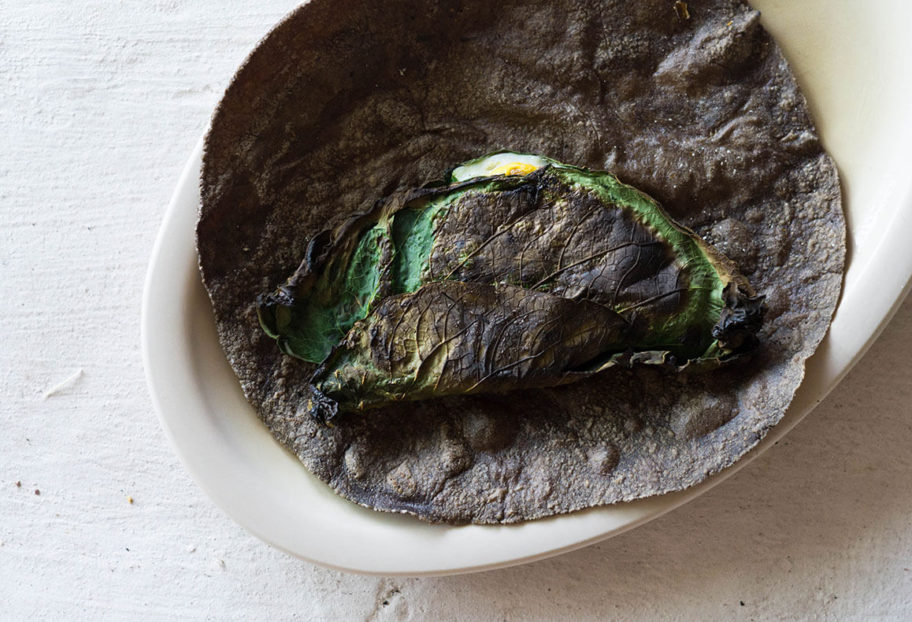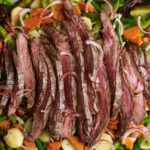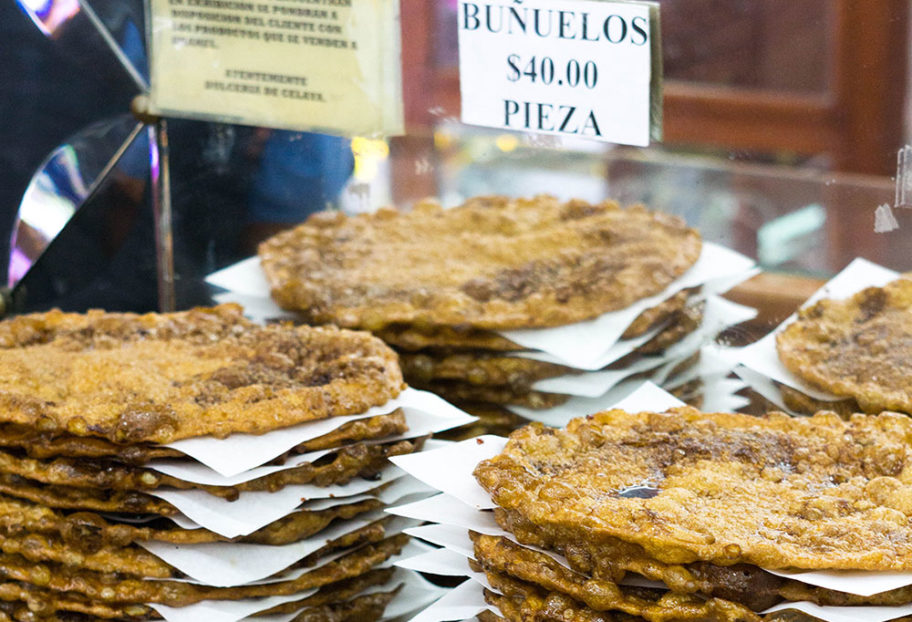Mexico City
Episode 1401: My Heart, My Home
Premieres Sept. 26, 2025. Pati returns to her hometown, Mexico City, and joins historian Erika Zúñiga to trace its history from Templo Mayor to Bellas Artes, with a stop for churros at the legendary El Moro. Later, she meets journalist Enrique Acevedo at Central de Abastos, the world’s busiest market, where they share delicious tacos de lengua and reflect on the city’s vibrant present and future.
Full Episode
Tacos de Lengua en Salsa Martajada
Tacos de Lengua en Salsa Martajada
Ingredients
For the tongue:
- 1 whole beef tongue about 3 to 4 pounds, rinsed in cold water
- 1 head of garlic outer dry peel removed, horizontally halved
- 1 white onion outer peel removed, halved
- 3 dried bay leaves
- 1 teaspoon black peppercorns
- 1 teaspoon dried marjoram
- 1 teaspoon dried thyme
- 1 teaspoon dried oregano
- 1 tablespoon kosher or sea salt plus more for seasoning
- 2 teaspoons vegetable oil
For the salsa:
- 1 pound ripe roma tomatoes
- ¼ pound tomatillos husked and rinsed
- 1 to 2 jalapeño or serrano chiles stemmed
- 1 garlic clove unpeeled
- ¼ white onion
- 1 teaspoon kosher or sea salt
- 1 chipotle chile in adobo sauce
For the tacos:
- 16 to 18 corn tortillas
- 1 ripe avocado halved, pitted and sliced
- ½ cup finely chopped white onion
- ½ cup fresh cilantro leaves and upper part of stems coarsely chopped
Instructions
Cook the tongue:
- Place the tongue, garlic, onion, bay leaves, peppercorns, marjoram, thyme, oregano and 1 tablespoon salt in a soup pot or casserole pan and cover with water.
- Bring to a rolling boil over high heat, then reduce to medium-low and simmer covered with a tight-fitting lid for 4 to 5 hours, checking halfway through and adding more hot water if needed to keep the tongue mostly covered. It’s done when the tongue is completely tender, soft, and a small knife inserts easily. Turn off heat.
Make the salsa:
- Toast the tomatoes, tomatillos, jalapeño or serrano, garlic and onion on a preheated comal or skillet for about 15 minutes, flipping as necessary, until soft and completely charred on all sides. Alternatively, you can place the ingredients on a baking sheet and broil for about 10 to 12 minutes, flipping as needed, until completely charred. Carefully remove the garlic and the chiles, if they are ready before the tomatoes, tomatillos and onion.
- Peel the garlic when cool enough to handle and transfer all the ingredients to the blender, along with the salt and chipotle in adobo and pulse until well blended, but still with a coarse and chunky texture. Alternatively, you can mash the salsa in a molcajete.
- Clean and slice the tongue: Remove the tongue from the broth and place on a chopping board. It’s easier to clean the tongue while still warm. Using a small sharp knife and your hands, remove the outer layer of skin, as well as the bottom part of the tongue, which would attach it to the mouth, as it tends to be harder and greasy. Cut into 1/4-inch slices.
- Heat the vegetable oil in a large casserole pan over high heat. Add the sliced tongue and sear for half a minute or so before flipping, then sear another half minute or so. Reduce heat to medium and add the salsa. Let it cook at a medium simmer for 3 to 4 minutes.
Make the tacos:
- Heat the corn tortillas on a preheated comal over medium heat. Make sure the tortillas are thoroughly heated and lightly browned on both sides. Wrap in a clean kitchen towel to keep warm, or place in a tortilla warmer.
- To assemble the tacos, ladle a generous amount of tongue in salsa into the middle of a tortilla and garnish with avocado slices and fresh chopped onion and cilantro.
Notes
Pastel de Dulce de Leche
Pastel de Dulce de Leche
Ingredients
Cake:
- 2½ cups all-purpose flour
- 1¼ teaspoons baking powder
- 1¼ teaspoons baking soda
- ¾ teaspoon kosher salt
- 3 Eggland’s Best eggs
- 1¼ cups sour cream
- 1 tablespoon vanilla extract
- 10 tablespoons unsalted butter plus more for greasing the pan
- 1¼ cup granulated sugar
Crumble and topping:
- ¾ cup finely chopped pecans
- 2 teaspoons ground canela or true cinnamon
- 1 tablespoon all-purpose flour
- ⅓ cup granulated sugar
- ½ cup cajeta or dulce de leche
Instructions
- Preheat oven to 350°F with a rack in the middle.
To make the cake batter:
- In a medium bowl, mix the flour, baking powder, baking soda and salt. In a small bowl, crack the eggs and mix them with the sour cream and the vanilla.
- In a stand mixer, beat the butter at medium speed for a couple minutes until completely softened. Reduce speed to low and incorporate the sugar, continue beating until incorporated and smooth. Then alternating, add the dry ingredients and the egg mixture and beat until fully incorporated. Set aside.
To make the crumble:
- In a small bowl, combine the pecans, cinnamon, flour and sugar.
To assemble the coffee cake:
- Butter the bottom and sides of a 9×9” pan and cover the bottom with parchment paper, leaving an overhang on two sides of the pan. Pour about half the batter and gently spread to even it out. Sprinkle about half the crumble over it. Add the remaining batter, gently spreading it without pressing. Top with the remaining crumble, reserving a tablespoon for a last addition.
- Bake for 40 minutes, until the top is golden. Remove from the oven, drizzle the cajeta or dulce de leche all over the top and sprinkle the remaining tablespoon of crumble on top.
- Place back in the oven for another 5 to 8 minutes, until a wooden toothpick inserted in the middle comes out barely moist, but not wet, and the top has darkened a bit more. Remove from the oven and let cool.
- Once cool, run a dinner knife all over the sides of the cake and lift to transfer to a platter.
Notes
Salsa Tatemada de Guacamole con Chile de Árbol
Salsa Tatemada de Guacamole con Chile de Árbol
Ingredients
- 1 pound tomatillos husked and rinsed
- 1 garlic clove unpeeled
- ½ white onion quartered
- 2 to 3 chiles de árbol stemmed and lightly toasted
- 1 cup fresh cilantro leaves and upper stems
- 1 or 2 large avocados halved, pitted, meat scooped out
- Juice of half a lime
- 1 teaspoon kosher salt more to taste
Instructions
- On a small baking sheet, place the tomatillos, unpeeled garlic clove and onion. Place under the broiler for about 10 minutes, until the ingredients are charred and mushy, flip once in between. Keep an eye on the garlic, which may be ready before the other ingredients. Alternatively, you can toast the ingredients on a preheated comal or skillet over medium heat, but they may take more time and you may need to flip them more frequently.
- Peel the garlic clove and place it in the blender with the roasted tomatillos, onion, toasted chiles de árbol, cilantro, avocado, lime juice, and salt, and puree until completely smooth. Pour into a bowl and serve.
Notes
Tacos de Alambre de Carne con Chorizo y Queso
Tacos de Alambre de Carne con Chorizo y Queso
Ingredients
- 1½ pounds beef top sirloin sliced into ½” steaks, cut into 1” pieces
- Juice of a lime about 2 tablespoons
- 1 tablespoon soy sauce
- 1 tablespoon Worcestershire sauce
- 1 teaspoon kosher salt
- 1 teaspoon coarsely ground black pepper
- 8 ounces thick bacon cut in bite-sized pieces
- 8 ounces Tropical® Mexican Chorizo casings removed, chopped
- 1 white onion halved and slivered (about 2 cups)
- 1 red bell pepper stemmed, seeded, and cut into matchsticks or julienne
- 1 poblano chile stemmed, seeded, and cut into matchsticks or julienne
- 12 ounces Tropical® Oaxaca cheese pulled apart or cut into small pieces
- Corn tortillas
- Salsa Tatemada de Guacamole con Chile de Árbol
Instructions
- In a large bowl, mix the lime juice, soy sauce, Worcestershire sauce, salt and pepper. Add the cut beef, mix well to coat, and let it marinate for at least 15 minutes.
- Meanwhile, in a large cast iron pan or casserole, cook the bacon over medium-high heat until it starts to brown and crisp, stirring occasionally, about 4 to 5 minutes. Add the chorizo and brown in the rendered bacon fat, until also browned and crisped. Transfer to a bowl with a slotted spoon or spider, leaving the rendered bacon and chorizo fat behind. Add the onion, bell pepper, and poblano, and cook until they soften, about 3 to 4 minutes. With a slotted spoon or spider, transfer to the same bowl as the bacon and chorizo.
- Raise heat to high and add the meat in batches, making sure to not overcrowd, leaving any marinade behind. Cook for about 4 minutes, stirring and flipping the meat as it browns, then transferring the cooked batch to a bowl. When all the meat has cooked, reduce heat to low and return the meat, vegetables, chorizo and bacon to the pan. Incorporate the cheese all over and cover with a lid for a few minutes, just until the cheese melts. Turn off heat.
- On a preheated comal or skillet over medium heat, heat the corn tortillas until completely heated through and lightly browned on both sides.
- Assemble the tacos with as much Alambre de Carne con Queso as you like, and dress with the Charred Chile de Árbol Guacamole Salsa.
Notes
Tlapique de Pescado con Nopales (Tamales)
Tlapique de Pescado con Nopales (Tamales)
Ingredients
- 2 pounds whitefish filets such as grouper, rockfish, or flounder, skin removed
- 24 large dried corn husks
- 2 tablespoons vegetable oil divided, plus more for rubbing the fish
- 1 pound cactus paddles or nopales cleaned, trimmed and cut into small dice of about ½”
- 2 teaspoons kosher salt divided
- ½ pound tomatillos husked and rinsed, and cut into small dice of about ½”
- 3 scallions white and light green parts only, thinly sliced
- 1 jalapeño stemmed and finely chopped
- 6 pickled jalapeños or serranos stemmed and finely chopped
- 1 cup cilantro leaves and upper part of stems, coarsely chopped
- ½ teaspoon coarsely ground black pepper plus more to season fish
- Cooked white rice for serving
- Warm corn tortillas for serving
Instructions
- Soak the corn husks in lukewarm water in a large bowl for at least 15 minutes, until soft and pliable.
- Heat 1 tablespoon of oil in a large skillet over medium heat. Add the diced nopalitos, sprinkle with ½ teaspoon salt, and cook for about 10 minutes, until they gently brown and their viscous liquid has evaporated, but they still have a snappy crunch. Scrape into a bowl and add the tomatillos, scallions, jalapeño, pickled jalapeños or serranos, cilantro, 1 tablespoon of vegetable oil, 1 teaspoon salt, and black pepper.
- Cut the fish filets into 10 pieces of about 2”x4” and gently rub with oil. Sprinkle with the remaining ½ teaspoon salt and black pepper to taste.
- Grab 1 or 2 corn husks and cut vertical threads or pieces of about ½” width to tie the wrapped tamales. Preheat a comal or griddle over medium-low heat.
- Working with 2 corn husks at a time, lay them out overlapping with the tapered ends pointing towards you. Portion 1 piece of fish in the middle of the husk, leaving at least 1” around the bottom and sides. Top with 3 to 4 tablespoons of the nopalito mix.
- Pick up the two long sides of the corn husk and bring them together snugly. Fold the joined sides of the husk together to one side of the tamal, wrapping them in the same direction around the tamal. Fold up the empty tapering end of the husk to close the bottom and the top will be left open. Grab 1 or 2 of the corn husk threads and tie around to hold the tamal together. Repeat the assembly with the remaining filets.
- Cook the tamales on the hot comal for about 20 minutes, flipping every 6 or 7 minutes as needed, until the fish has cooked and the tamales have come together. Serve with white rice and warm corn tortillas.
Notes
Pipián Verde con Verduras
Pipián Verde con Verduras
Ingredients
For the Pipián Verde:
- 1 pound tomatillos husks removed, rinsed
- 3 garlic cloves
- 2 jalapeño or serrano chiles stemmed
- 1⅓ cups hulled raw pumpkin seeds
- ⅓ cup sesame seeds lightly toasted
- 3 scallions white and light green parts, roughly chopped
- 1 cup packed cilantro leaves and upper parts of stems
- 1 cup parsley leaves
- 10 fresh epazote leaves
- ½ cup radish leaves
- 2 teaspoons kosher salt
- 3 tablespoons vegetable oil
- 3 cups chicken or vegetable broth
For the Vegetables:
- 1 pound chayote squash peeled and cut into julienne or matchsticks
- 1 pound green beans tips removed and cut into diagonal pieces of about 1½”
- 1 pound zucchini halved lengthwise and cut into half moons
- 3 radishes stemmed and thinly sliced, to garnish
Instructions
To Make the Pipián:
- Cover the tomatillos, garlic, and chiles with water in a medium saucepan and bring to a simmer over medium-high heat. Cook until the tomatillos change from bright to dull green and are soft but not breaking apart, about 10 minutes. Remove from the heat.
- Preheat a small saute pan over medium heat and toast the pumpkin seeds, stirring frequently, until slightly browned and they start to pop.
- In a blender or food processor, pulse the pumpkin seeds until finely ground. Add the sesame seeds and grind once more. Add the tomatillos, garlic, chiles, 1 cup of the tomatillo cooking liquid, scallions, cilantro, parsley, epazote, radish leaves, and salt. Puree until completely smooth.
- Heat the oil in a large pot or casserole over medium-high heat. When the oil is hot, pour in the puree and broth and stir well. Once it comes to a simmer, reduce to a medium simmer, and cook, partially covered, for 30 minutes or so, stirring often, until the sauce has thickened enough to coat the back of a wooden spoon and has “broken” with little pools of oil on top.
To Cook the Vegetables:
- Bring salted water to a boil in a medium saucepan. Starting from the firmer to the softer, first add the chayote sticks, cook for 3 to 4 minutes and remove with a slotted spoon. Next, add the green beans, cook for a couple minutes and remove with a slotted spoon.
- Add the cooked chayote and green beans to the simmering pipián verde, along with the zucchini, and let it all finish cooking together, 3 to 4 minutes.
- Serve garnished with radish slices. You can serve with white rice on the side and warm corn tortillas.
Notes
Salsa Verde con Chiles Mixtos
Salsa Verde con Chiles Mixtos
Ingredients
- 2 pounds tomatillos husked and rinsed
- 2 garlic cloves peeled
- 1 jalapeño
- 1 serrano chile
- 2 chipotles in adobo sauce
- 1 to 2 chiles de árbol stemmed
- 1 packed cup cilantro leaves and upper part of stems
- Slice of a white onion about 1 ounce
- 1 teaspoon kosher salt
Instructions
- Cover the tomatillos, garlic, jalapeño, and serrano with water in a saucepan over high heat and bring to a boil. Reduce heat to medium and simmer for about 10 minutes, until the tomatillos change from a bright to pale green and are cooked through and soft, but are not coming apart.
- Transfer the tomatillos, garlic, jalapeño, and serrano to a blender, along with ½ cup of their cooking liquid, the chipotles in adobo, and chiles de árbol (you may want to add only one chile de árbol at first) and pulse until coarsely pureed.
- Add the cilantro, onion, and salt, and process again until more smooth, but you can still see the tomatillo seeds. Taste for salt and heat, and adjust as needed.
Notes
Chile Ancho Relleno de Queso
Chile Ancho Relleno de Queso
Ingredients
- 1½ teaspoons kosher salt divided
- 1 tablespoon grated piloncillo or brown sugar
- 2 tablespoons white vinegar
- 8 to 10 large ancho chiles rinsed
- 12 ounces Tropical® Queso Panela cut in ½” slices
- ⅔ cup all-purpose flour
- ½ teaspoon allspice
- ½ teaspoon dried oregano
- ½ teaspoon coarsely ground black pepper
- 5 eggs separated
- Vegetable oil for frying
- Large corn tortillas homemade or store-bought
- Shredded lettuce
- Ripe avocado halved, pitted, sliced
- Tropical® Crema Mexicana
- Tropical® Cotija Cheese crumbled
Instructions
To prepare the chiles for stuffing:
- In a large pot or casserole, bring about 8 cups of water to a boil. Add 1 teaspoon salt, piloncillo and vinegar, stir, and reduce to a medium simmer. Add the ancho chiles, gently pressing down with a wooden spoon so they get soaked in the water, and simmer for 5 minutes. Turn off the heat. Remove the chiles with a slotted spoon to a colander and let drain.
- Once cool enough to handle, one by one, make a slit down one side of the chile and remove the cluster of seeds near the top and the stem. Pat dry with paper towels.
- Stuff each chile with a slice of panela cheese – you may need to adjust your slices to fit the chile, adding as much cheese as will fit allowing them to close. You can seal them with a wooden toothpick.
Prepare the flour and the batter:
- On a large plate, mix the flour with the remaining ½ teaspoon salt, allspice, oregano and black pepper. Roll the stuffed chiles in the flour mixture.
- In a mixer, beat the egg whites until they hold stiff peaks. Gently, over low speed, fold in the egg yolks and only beat enough to incorporate them, a few seconds.
- In a large casserole, heat about 1/2” depth of oil, over medium to medium-high heat. Once hot, test the oil by dipping in a piece of tortilla or bread — if there are active and happy bubbles all around it, the oil is ready. When the oil is ready, dip each of the stuffed and floured chiles into the egg batter, making sure that they are entirely covered in batter. Gently place them in the hot oil, trying to keep the side that was open or sealed with the toothpick facing up. Spoon some of the hot oil on top, so that it will seal the chile. Make as many as will fit in the casserole without overcrowding them. Fry for about 2 minutes per side, until golden brown. Make sure you flip them gently with a slotted spoon. Once ready, place on a paper towel covered drying rack or platter.
To make tacos:
- Heat the corn tortillas on a preheated comal, or skillet, over medium heat for about a minute per side, until thoroughly heated and lightly browned on both sides. Place a whole chile relleno (or cut them in pieces!) in a corn tortilla and top with shredded lettuce, avocado, crema, and crumbled queso Cotija.
- Note: If you are going to eat later, you may warm up the chiles rellenos on a baking dish in a 300°F oven for 10 minutes.
Notes
Salsa Roja con Chile de Árbol y Ajo
Salsa Roja con Chile de Árbol y Ajo
Ingredients
- 2 tablespoons vegetable oil
- 4 to 5 chiles de árbol stemmed and chopped
- 3 to 4 garlic cloves finely chopped
- ¼ cup finely chopped white onion
- 1 pound ripe tomatoes cored and finely chopped
- ¾ teaspoon kosher salt more to taste
Instructions
- Heat oil in a medium saucepan, add the chile de árbol and garlic, and cook for a minute, until fragrant and color has darkened. Incorporate the onions, tomatoes, and salt, stir, and cover. Reduce heat to medium low and cook for about 10 to 12 minutes, until the tomatoes are completely mushy and cooked through and the salsa has come together.
Notes
Tacos de Suadero con Salsa Verde con Chiles Mixtos
Tacos de Suadero con Salsa Verde con Chiles Mixtos
Ingredients
- 3 to 4 pounds brisket most of the fat trimmed, cut in 2” pieces
- Juice of an orange about ¼ cup
- Juice of a lime about 2 tablespoons
- 3 garlic cloves pressed or minced
- 2 teaspoons kosher salt
- 1 teaspoon coarsely ground black pepper
- 2 to 3 tablespoons vegetable oil to sear meat
- 3 bay leaves
- 16-18 warm corn tortillas
- Salsa Verde con Chiles Mixtos or your salsa of your choice
- Chopped white onion to garnish
- Chopped cilantro to garnish
Instructions
- In a large bowl, combine the orange and lime juice, garlic, salt, and pepper. Add the meat and toss to coat. Let marinate for a half hour to 24 hours (if more than an hour, cover and refrigerate). Bring to room temperature before cooking.
- Heat oil in a large and extended casserole over high heat. Once hot, cooking in batches if necessary to not overcrowd the pan, add the meat and brown for 4 to 5 minutes, flipping as it does. Remove browned meat with a slotted spoon or spider.
- Once you have browned all the meat, return it to the casserole and add enough water to barely cover it. Add the bay leaves and stir. Bring to a rolling boil, then reduce the heat to medium low, cover, and cook for a couple hours, until the meat is completely cooked through and very tender. If there is still liquid in the casserole, continue cooking uncovered until it has cooked off.
- Place the meat on a chopping board and chop into small pieces, then return it to the casserole and cover so it will remain hot.
- Serve on a plate covered with warm corn tortillas, along with Mixed Chile Salsa Verde and onion and cilantro on the side for people to add to taste.
Notes
Tlacoyos de Masa Azul de Haba con Huevo y Nopales
Tlacoyos de Masa Azul de Haba con Huevo y Nopales
Ingredients
For the filling:
- 1 cup dried yellow fava beans rinsed (they will become 3 cups after soaking 24 hours)
- 3 tablespoons vegetable oil
- 1 thick slice of a white onion about 1 ounce
- 1 jalapeño or serrano chile stemmed and finely chopped
- 2 garlic cloves peeled and finely chopped
- ½ teaspoon kosher salt
- ½ teaspoon coarsely ground black pepper
- ½ cup chicken or vegetable broth or water, more if needed
For the nopalitos:
- 1 tablespoon vegetable oil
- 1 pound cactus paddles or nopales cleaned, sliced into ½” by 2-3” strips
- ½ teaspoon kosher salt
- Juice of half a lime about 1 tablespoon
For the masa:
- 2 cups blue masa harina
- ½ teaspoon kosher salt
- 1½ cups water more if needed
- 1 tablespoon vegetable oil or shortening
To assemble:
- 8 Eggland’s Best eggs
- Salsa Roja con Chile de Árbol y Ajo or your favorite salsa roja
- ½ cup crumbled queso fresco
- ¼ cup finely chopped cilantro
- ¼ cup finely chopped white onion
Instructions
To make the filling:
- Cover fava beans generously with water in a bowl and soak for 24 to 48 hours. Drain and place in the food processor and pulse constantly until finely ground, but not turned into a paste. Scrape into a bowl and reserve.
- Heat oil in a skillet over medium heat. Add the onion slice and cook until completely browned on both sides, about 5 minutes. Remove and discard. Add the jalapeño and garlic, and cook for less than a minute, stirring, until fragrant. Incorporate the ground favas, salt, and pepper and cook for a couple minutes, until the fava mixture starts changing color. Pour in the broth, mix well, and cook for 6 to 7 more minutes, until it is cooked and turns into a consistent grainy paste. Scrape into a bowl, cover, and reserve.
To make the nopalitos:
- Heat oil in a large skillet over medium heat and add the nopales, sprinkle with salt, and let them cook for about 10 to 15 minutes, flipping and stirring occasionally, until their viscous liquid has come out and dried up, and the nopalitos are cooked but still snappy. Squeeze the juice of half a lime and continue cooking until it dries up, another minute. Set aside.
To make the masa and tlacoyos:
- In a medium bowl, combine the masa harina and salt. Add the water and knead until incorporated, about 2 minutes, adding more water if the masa seems too dry. Add the vegetable oil and knead until thoroughly combined. Cover with a wet kitchen towel and let rest until ready to shape.
- Preheat a comal, cast iron, or nonstick skillet over medium-low heat.
- Line your tortilla press with a couple pieces of plastic (such as produce bags from the grocery store) cut into rounds. Divide masa into 8 pieces. One by one, roll each piece of masa into a ball, using water to moisten your hands as needed.
- Open the tortilla press, set a piece of plastic on the base, place a ball of masa on top in the center, and cover with the second piece of plastic. Gently press down, one or two times, until you get a chubby tortilla of about ¼” thick and about 5” round.
- Without removing from the tortilla press, add a couple tablespoons of fava bean filling right in the center, fold as if it were a quesadilla, and then roll in your hands, trying to give it an oval shape, like a football. Then press down in between the plastic in the tortilla press, gently, leaving it chubby, about ½”. Alternatively, you may shape the tlacoyos with your hands.
- Place the tlacoyo on the comal and cook for about 4 to 6 minutes per side, until masa is cooked through and has brown spots. Continue with all the tlacoyos and keep them wrapped in a clean kitchen towel or tortillero.
To assemble:
- Cook the eggs, one at a time, sunny side up, to your desired donneness. One by one, top each tlacoyo with nopalitos, a sunny side up egg, salsa, crumbled queso, cilantro and onion.
Notes
Esquites con Pepitas y Chile de Árbol
Esquites con Pepitas y Chile de Árbol
Ingredients
- 2 tablespoons unsalted butter
- 1 tablespoon vegetable oil
- 3 to 5 chiles de árbol stemmed and chopped
- 8 cups fresh white corn kernels from about 12 ears of corn
- 2 cups water
- 2 tablespoons chopped fresh epazote leaves or cilantro
- 1 teaspoon kosher salt or more to taste
- ⅔ cup raw hulled pumpkin seeds
- 2 tablespoons chopped fresh cilantro leaves and upper part of the stems
- 2 tablespoons chopped fresh basil leaves
Garnishes:
- 2 limes quartered
- ½ cup mayonnaise
- ½ cup Tropical® Crema Mexicana
- 1 cup crumbled Tropical® Queso Fresco Mexicano
- 1 cup crumbled Tropical® Cotija Cheese
- Dried ground chile piquín or chiltepín
Instructions
- Heat the butter and oil together in a large saucepan or casserole over medium-high heat. Once the butter is melted and bubbling, add the chopped chile de árbol and cook for a minute, stirring frequently, until softened.
- Incorporate the corn and cook for a couple more minutes. Pour in the water and add the epazote and salt. Stir and bring to a simmer, cover, reduce heat to medium-low and cook for 10 to 12 minutes, until the corn is completely cooked. Turn off the heat.
- In a small sauté pan or comal, preheated over medium heat, toast the pumpkin seeds, stirring occasionally, until gently browned and beginning to pop and jump. Remove from heat. Once cool enough to handle, finely chop. Add to the cooked corn and mix.
- Before serving, add the cilantro and basil and give it a stir. Serve in cups or small bowls. Let your guests add fresh lime juice, mayonnaise, crema, crumbled queso fresco and Cotija, and ground chile piquín to their liking.
Notes
Buñuelos de Viento con Crema Batida y Fresas
Buñuelos de Viento con Crema Batida y Fresas
Ingredients
For the buñuelos:
- 4 eggs
- 2 tablespoons granulated sugar plus 1 cup for coating
- ½ teaspoon kosher salt
- ½ teaspoon true cinnamon or canela plus 1 teaspoon for coating
- 2 teaspoons vanilla extract
- 2 cups milk
- 2 cups all-purpose flour
- 1 teaspoon baking powder
- Vegetable oil for frying
For the strawberries and whipped cream:
- 1 tablespoon lime juice
- 1 tablespoon granulated sugar
- ½ teaspoon vanilla extract
- 3 cups quartered strawberries
- 1½ cups heavy cream chilled
- 2 tablespoons confectioners’ sugar
Instructions
To make the buñuelos:
- In a bowl, whisk the eggs with 2 tablespoons sugar, salt, and ½ teaspoon cinnamon, until foamy. Add the vanilla, then alternate whisking in the milk and flour a little at a time. Add the baking powder, and continue whisking until thoroughly combined and there are no lumps. The consistency of the batter should be in between a thin crepe batter and a thicker pancake mix batter. Cover and let rest in the refrigerator for at least 1 hour and up to 24 hours.
- When ready to cook, heat about 1½” oil (deeper than the buñuelo mold) over medium heat in a large casserole or cast iron pan for about 4 to 5 minutes. Set out two small baking sheets. Cover one with paper towels. In the other, mix 1 cup sugar and 1 teaspoon cinnamon. Remove the batter from the refrigerator and whisk until well mixed.
- Test the oil with a teaspoon of batter, the oil should be actively bubbling all around it.
- Preheat your buñuelo mold by slowly, but diligently, dipping it into the hot oil and, for the first buñuelo, leave it in at least a couple minutes for it to get very hot. Then dab the mold on a paper towel to remove excess oil and immediately dip it into the buñuelo batter deep enough to coat the bottom and the walls of the mold, but not the top.
- Slowly, but with determination, dip the battered mold straight into the hot oil, and fry for about 30 to 35 seconds until it achieves a rich golden-brown color. Take it out of the oil and release the buñuelo onto the paper-towel-lined baking sheet to drain the oil (use a fork to help push the buñuelo off if necessary).
- For the rest of the buñuelos, dip the unbattered mold in the oil for 5 to 10 to reheat, dab excess oil off on a paper towel, then dip into the batter and fry the buñuelos as you did the first one.
- Meanwhile, as soon as you see that the fried buñuelos have drained, move them to the cinnamon sugar and thoroughly coat them, while they are still hot so the sugar sticks.
To make the strawberries and whipped cream:
- In a medium bowl, combine the lime juice, sugar, and vanilla extract, add the strawberries and toss to coat. Cover and refrigerate until ready to use. Before serving, using a mixer, beat the heavy cream with the confectioners’ sugar until it holds stiff peaks.
- Serve the buñuelos with whipped cream and strawberries.
Notes
Guacamole con Todo
Guacamole con Todo
Ingredients
- 2 ripe avocados halved, pitted and diced
- 2 tablespoons finely chopped red onion
- 1 jalapeño stemmed and finely chopped
- 1 serrano chile stemmed and finely chopped
- 2 chiles de árbol stemmed and finely chopped
- 1 tablespoon freshly squeezed lime juice
- 1 teaspoon kosher salt
- ¼ cup cilantro leaves coarsely chopped, plus more for garnish
- ¼ cup chives finely chopped
Instructions
- In a molcajete or a bowl, mix and mash the onion with the chiles, lime juice, salt, cilantro, and chives until almost a paste. Incorporate the avocado and mash and combine. Garnish with finely chopped cilantro.
Notes
Chamorros de Cerdo en Adobo de Chipotle
Chamorros de Cerdo en Adobo de Chipotle
Ingredients
- 4 pork shanks about 1 pound each
- ½ cup all-purpose flour
- 1½ teaspoons kosher salt divided
- 1½ teaspoons coarsely ground black pepper divided
- 2 chipotles in adobo sauce finely chopped
- 3 tablespoons sauce from the chipotles in adobo
- 2 tablespoons apple cider vinegar
- 1 tablespoon tomato paste
- 1 teaspoon dried oregano
- 2 tablespoons vegetable oil
- 1 cup chopped white onion
- 1 cup chopped celery
- 1 cup chopped carrots
- 3 garlic cloves finely chopped
- 1 cup beer
- 3 cups chicken broth
- Warm corn tortillas to serve
- Guacamole con Todo or guacamole of your choice, to serve
Instructions
- Preheat oven to 350°F with a rack in the bottom third. On a plate, mix the flour with 1 teaspoon salt and 1 teaspoon pepper, and dredge and coat the pork shanks in the mixture, shaking off excess flour.
- In a small bowl, combine the chipotles in adobo, chipotles in adobo sauce, vinegar, tomato paste, oregano, and the remaining ½ teaspoon salt and pepper.
- Heat the oil in a large ovenproof casserole over high heat. Once hot, brown the shanks a couple minutes per side, about 8 to 10 minutes altogether. Transfer to a bowl or platter.
- Reduce heat to medium, add the onion, celery and carrots and cook for 4 to 5 minutes, stirring occasionally, until softened and beginning to brown. Add the garlic and cook for another minute until fragrant. Pour in the beer and bring to a simmer, scraping up the bits and pieces from the bottom of the casserole with a wooden spoon. Simmer for about 3 minutes until the alcohol cooks off.
- Pour in the broth, bring to a simmer, and add the chipotle mixture and stir well. Add the browned pork shanks, spooning some of the cooking sauce and vegetables over them. Cover and place in the oven for 2½ to 3 hours, until the meat is completely tender and falling apart.
- Remove from the oven and serve with warm corn tortillas and guacamole.
Notes
Michelada con Mugre y Ajonjolí Garapiñado
Michelada con Mugre y Ajonjolí Garapiñado
Ingredients
For the Mugre:
- 2 tablespoons hot sauce like Tabasco, Cholula or Valentina
- 2 tablespoons soy sauce
- 2 tablespoons Worcestershire sauce
- 2 tablespoons Maggi sauce
- 1 teaspoon kosher salt
- ½ teaspoon coarsely ground black pepper
For the Micheladas:
- 1 cup Ajonjoli Garapiñado or candied sesame seeds, for coating the rim
- Chamoy sauce for coating the rim
- Ice cubes
- ½ cup freshly squeezed lime juice more to taste
- 4 Mexican-style beers chilled
- 4 lime wedges to garnish
Instructions
To make the Mugre:
- Combine the hot sauce, soy sauce, Worcestershire, Maggi sauce, salt, and pepper in a small bowl and mix well.
To make the Micheladas:
- Pour the candied sesame seeds onto a small plate. Pour a thick layer of chamoy sauce on another small plate and gently dip the rim of a chilled beer glass into it to coat, then dip it into the sesame seeds to coat.
- Place ice cubes into the glass. Pour about 2 tablespoons of the Mugre and about 2 tablespoons lime juice over the ice, then pour the beer on top. Garnish with a lime wedge.
Notes
Ajonjoli Garapiñado
Ajonjoli Garapiñado
Ingredients
- 1 cup sesame seeds
- ¾ cup water
- ¾ cup granulated sugar
- 1 teaspoon vanilla extract
Instructions
- Preheat a medium skillet over medium heat. Add the sesame seeds, and toast, stirring constantly, until they are fragrant and begin to brown, 3 to 4 minutes.
- Add the water, sugar, and vanilla extract, and cook, stirring constantly with a wooden spoon or spatula, for about 10 minutes until the water evaporates. Continue cooking and stirring as sugar starts to caramelize, feels heavier, and begins to lump together, about another 5 minutes.
- Continue cooking and stirring until those lumps begin to break apart again, shaking the pan as you stir as if it were thick sand, for about another 5 minutes. Once it is completely dried and broken up, like really coarse sand, remove from heat.
- Scrape onto a small baking sheet, spread it out and let cool. Once it cools, you can scoop it with your hands and break it apart even more. If there are some stubborn clumps, rub it between your hands as if you were warming up your hands from the cold. Once it is all broken apart, store tightly covered or serve.
Notes
Enmoladas de Pollo de Milpa Alta
Enmoladas de Pollo de Milpa Alta
Ingredients
For the Mole Paste:
- Vegetable oil to fry ingredients
- 1 teaspoon thyme
- 1 teaspoon marjoram
- 1 teaspoon anise seeds
- 1 tablespoon cumin seeds
- 1 tablespoon coriander seeds
- 2 teaspoons whole allspice berries
- 8 whole cloves
- ¾ cup sesame seeds
- 5 bay leaves
- ½ cup dark raisins
- 1 whole stick true cinnamon or canela broken into pieces
- ½ cup unhulled pumpkin seeds
- 5 garlic cloves
- ¾ cup raw peanuts
- ¾ cup raw hazelnuts skin on
- ¾ cup pinenuts
- ¾ cup raw pecans
- 8 Maria cookies
- 4 corn tortillas cut into quarters
- 10 ancho chiles stemmed and seeded
- 10 mulato chiles stemmed and seeded
- 10 pasilla chiles stemmed and seeded
- 5 morita chiles or dried chipotle chiles
- 3 bars Mexican chocolate 6 ounces, like Abuelita, broken into pieces
- 1 cup granulated sugar
- 2 tablespoons kosher salt
For the Enmoladas de Pollo:
- 2 cups of the mole paste
- 2 cups homemade chicken broth more if needed
- 10 to 12 corn tortillas
- 3 cups finely shredded cooked chicken
- Mexican crema to garnish
- Toasted sesame seeds to garnish
- Chopped cilantro optional to garnish
- Thinly sliced scallions optional to garnish
Instructions
To make the Mole Paste:
- In a large cast iron pan or casserole, heat about 2” vegetable oil over medium heat for about 6 to 8 minutes. To test, dip in a piece of a corn tortilla and, if the oil happily and actively bubbles around it, it is ready.
- In a heat resistant spider or fine strainer, place the thyme and insert into the hot oil and fry for about 5 to 6 seconds, until you see the oil bubbling around it and changing color. Remove from the hot oil and place in an extra large bowl. Repeat, one by one, with the marjoram, anise seeds, cumin seeds, coriander seeds, allspice berries, and whole cloves.
- Then repeat the same process, one by one, with the sesame seeds, bay leaves, raisins, cinnamon stick pieces, and pumpkin seeds (which will begin popping and announce they are ready!). These may take between 5 and 15 seconds to transform.
- One by one, continue with the rest of the larger ingredients: the garlic, peanuts, hazelnuts, pinenuts, and pecans. These may take 15 to 30 seconds, as they are getting larger.
- As you continue with larger ingredients, you can drop them directly into the oil and scoop them out with a spider, once they have transformed and gently browned: Maria cookies, corn tortillas, all the chiles (which will puff up really fast!). Leave the chocolate until the end, it will only take a few seconds, in batches, let the chocolate transform but not melt away.
- Once you are done, add the sugar and salt into the bowl with all the ingredients. Mix very well.
- In batches, grind everything in the food processor for a first round. Once you have ground all the ingredients, take another pass, to grind the ingredients even finer, and take as many turns, until turned into a paste. You have made the mole paste. You can store it in a sealed container in the refrigerator for months.
To make the Enmoladas:
- In a medium saucepan over medium heat, combine a couple cups of the mole paste along with a couple cups of chicken broth, and start mixing it. Let it come to a simmer and continue cooking it for 5 minutes, until it comes together into a thick, velvety sauce. Set aside.
- On a preheated comal, heat the corn tortillas about a minute per side until completely heated through. Alternatively, you could pass the tortillas through the hot oil you used to fry the mole ingredients and drain on a paper towel covered plate.
- In a medium bowl, combine the shredded chicken with some of the mole sauce and mix until the chicken is coated in the sauce.
- On a large platter, one by one, place a tortilla, add about ¼ cup shredded chicken with mole sauce, close the tortilla in a half moon shape, and continue with the remaining tortillas. Coat with a generous amount of mole sauce and dress with Mexican crema and toasted sesame seeds. If you like, garnish with chopped cilantro and scallions, but this is optional.
Notes
Tacos de Papa, Nopal y Huevo
Tacos de Papa, Nopal y Huevo
Ingredients
- 3 guajillo chiles stemmed and seeded
- 1 pound ripe tomatoes
- 1 garlic clove peeled
- Slice of white onion about 1 ounce
- 1½ teaspoons kosher salt divided
- 3 tablespoons vegetable oil divided
- ¾ pound Yukon Gold potatoes peeled, cut into ¼” x 2” matchsticks
- 1 pound cactus paddles or nopales cleaned, cut into about ¼” x 2” matchsticks
- ½ teaspoon coarsely ground black pepper
- 8 Eggland’s Best eggs
- 8 large corn tortillas homemade or store bought
- Crumbled queso fresco to serve
Instructions
- On a preheated skillet or comal, set over medium heat, toast the guajillos for about a minute per side, until fragrant and toasted. Transfer the chiles to a medium saucepan, along with the tomatoes and garlic, and cover with water and bring to a boil. Reduce to a medium simmer and cook for 10 minutes, until the chiles have rehydrated and the tomatoes have softened and cooked through.
- Use a slotted spoon to transfer the guajillos, tomatoes, and garlic to a blender, add the onion and 1 teaspoon salt, and puree until completely smooth.
- Heat 1 tablespoon of oil in a medium saucepan. Once hot, pour in the tomato sauce and cook partially covered with a lid for about 5 to 6 minutes, until thickened and seasoned.
- Heat the remaining 2 tablespoons of oil in a large non-stick skillet over medium heat. Once hot, add the potato and nopal sticks, sprinkle with the remaining ½ teaspoon salt and black pepper. Cook, stirring occasionally, about 15 minutes until gently browned on the outside and softened inside – the liquid of the nopales will have come out and dried up, and the potatoes will have started to brown all over. Add the tomato sauce, toss well, and cook for 6 to 7 minutes more, until the sauce has thickened, absorbed, and mostly dried.
- In a small skillet, cook the eggs sunny side up, one at a time, to desired doneness.
- On a preheated comal, set over medium heat, heat the tortillas on both sides for about a minute until completely heated through.
- Assemble the tacos by adding a big scoop of the nopalito and potato mix in the center of a tortilla, top with an egg, and sprinkle queso fresco on top. Continue with the rest of the tortillas!
Notes
Tarta de Jamon con Queso, Jalapeños y Habaneros
Tarta de Jamon con Queso, Jalapeños y Habaneros
Ingredients
For the crust:
- ¾ cup all-purpose flour plus more to roll out dough
- 1 tablespoon fresh chives finely chopped
- 1 tablespoon fresh parsley finely chopped
- ½ teaspoon kosher salt
- 4 tablespoons cold unsalted butter diced
- 3 tablespoons cold vegetable shortening diced
- ¼ cup cold water more or less as needed
- 1 cup dried beans to par-bake
- 1 egg white reserve the yolk for the filling
For the quiche:
- 3 eggs plus reserved egg yolk from crust
- 1½ cups whole milk
- Pinch of kosher salt
- ½ teaspoon coarsely ground black pepper
- ¾ cup diced ham
- ½ cup sliced pickled jalapeños
- 1 to 2 tablespoons sliced pickled habaneros
- ⅓ cup shredded Oaxaca cheese
- ⅓ cup crumbled queso fresco
- ⅓ cup crumbled queso Cotija
Instructions
To make the crust:
- In a medium bowl, mix the flour with the fresh herbs and salt. Incorporate the butter and the shortening into the flour with your fingers, until the mix resembles coarse meal. A tablespoon at a time, add the cold water, and incorporate it into the mix, until you can gather the dough into a ball. Pat into a flat thick circle of about 5” to 6” and wrap in plastic wrap or wax paper. Chill in the refrigerator for at least an hour and up to 48 hours.
- When ready to use, set the rack in the middle of the oven and preheat to 375°F.
- Roll out dough on a lightly floured surface into a circle of about 11” to 12” and transfer it to a 9” pie dish. Press so that the dough covers the bottom and sides and has an overhang around the edge of about ½”. Shape it either by pressing with a fork, or by crimping with your fingers as if making empanadas.
- Prick the dough all over with a fork. Cover it with parchment paper or aluminum foil all over, including the sides, and add a cup of dried beans to weigh it down. Par-bake in the oven for 8 to 9 minutes.
- Meanwhile, beat the egg white with a whisk or fork until frothy.
- Remove crust from the oven, remove beans and paper. Brush crust with the beaten egg white and bake for another 10 minutes.
To make the quiche:
- In a medium bowl, whisk together the eggs, the egg yolk you had set aside, milk, salt and pepper.
- Spread the ham and pickled jalapeños and habaneros all over the pre-baked crust. Pour in about half of the egg mixture. Spread the cheeses all over and then pour in the remaining egg mixture.
- Bake until the top is pillowy and has a golden brown, about 30 to 35 minutes. Serve with a greens salad on the side.
Notes
Sandwich de Helado de Dulce de Leche
Sandwich de Helado de Dulce de Leche
Ingredients
For the Cajeta Ice Cream:
- 2 large eggs
- ¼ cup granulated sugar
- ½ cup cajeta or dulce de leche
- 1½ cups heavy whipping cream
- 1 cup whole milk
- 2 teaspoons vanilla extract
For the Ice Cream Sandwiches:
- 24 Maria cookies
- 8 ounces bittersweet chocolate broken into pieces, or chocolate chips
Instructions
To make the Cajeta Ice Cream:
- Crack the eggs into a medium bowl and whisk for a minute or two until foamy. Whisk in the sugar. Pour in the cajeta and mix until well combined. Add the cream, milk, and vanilla, and mix well until thoroughly combined.
- Use your favorite ice cream maker, following its instructions to churn and freeze the ice cream. Store in an airtight container in the freezer until ready to eat.
To make Ice Cream Sandwiches:
- Line a large baking sheet with parchment paper. Place 12 of the cookies on the parchment paper. Top each with a scoop of cajeta ice cream, then top with a second cookie. Keep in the freezer while you prepare the dipping chocolate.
- For the dipping chocolate, put the broken chocolate pieces in a small heatproof bowl and set over a saucepan with simmering water, making a bain marie. Stir occasionally as it melts and reaches about 115°F (use a candy thermometer). Remove it from the heat.
- Take the ice cream sandwiches out of the freezer and dip them in the melted chocolate, which should now be about 88-95°F. If it hasn’t reduced that much, you can add some more chocolate and mix it to melt and lower to that temperature. Dip as many sandwiches as you can, returning them to the parchment-lined baking sheet. If the temperature drops to under 87-88°F degrees, place the bowl back on the bain marie to bring it up again.
- Place the dipped ice cream sandwiches back in the freezer. Once the chocolate has frozen, you can wrap them in parchment paper and keep in a sealed container in the freezer for weeks.
Notes
Gefilte Fish a la Veracruzana
Gefilte Fish a la Veracruzana
Ingredients
For the fish patties:
- 1 pound red snapper fillets skin and bones removed
- 1 pound flounder fillets skin and bones removed
- ½ white onion about ½ pound, quartered
- 2 carrots about ¼ pound, peeled and roughly chopped
- 3 eggs
- ½ cup matzo meal
- 2 teaspoons kosher salt or to taste
- 1 teaspoon ground white pepper or to taste
For the red sauce:
- 3 tablespoons vegetable oil
- 1 cup chopped white onion
- 1 28oz. can crushed tomatoes
- 3 cups fish broth or water
- 2 tablespoons tomato paste
- 1 teaspoon kosher salt or to taste
- 1 teaspoon ground white pepper or to taste
- 1 cup manzanilla olives stuffed with pimientos
- 12 to 15 pepperoncini peppers in vinegar brine or more to taste
- 2 tablespoons capers
Instructions
To prepare the fish patty mixture:
- Rinse the fish fillets under a thin stream of cool water. Slice into smaller pieces and place in the food processor. Pulse for 5-10 seconds until the fish is finely chopped but hasn’t turned into a paste.
- Turn the fish mixture into a large mixing bowl. Then place the onion, carrots, eggs, matzo meal, salt and white pepper into the same bowl of the food processor. Process until smooth and turn into the fish mixture. Combine thoroughly.
To prepare the red sauce:
- Heat the oil in a large pot over medium-high heat. Add the chopped onion and let it cook for 5-6 minutes, stirring, until soft and translucent. Pour the crushed tomatoes into the pot, stir, and let the mix season and thicken for about 5 minutes. Incorporate the fish broth, tomato paste, salt and white pepper. Give it a good stir and bring to a boil. Reduce to a gentle medium simmer, while you roll the gefilte fish.
- Place a small bowl with lukewarm water to the side of the simmering sauce. Start making the patties. I make them about 3” long, 2” wide and 1” high, in oval shapes. Wet your hands as necessary, so the fish mixture will not stick to your hands. As you make them, gently slide each into the simmering sauce.
- Once you finish making the patties, cover the pot and turn the heat to low. Cook for 25 minutes more. Take off the lid, incorporate the manzanilla olives, pepperoncini peppers and capers. Give it a gentle stir and simmer uncovered for 10 more minutes, so the gefilte fish will be thoroughly cooked and the sauce will have seasoned and thickened nicely.
- Serve hot with slices of challah and pickles.
Notes
Challah de Mazapán y Naranja
Challah de Mazapán y Naranja
Ingredients
For the Dough:
- 1⅓ cups water at room temperature
- 2 teaspoons active dry yeast
- 2 tablespoons orange blossom water
- 5½ cups all-purpose flour plus more for kneading
- 2 large eggs plus 1 for eggwash
- ⅓ cup granulated sugar
- 2 teaspoons kosher salt plus more for sprinkling on top
- 4 tablespoons unsalted butter at room temperature
For the Orange Marzipan Filling:
- 7 ounces marzipan of the best possible quality
- ½ cup granulated sugar
- 7 tablespoons unsalted butter at room temperature, cut into small pieces
- 3 tablespoons all-purpose flour
- 1 tablespoon orange zest
Instructions
Make the Dough:
- Pour the water along with the yeast into the bowl of a stand mixer fitted with the bread hook. Mix with a small whisk or fork. Incorporate the orange blossom water and stir. Add the flour, 2 eggs, sugar, and salt.
- Start mixing at medium speed. After a couple minutes, add the butter and continue mixing until the dough comes together around the hook, about 3-4 more minutes, scraping the sides if needed.
- Lightly dust your counter with flour and scrape the dough from the mixing bowl. Using both hands, knead the dough in a stretch and pull action and then fold it, turn the dough a quarter turn clockwise, and repeat 3 more times. Sprinkle some flour into a bowl and add the stretched and folded dough. Cover with a clean kitchen towel and place in a warm area of your kitchen, with no drafts, for an hour. The dough will have almost doubled in size.
Make the Marzipan Filling:
- While the dough rises, in a medium bowl, break the marzipan into small pieces and incorporate the sugar, pressing and mixing until well combined. Add the butter, using your fingers to mix and press into a paste. Lastly, add the flour and orange zest and mix to combine.
Assemble the Challah:
- Punch down the risen dough and turn onto a lightly floured surface. Cut into 6 pieces, as evenly as you can. One by one, roll out each of the pieces of dough into a long rectangle of about 15” by 4-5”. Spread ⅙ of the marzipan filling along an edge of the rectangle and then roll so the marzipan is encased in the dough. Pinch along the edges and ends so it is tightly sealed. You can roll it a few times to shape it. Repeat with remaining dough and marzipan.
- Line two baking sheets with parchment paper. Connect three of the dough and marzipan strands at one end to make a braid. Braid the strands and pinch and seal the strands at the end to close the braid. You can tuck both ends of the braid under to make them snug. Repeat with the other challah.
- Place each challah on a prepared baking sheet, cover with a clean kitchen towel, and place in a warm area of your kitchen with no drafts for a couple hours. They should nearly double in size.
Bake the Challah:
- Preheat the oven to 350°F with racks in the lower and upper thirds.
- In a small bowl, lightly beat an egg. Brush the loaves with the egg wash and sprinkle lightly with salt.
- Place the loaves in the oven and bake for 15 minutes. Rotate the loaves from lower to upper thirds, and vice versa, and continue baking for 10 more minutes until browned. Remove from the oven. Once they are cool enough to handle, place them on a serving plate. Serve still warm from the oven or leave covered until ready to eat.
- Leftover challah will stay deliciously soft for about 5 days, if kept in an air tight container.
Notes
Mexico City
Mexico’s independent capital city and one of Latin America’s great culinary capitals
An autonomous city not tied to any state, Mexico City is Mexico’s capital and largest city. It is also the oldest capital city and most populous city in all of North America. One of Latin America’s great culinary capitals, it can trace its culinary roots all the way back to the Aztecs, whose capital is now the site of the city’s Centro Histórico. The traditional cooking still revolves around the Aztec staples like maíz and beans blended with ingredients introduced by Spanish settlers such as meat and dairy. A multicultural metropolis, Mexico City’s cuisine has also embraced contributions from waves of immigrants from the Middle East, Asia, Africa, and Europe.
Dive into Mexico City Content →
Alfonsina
By Eduardo | @eduardoplaschinski
The experience at Alfonsina starts the moment you walk into Jorge Leon’s home on the outskirts of Oaxaca Airport. You’ll be driving through windy, narrow streets until you reach one of the many dirt roads of San Juan Bautista La Raya, Oaxaca. The first time you visit Alfonsina, you’ll probably be driving up and down the street a hundred times with no luck finding the place. No signage, Alfonsina is located inside a modest brick home. Home to Jorge, his mom, siblings and cousins. Together they work hard to serve affordable lunch menus to the community nearby and a 5-course menu available to those who seek a simply delicious meal.
Each day, early in the morning the team visits la Central de Abasto market in the heart of Oaxaca to buy fresh fruits and vegetables that are grown in different parts of the state which accompany dishes based on corn, seafood, and meat. Jorge’s family is originally from the Mixteca, a small community 4 hours from the city. This is where the corn and meat come from.
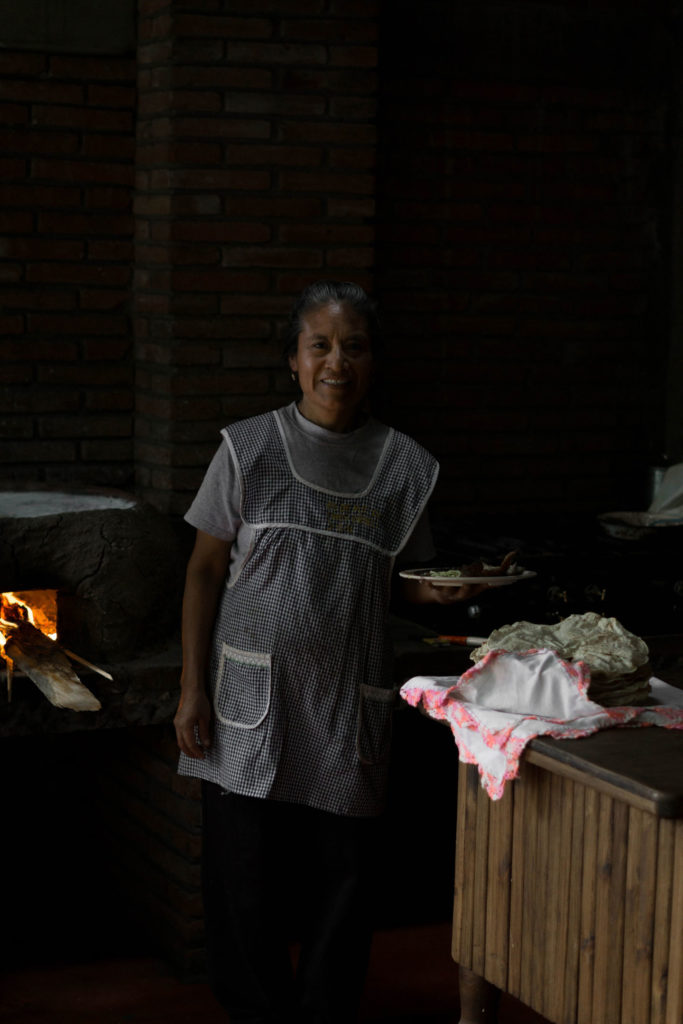
You’ll be sitting in a naturally-lit room with two communal tables facing a small open kitchen. Jorge’s dad does the nixtamalización, his mom will be making the tortillas, his siblings will be serving, and one of his cousins will be cooking right next to him.
Dishes range from an enmolada to fresh fish with jicama or a sope with sausage sourced from Etla, a small valley in Oaxaca. For dessert a traditional cup filled with fruit jello, yogurt, and fresh fruit.
Jorge’s career brought him through some of the best restaurants in the country such as Casa Oaxaca and Pujol, though it’s back at home where he’s chosen to do what he loves.
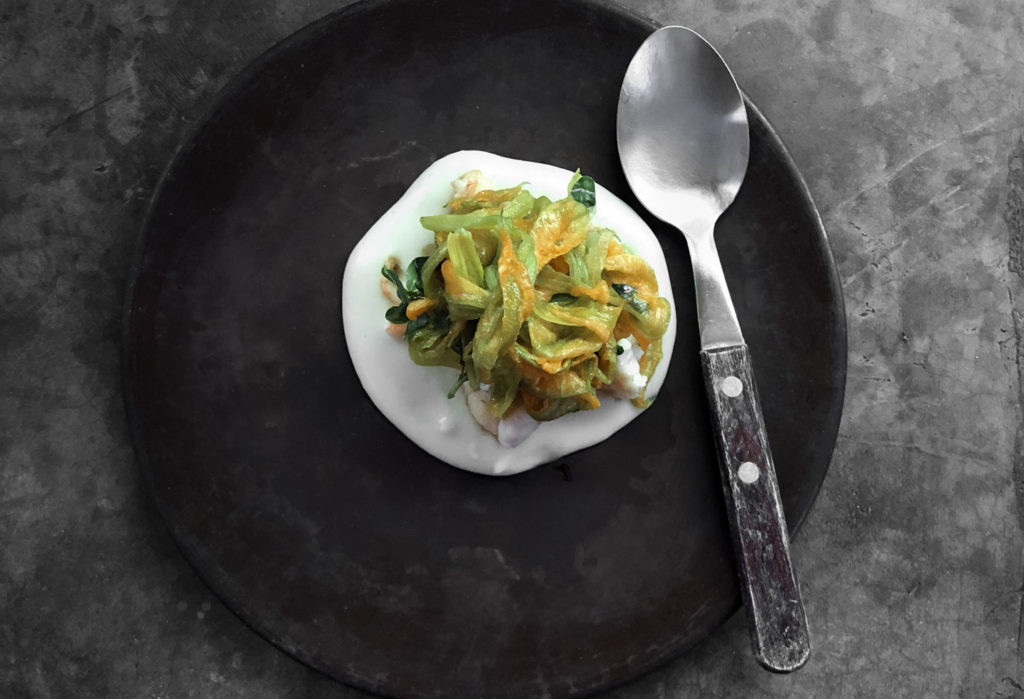
Alfonsina works based on a direct message reservation system, it is not open to the public. If you’re reading this you’ll want to know how to reserve for your next trip to Oaxaca — it’s as easy as messaging @cocinan on Instagram.
Alfonsina, Calle García Vigil 183, San Juan Bautista la Raya, Oax., Mexico
Tamales Madre
By Eduardo | @eduardoplaschinski
Walking along Liverpool street in Mexico City’s Colonia Juárez, I stumbled upon a tiny, beautiful space filled with natural wood, large containers with different kinds of heritage corn varieties displayed, and hard-working people hand-making tamales on a large workspace with stools for customers to sit and enjoy the action.
Regina and José are the founders of Tamales Madre. Friends and cousins that are on a mission to find the best corn varieties in Mexico. Heritage corn, free from genetic modification, pesticides, chemicals and toxins. Tamales Madre works with different heritage corn producers that deliver corn varieties that are rich in flavor, texture and color.
Both Regina and José were convinced that the tamal scene in Mexico City wasn’t represented correctly. Mexicans perceive tamales as street food, far from something delicate or looked after, and the cousins teamed up to change that.
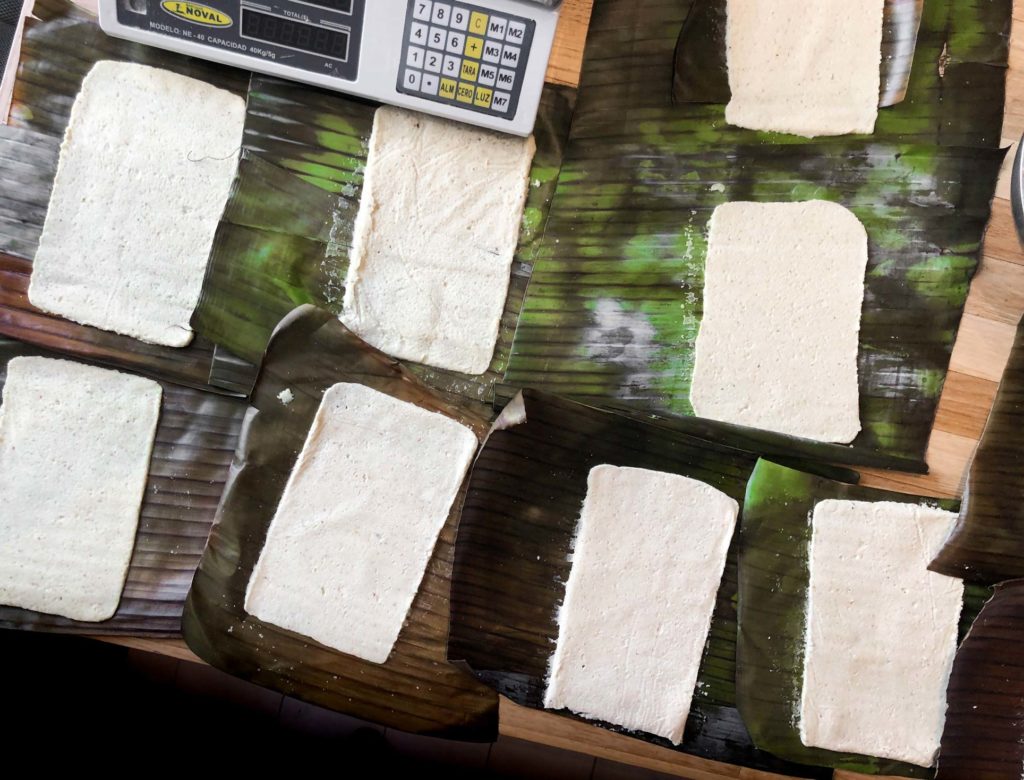
After lots of test runs and analyzing recipes and methods used in traditional Mexican kitchens, Regina and José realized animal fat wasn’t a necessary ingredient in the preparation.
The tamales here are prepared with vegetable shortening, as opposed to traditional tamales that are made with lard. This means lighter on the stomach, healthier and leaving the corn as the protagonist in the batter – opposed to dominating the flavor of the heritage corn.
The decadent tamales range from savory to sweet. Black beans and hoja santa, mole and plantain or cacao with pinole custard. Each month there’s a new tamal available on the menu, a special that focuses on representing a certain region’s techniques and flavors.
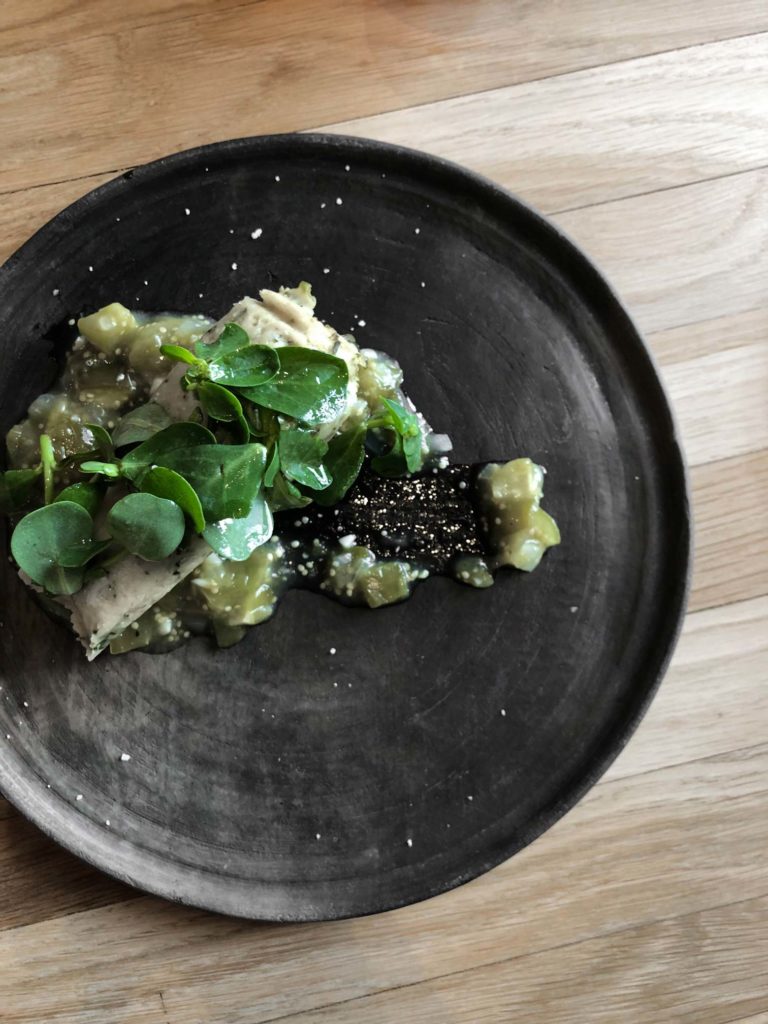
Tamales Madre is a deep dive into culture, tradition and knowing the origin of the ingredients that are used to prepare the tamales that you’ll crave each time you walk by.
Tamales Madre, Calle Liverpool 44a, Juárez, 06600 Ciudad de México
Niddo
By Eduardo | @cazadordelomejor
I have enjoyed being the Mexico City picks correspondent here at PatiJinich.com. Today’s recommendation is quite personal and may be a bit biased because the place I am recommending was opened by my mom (Karen) and I. It is called Niddo.
Niddo is a small corner space on a quiet, tree-filled street called Dresde. In Mexico City’s Colonia Juárez, just a block behind Paseo de la Reforma and a couple minutes away from the iconic Diana Cazadora statue. It’s a street most people had never heard of or drove by, yet it’s located in the very heart of this city.
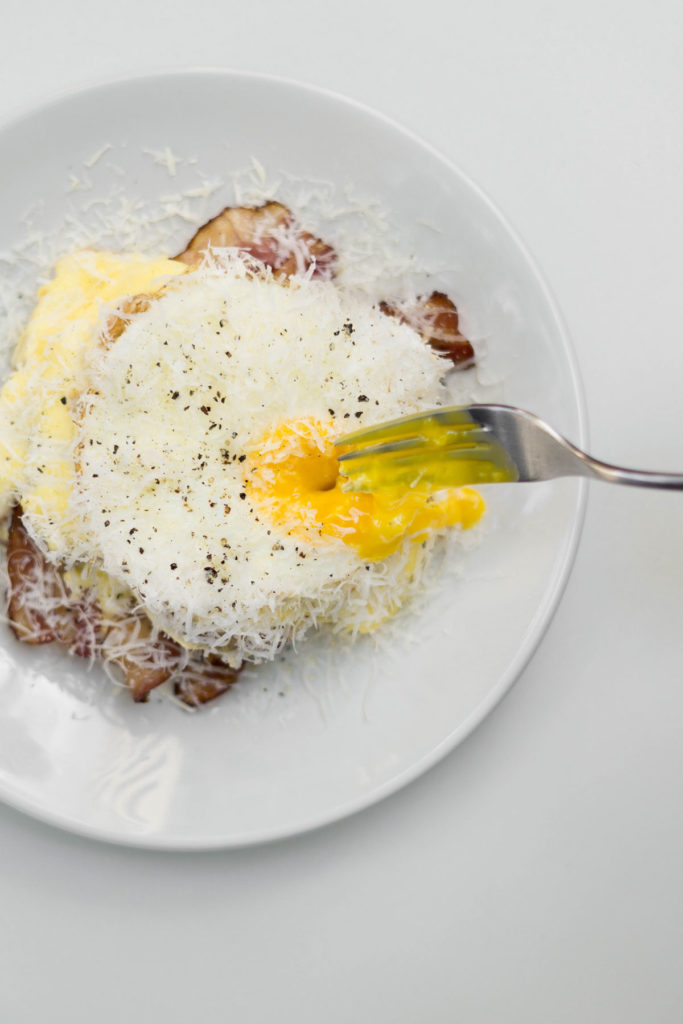
The space is divided into two concepts: the open kitchen and the café. Breakfast, lunch and Sunday brunch in the kitchen space. Coffee from Chiapas, baked goods, beverages and a collection of items that we’ve been curating for some time are for sale in the café space.
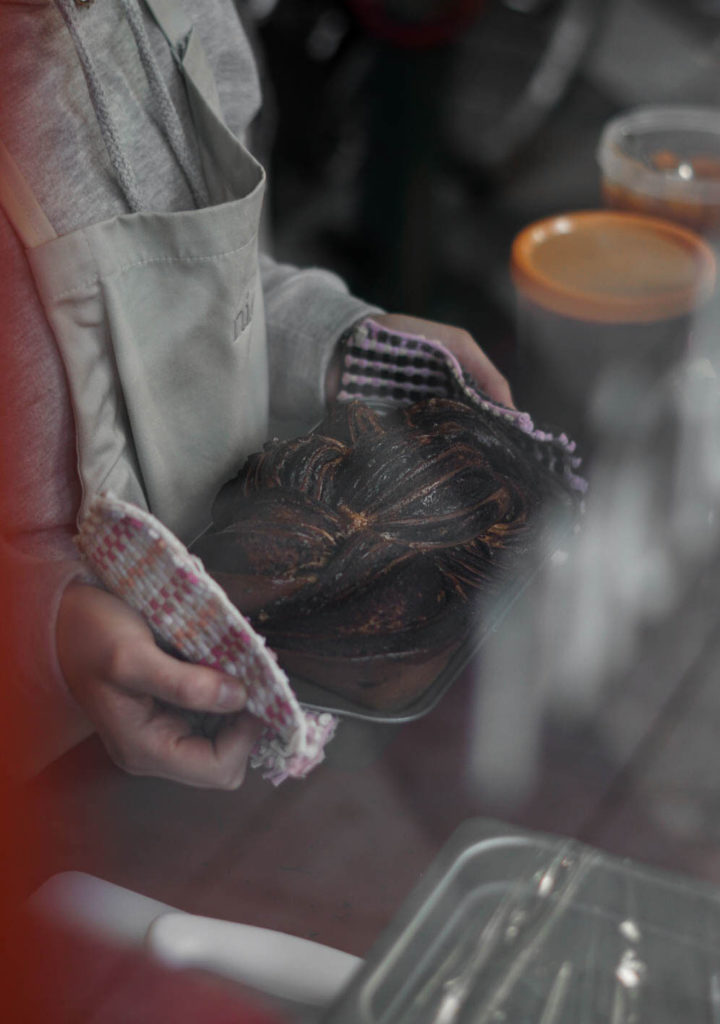
We like to call our food “comida que apapacha,” which means food that hugs your soul — and your stomach. We make very simple food with the best ingredients and let some of our family roots and history into each dish. From babka to shakshuka to chilaquiles or a grilled cheese sandwich. I grew up in a Jewish family in Mexico. My great-great-grandparents were Polish, and we lived for a long time in Vancouver, a very multi-cultural city. We picked up on a lot of different cuisines along the way.

Niddo is tiny, yet was designed to feel abundant with mirrors on almost every wall, tall ceilings and arched passageways — and a guaranteed view of the open kitchen at every seat. One of our main goals while designing the space was to eliminate the division you usually find between the kitchen and dining room at a traditional restaurant. Niddo’s entrance is actually through the kitchen.
The shakshuka at Niddo is the perfect breakfast. A rich and hearty tomato and bell pepper stew mixed with cumin, cayenne pepper, zaatar, fresh parsley, two poached eggs, and Lebanese yogurt. My mom learned to make it during the frequent trips to Israel as a child and perfected it after years and years of making it at home.
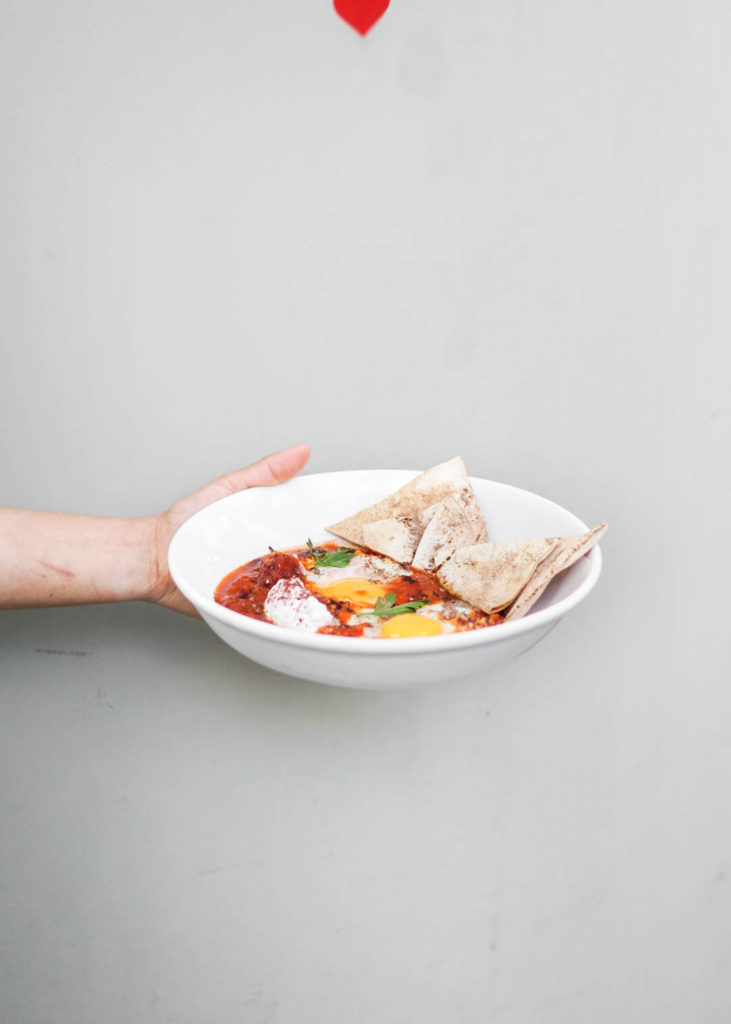
Niddo’s menu is small and is constantly changing and evolving. We try to travel as much as we can around Mexico and different countries to absorb different cultures into our food and bring home ingredients.
Niddo feels like home and tastes like it too.
Niddo, Dresde 2, Colonia Juárez, CDMX
Heladería Casa Morgana
By Eduardo | @cazadordelomejor
A 3- by 3-meter window in Mexico City’s Colonia Juárez where passionate people make perfect Italian gelato using seasonal Mexican ingredients, and the result is hard to compare to anything else.
It was during a dream one night that Kirén Miret (founder, co-owner and master gelato maker at Casa Morgana) decided she was going to open a gelato shop. That night, she quickly woke up and started jotting down ideas — flavors, ingredients, anything that came to her mind. This would result in becoming the root of the ice cream shop she’d always dreamed of. Kirén had no gelato experience. The next morning, she started searching for gelato courses in different parts of the world until one in Los Angeles popped up.
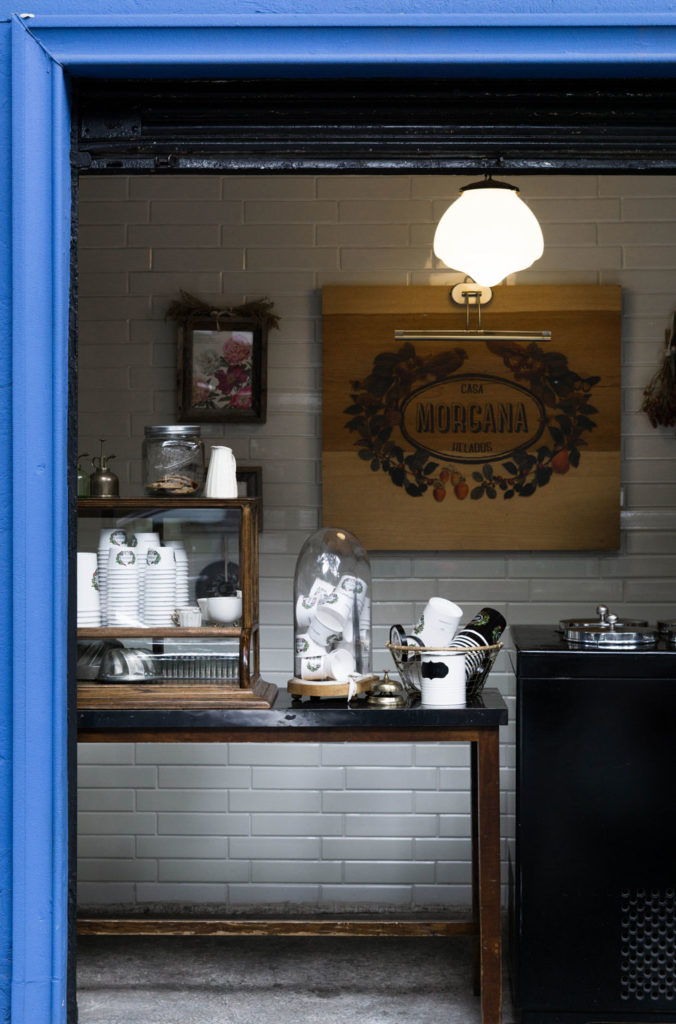
Shortly after, she was back in Mexico City making gelato with a small home gelato maker and bringing samples into her office. Kirén’s passion grew stronger, and a couple months later, she was all the way in Italy perfecting her skills. There she graduated as a master gelato maker.
Casa Morgana is run by Kirén, Diego (Kirén’s nana’s son), Elías (Diego’s father), Tani and Javi. It’s pretty much a family business. They make gelato because it makes them happy, not for any other reason. No artificial coloring, flavors or preservatives are used. Only fresh seasonal ingredients, sugar and milk, which are turned into gelato in a machine Kirén compares to a Ferrari.
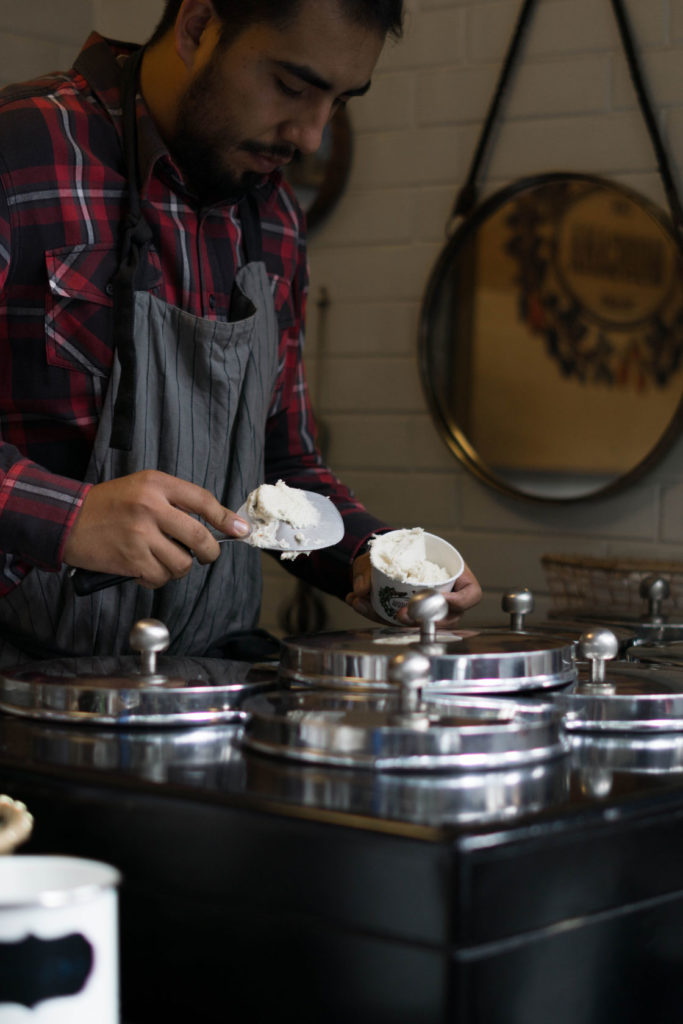
The flavors at Casa Morgana range from mango, to rosca de reyes, to chocolate oaxaqueño. It all depends on the season, and each day means a different menu. November brings pan de muerto gelato, and December brings churros and ginger snap.
Each detail at Morgana is looked after. The containers in which the gelato is stored, the sugar to milk ratio, the cups that are flown in from Canada, the metallic spoons, the spades which are used to serve – they all work together to make Morgana’s gelato so creamy and irresistible.
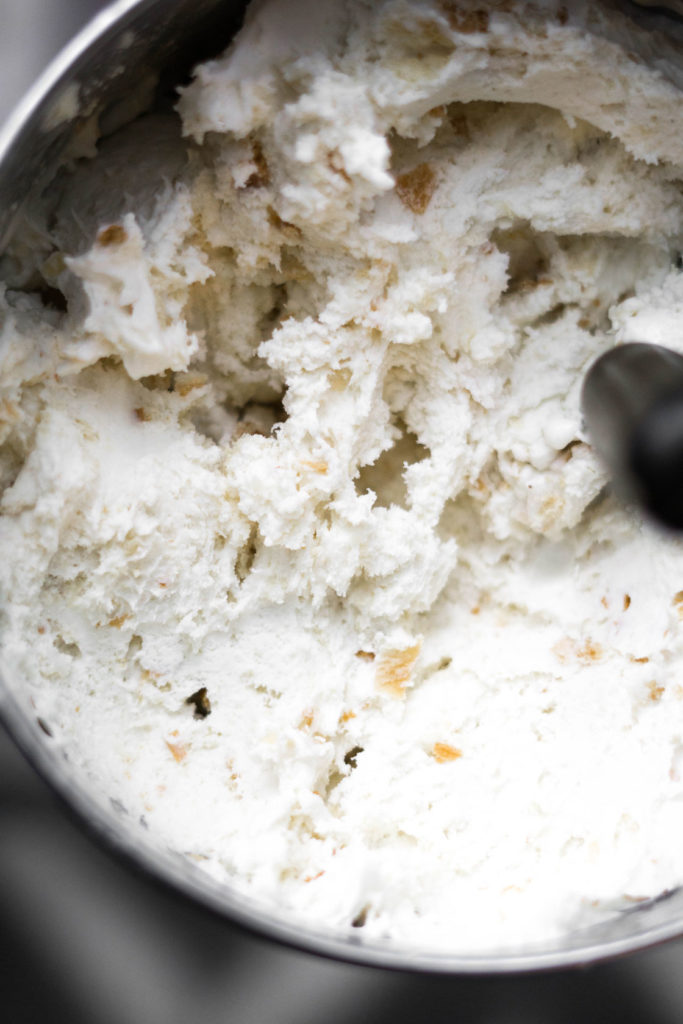
Kirén has always been an ice cream person. When she was a little girl, she liked the more normal, chocolate-covered vanilla ice cream pops with sprinkles. Today, her mission is to make the best ice cream in Mexico – and she’s up there.
Heladería Casa Morgana, Calle Milán 36, Juárez, CDMX
Contramar
By Eduardo | @cazadordelomejor
Mexico City’s freshest and tastiest seafood, many say. Contramar is known to be the city’s most buzzing spot for locals and foreigners alike. There’s no trip to Mexico City and no weekend well spent without lunch at Contramar.
Cramped wooden chairs and small tables with white tablecloths, woven lamps, blue painted murals, a daily inspirational quote written in large font on the wall, and fast-moving waiters that have been working at the restaurant for over a decade make up the ambiance.

Gabriela Cámara, owner and founder of Contramar, had a very clear vision from the start: honest and fresh food made from the best product, outstanding service, and a great vibe that would provoke sobremesa. Andrés Barragán, chef of Contramar, met Gabriela at the very beginning, almost 20 years ago. Andrés, originally from Puebla, developed his cooking skills with Gaby and continued to improve them on his own. Tuna tostadas, fresh clam ceviche, pescado a la talla and the tuna carnitas are some favorites.
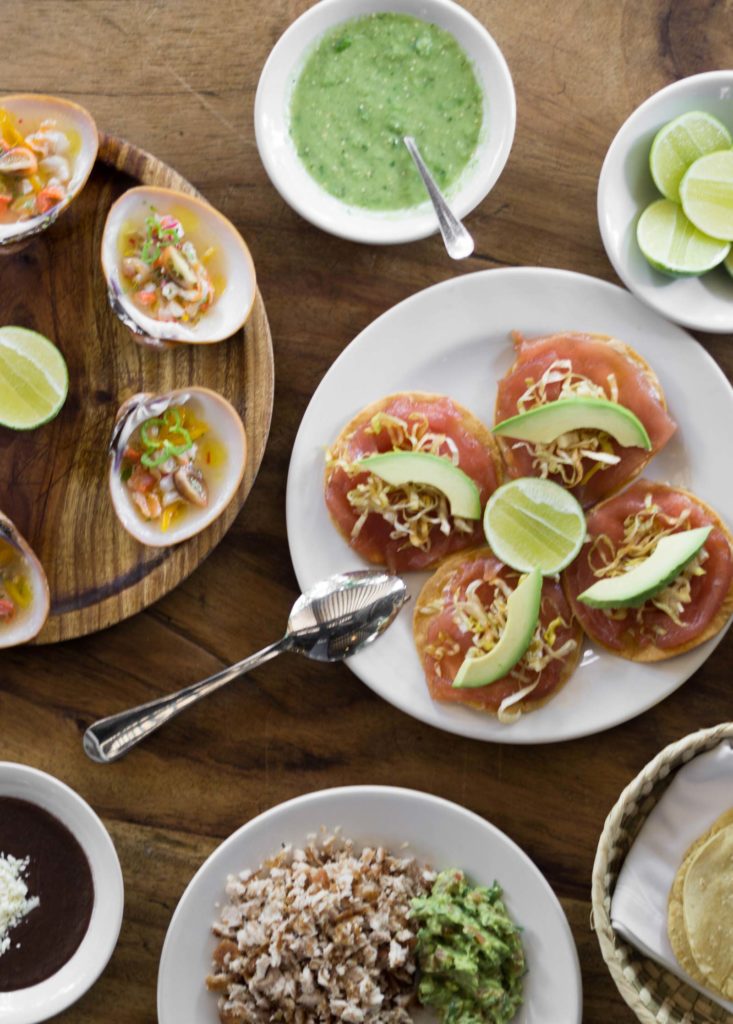
Contramar’s tuna carnitas are made using the fatty part of the tuna, which is chopped then fried until crispy on the outside and tender and juicy on the inside. After frying, the meat is served with chunky guacamole, refried beans and fresh tortillas made with heirloom corn from Tepoztlan. For dessert, waiters will be dancing around with large trays filled with sweets ranging from fresh chocolate cake to mountains of fresh merengue with whipped cream and strawberries.
Contramar just turned 20 and things just keep getting better for everyone.
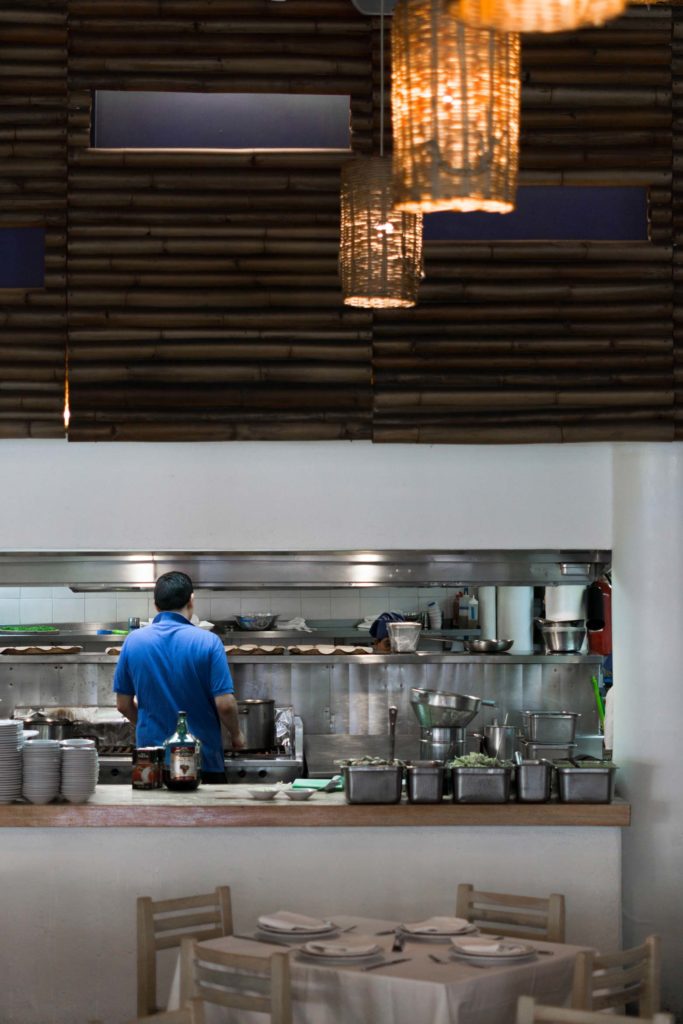
Contramar, Calle de Durango 200, Roma Norte, CDMX
Sanborns’ Swiss Chicken Enchiladas
Sanborns’ Swiss Chicken Enchiladas
Ingredients
- 1 1/2 pounds tomatillos husked, scrubbed and rinsed, and quartered
- 2 garlic cloves peeled
- 1/2 cup coarsely chopped white onion
- 1 to 2 serrano chiles stemmed, seeding optional
- 1 1/2 cups coarsely chopped cilantro leaves and upper part of stems
- 1 teaspoon kosher or sea salt or to taste
- 1/4 cup water
- 1 tablespoon canola or safflower oil
- 1 cup chicken broth, or vegetable broth, or water homemade or store-bought
- 1 cup Mexican style cream, Latin-style cream or heavy cream
- 12 Corn tortillas
- 3 cups shredded cooked chicken
- 3 cups Oaxaca or Muenster cheese, grated
Instructions
- In a blender, combine the tomatillos, garlic, onion, chiles (start with 1 and add another if desired), cilantro, salt and water. Puree until completely smooth.
- Heat the oil in a medium saucepan set over medium heat until hot but not smoking. Add the pureed tomatillo mixture, being careful as it will sear and splutter. Cover partially with a lid and cook, stirring occasionally, until it thickens and darkens, about 4 to 5 minutes.
- Stir in the broth, cover partially, and simmer for 5 minutes more. Turn off the heat and stir in the cream. Set aside.
- Prepare the tortillas for enchiladas by either heating them on a comal or passing them through hot oil.
- Preheat the oven to 400 degrees Fahrenheit.
- Pour about 1 cup of the cooked salsa verde into a 9”x13” baking dish. One by one, place a tortilla on a plate or cutting board and arrange about ¼ cup shredded cooked chicken down the middle. Roll up into a soft chubby enchilada and place seam down in the baking dish. Continue with the rest of the tortillas.
- Pour the remaining cooked salsa verde over the enchiladas and sprinkle the grated cheese on top. Place in the oven and bake for 10 to 15 minutes, or until the cheese has completely melted and begun to lightly brown.
Notes
Tita Chelo’s Frosted Flake Cookies
Tita Chelo’s Frosted Flake Cookies
Ingredients
- 1 1/3 cups unsalted butter at room temperature
- 1 1/4 cups granulated sugar
- 3 eggs at room temperature, cracked into a small bowl
- 1 tablespoon vanilla extract
- 1/8 teaspoon fine sea salt
- 3 cups all-purpose flour plus an additional 1/4 cup for shaping the dough
- 4 to 5 cups frosted flakes cereal of your choice
Instructions
- In a stand mixer, fitted with the paddle attachment, whip the butter until soft and fluffy, about 2 minutes. Add the sugar 1/4 cup at a time, beating well after each addition.
- Scrape down the sides of the bowl and the beaters. Add the eggs and continue beating until well mixed, another minute. Beat in the vanilla and salt. Add the flour 1/4 cup at a time, beating for a few seconds after each addition, and continue to beat until the flour is incorporated. The batter should be very smooth, homogenous and soft. Remove the bowl from the mixer.
- Cover 2 large baking sheets with parchment paper. Preheat the oven to 325 degrees Fahrenheit and position the oven racks in the middle and bottom thirds.
- Place 2 cups of frosted flakes on a large dinner plate or baking sheet and using your hands, squeeze and crumble the flakes to make them smaller, taking care not to grind them up completely. Place 1/4 cup flour on another plate and set it next to the plate with the frosted flakes, and have the parchment-covered baking sheets nearby.
- Dust your hands with the flour on the plate and scoop up about 1/4 cup of dough. Roll it into a ball and flatten the ball slightly in your hands, then put it into the crumbled frosted flakes to “bread” the cookie. Gently press the ball of dough into the flakes as you add about a teaspoon of crumbs to the top, then press into a ¼-inch thick, 3- to 4-inch round. Transfer to the baking sheet and repeat with rest of the dough.
- Bake 20 to 25 minutes, rotating the pans from top to bottom and front to back halfway through, until the cookies are light golden brown around the edges. Remove from the oven and allow to cool. Store in a tin or a jar.
Notes
El Huequito
By Eduardo | @cazadordelomejor
There are so many places to eat tacos al pastor in Mexico City and each one is unique. El Huequito’s original location on Ayuntamiento, a busy street in Mexico City’s downtown, has been serving tacos al pastor for almost 60 years. You order off the street and eat on the other side of the sidewalk at an aluminum high-top table with a variety of spicy salsas and freshly cut limes.
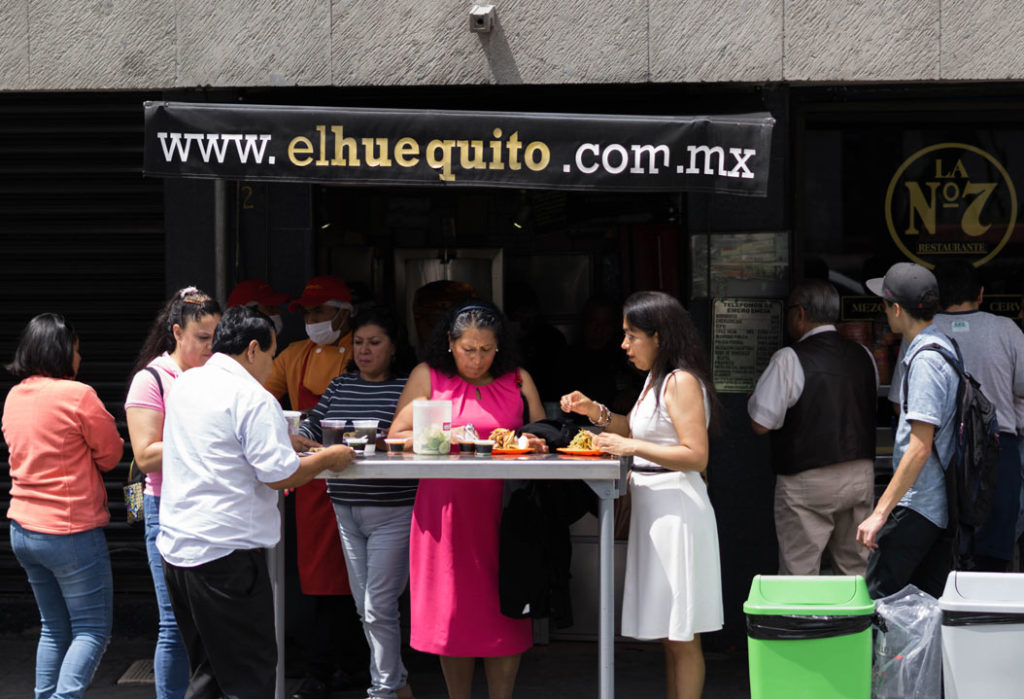
Pastor is crispy shavings of vertical spit-roasted pork marinated with dried chiles and spices. Very similar to shawarma or doner kebab, pastor was influenced by the strong Lebanese migration that occurred in Mexico in the early 1940’s.
In 1959, Guillermo Buendía and Amelia González started the business in a one-by-one-meter location. Due to the size, clients would refer to the taco shop as a “huequito,” meaning a very small space in Spanish.
The tacos al pastor at El Huequito are different than all the rest in Mexico City. No pineapple and no cilantro here. Just freshly shaved pastor meat wrapped in a tortilla with a little green salsa, chile de árbol salsa and onion, then straight back on the grill to seal in the flavor.
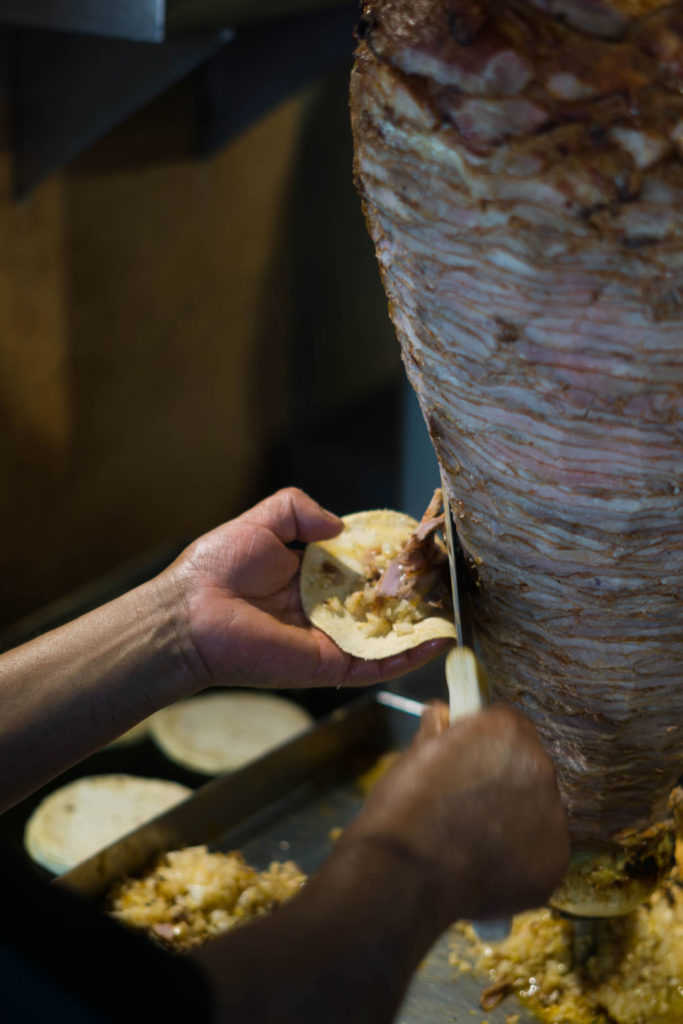
If you visit one of El Huequito’s newer locations, like the one in Condesa neighborhood, you’ll experience a longer menu with classics such as the especial — a mountain of pastor topped with corn tortillas, onion and green salsa, so you can make your own tacos.
A couple tacos al pastor with an ice-cold agua de horchata is probably one of the best combinations that exists in Mexico City’s street food scene today.
El Huequito, Ayuntamiento 21, Colonia Centro, Centro, 06050 Ciudad de México
El Rey del Pavo
By Eduardo | @cazadordelomejor
In Mexico, and many parts of the world, roasted turkey is mainly served during the holiday season. Imagine a place where shaved slices of juicy roasted turkey are served on a soft telera smothered with avocado and spicy rajas. This place exists, it’s located in the heart of downtown Mexico City and, here, you can devour a turkey torta during any month of the year.
El Rey del Pavo has been in business for over a century. It was founded in 1910 by Ramón Avellana, a Spanish man from Gironella, a small town just North of Barcelona. Ramón moved to Mexico in 1906 and brought with him homey recipes, which are still used in the kitchen, and the idea of charcoal roasting the turkeys. The first location was at Palma Street #19. After moving locations twice, Ramón’s nephew, Carlos Moreno, is in charge of the restaurant’s new location, just a couple blocks down, at Palma Street #32 in Mexico City’s historic center.
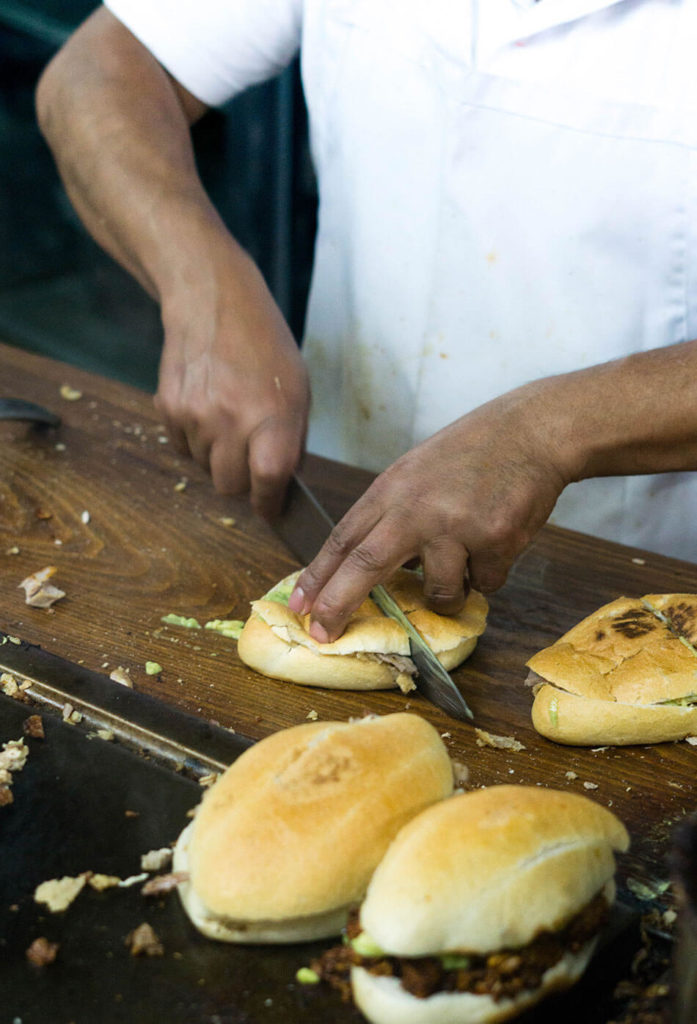
Walking in you’ll see an open kitchen and lined up are the torteros and taqueros making turkey tortas and tacos by the dozen. There are lots of options here ranging from turkey breast in adobo, thigh, and turkey chicharrón. The restaurant is simple, lots of wooden tables with blue leather chairs that make for a diner-like feel. Most of the people who go in for a bite have been visiting the place for years and bring different generations of the family to try it.
Each time I visit, I’ll start off with a taco and end with a torta, accompanied by a hot bowl of turkey broth to dip. It’s hard to leave this place without a takeout bag to enjoy for dinner.
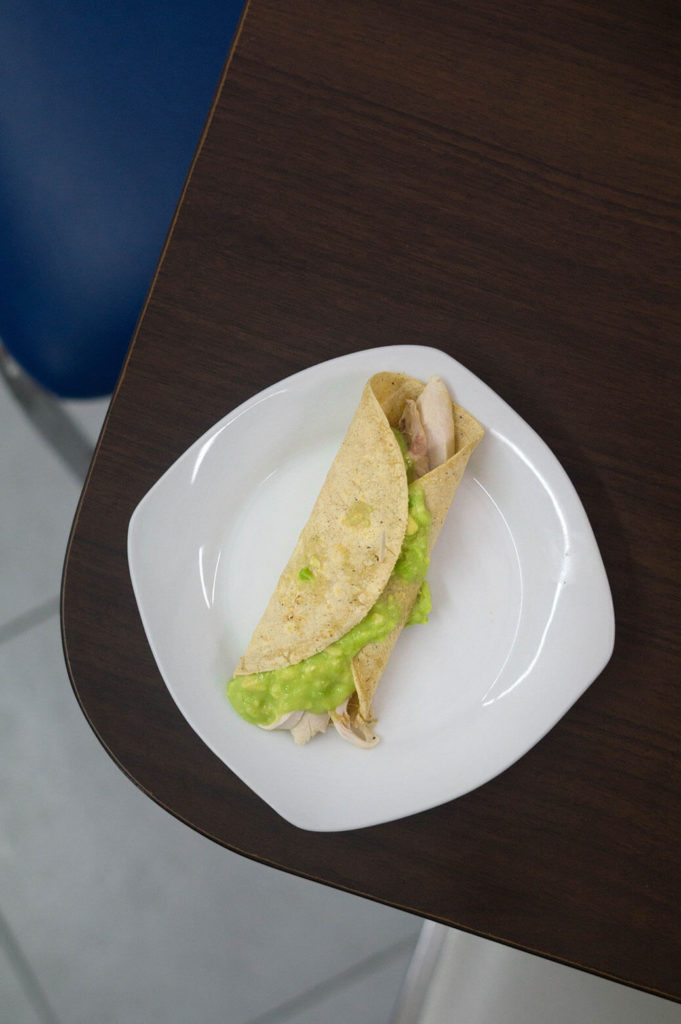
El Rey del Pavo, Calle de la Palma 32, Centro Histórico, Ciudad de México
Molino “El Pujol”
By Eduardo | @cazadordelomejor
From one day to the next, heirloom corn became a strong topic of conversation in Mexico. However, heirloom corn varieties have been a cornerstone of Mexican cuisine.
Chefs in Mexico City, Enrique Olvera included, have been using heirloom corn in their restaurants for years to make fresh tortillas, tamales, gorditas, or other antojitos that are made after the nixtamalized corn is turned into masa. Personalities like Olvera are aware of the importance of communicating the use of non-modified, non-GMO, pure, heirloom corn to Mexicans and the world.
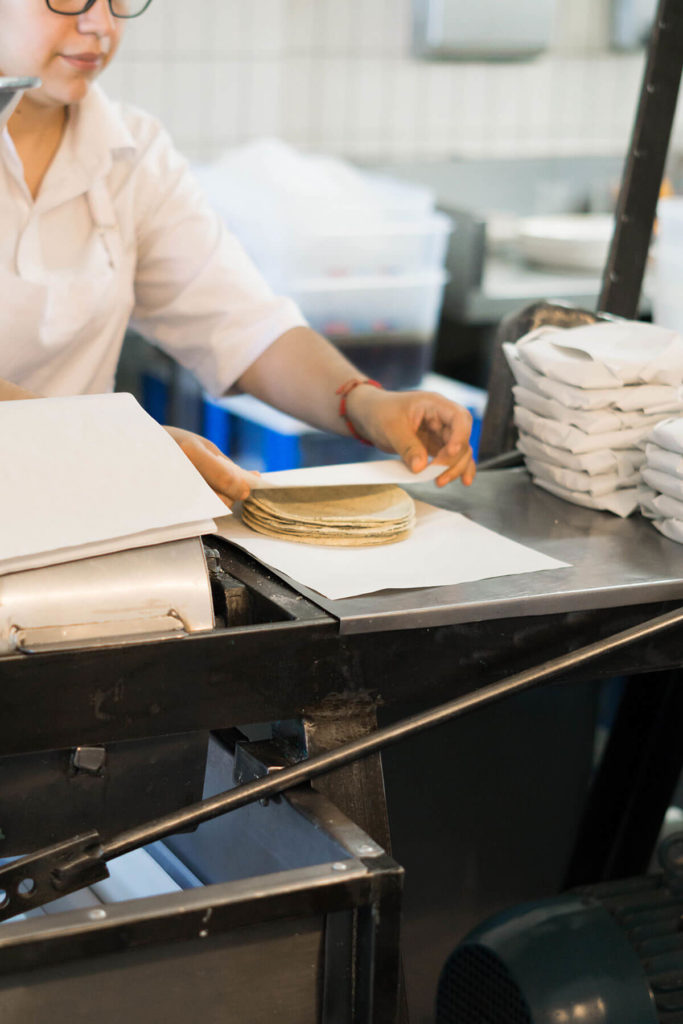
At the end of April, Molino “El Pujol” was born. A small tortilla shop in the Condesa neighborhood run by Enrique and his team, whose main restaurant Pujol is on San Pellegrino’s list of the 50 best restaurants in the world.
The team behind Molino has gotten very creative and built up a small menu that ranges from an avocado taco wrapped in an acuyo leaf, to the more complex corn cob smothered with chicatana ant, coffee and costeño chile mayo, to a cold glass of corn water to wash it all down. Molino is a sophisticated tortilleria, indeed.

The place itself is simple, yet impressive. As you walk in, on the right, you’ll find a large corn mill and baskets of different heirloom corn varieties for sale. On the left, there is a small 6-seat counter with illustrations by Hilda Palafox, a well known Mexican artist and illustrator. At the end of the counter, you’ll see a refrigerator with fresh salsas and Mexican craft beer.
Molino “El Pujol” supports numerous families in different states of Mexico whose livelihood depends on producing heirloom corn varieties.
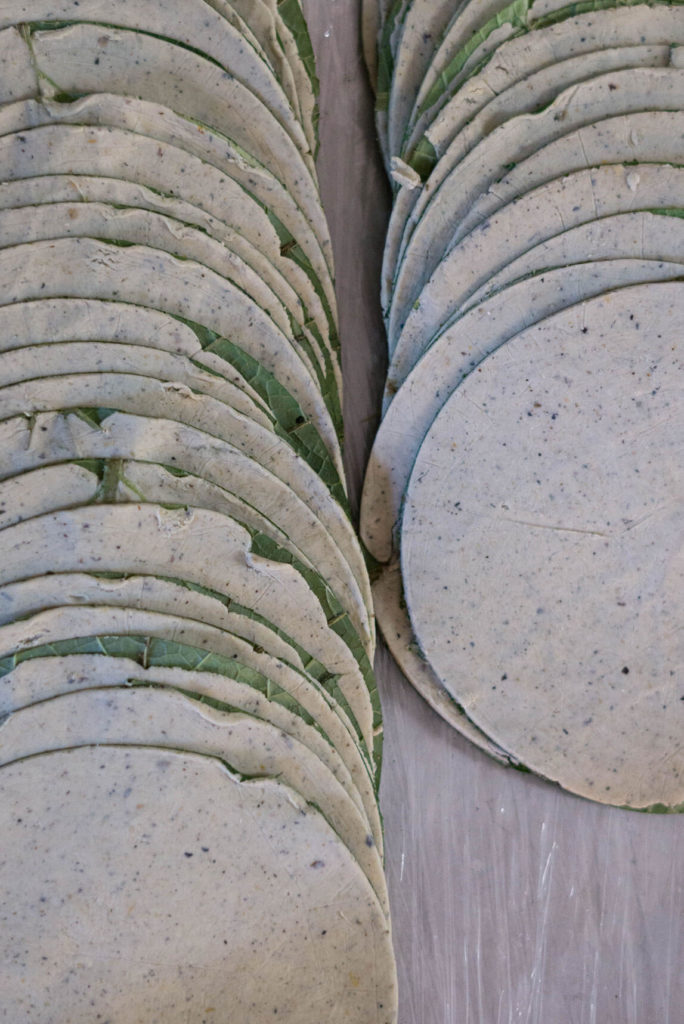
Molino “El Pujol,” General Benjamín Hill 146, Hipódromo Condesa, Ciudad de México
Itanoní Tortillería y Antojería
By Eduardo | @cazadordelomejor
Oaxaca is one of Mexico’s most interesting states, rich with culture, ingredients and tradition, and is home to a small and simple eatery that a big part of the country’s foodies talk about.
Itanoní is basically made up of plastic chairs, tables, colorful decorations hanging from the ceiling, clay comales and señoras who have a lot of experience cooking on them. Here you’ll find anyone from local kids enjoying an afternoon snack to business executives stopping in for lunch.
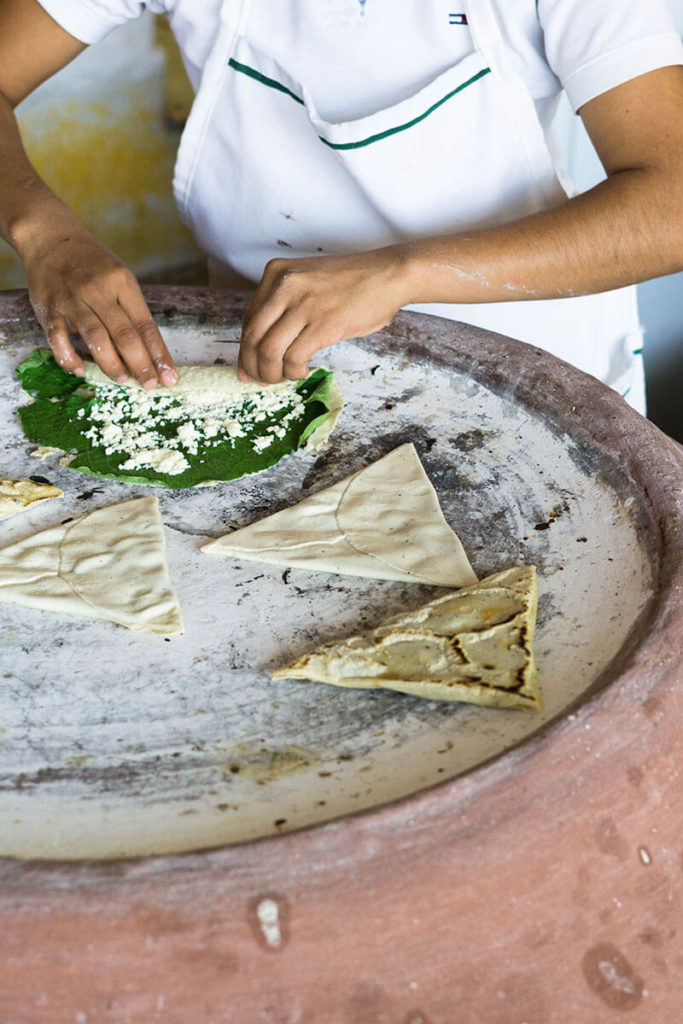
The main ingredient here is heirloom corn in many different varieties. Once the corn has gone through the nixtamal process and has been transformed into masa, lots of different dishes are made. The menu ranges from tetelas, which are triangular corn masa pockets that can be filled with various ingredients, such as fresh cheese and squash blossoms, to the traditional fried egg over a warm tortilla finished with a fresh acuyo leaf and a little red or green salsa.
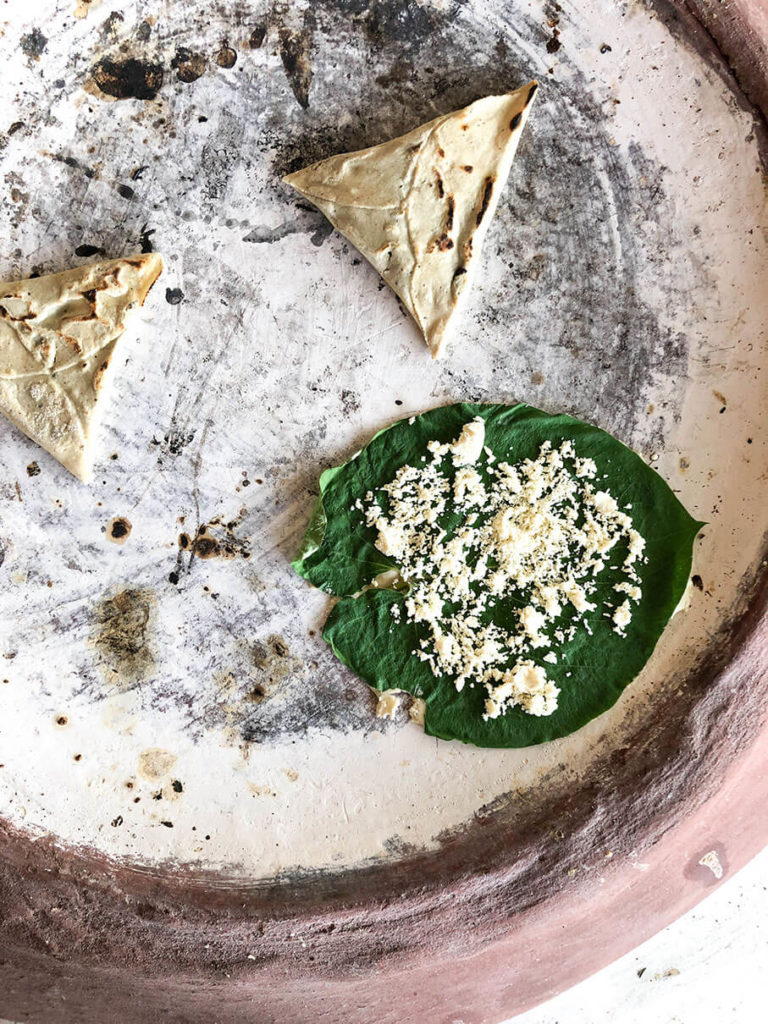
A century ago, there was a lot more heirloom corn on the Mexican market than there is today. A lot of different varieties of heirloom corn got contaminated with genetically modified corns. Itanoní has managed to maintain using a rainbow of heirloom varieties and is one of the few restaurants in Mexico that do so.
Itanoní Tortillería y Antojería, Av Belisario Domínguez 513, Reforma, Oaxaca
Mexican Grilled Steak Salad
Mexican Grilled Steak Salad
Ingredients
For the salad:
- 2 to 3 pounds flank steak
- 1 teaspoon kosher or coarse sea salt or more to taste
- To taste freshly ground black pepper
- 3 (about 1/2 pound) medium carrots peeled, halved lengthwise and sliced
- 3 (about 1 pound) medium red potatoes peeled and cubed
- 1/2 pound green beans ends trimmed, cut diagonally into thirds
- 1 cup peas fresh or thawed from frozen
- 6 radishes halved and cut into matchsticks
- 2 tablespoons cilantro leaves and upper part of stems chopped
- 1 ripe avocado halved, pitted, meat scooped out and sliced
- To taste pickled jalapeños
- To taste chipotle chiles in adobo sauce
For the vinaigrette: (If you like salad juicy double the vinaigrette!)
- 1/3 cup distilled white vinegar
- 1/3 cup olive oil plus more to grill the meat
- 1/3 cup vegetable oil
- 1 teaspoon kosher or coarse sea salt
- 1/2 teaspoon freshly ground black pepper
- 1/2 teaspoon brown sugar
- 1 clove garlic finely minced or pressed
- 2/3 cup red onion slivered
To serve:
- 1 head romaine lettuce leaves rinsed and chopped
- Warm corn tortillas for serving
Instructions
- Preheat the grill over medium-high heat. Brush the flank steak with olive oil and season with salt and pepper. Grill the meat for 5 to 6 minutes per side for medium (about 145 degrees Fahrenheit on a meat thermometer). Let rest for 5-10 minutes, then thinly slice against the grain and set aside.
- Bring salted water to a boil in a medium saucepan. Cook the carrots for about 3 to 4 minutes until tender, remove with a spider or slotted spoon and place in a bowl. Repeat with the potatoes and green beans, adding them to the same bowl with the carrots. Lastly, cook the peas for just one minute, then drain and place in the bowl with the other cooked vegetables.
- In a bowl, whisk the vinegar with the oils, salt, pepper, sugar and garlic, until emulsified. Add the onion and let macerate for at least 15 minutes. You may cover and place in the fridge for up to a couple weeks. Shake before using. If you like your salad very juicy and dressed, double the vinaigrette!
- Dress the lettuce with some of the vinaigrette and place on an extended platter. Pour some of the vinaigrette on to the cooked vegetables, incorporate the radishes and cilantro, mix well and place on lettuce. Place the sliced meat on top, add the avocado, dress with more of the vinaigrette. Add some of the pickled jalapeños and chipotles in adobo on the sides of the plate or to your liking. Serve with warm corn tortillas on the side.
Notes
Dulcería de Celaya
By Eduardo | @cazadordelomejor
Over 140 years ago, the Guizar family opened a small candy shop in the heart of Mexico City’s historic downtown. Dulcería de Celaya was located on Plateros Street, which is now Madero, a rarity in Mexico’s downtown core because it is only open to pedestrians. Today, the dulcería is located on Cinco de Mayo Street.
This dulcería is like a hidden jewelry store that sells some of the tastiest and most delicate candy in the city. The candies are showcased in hand-crafted wooden display windows and are handled like precious gems as you order.
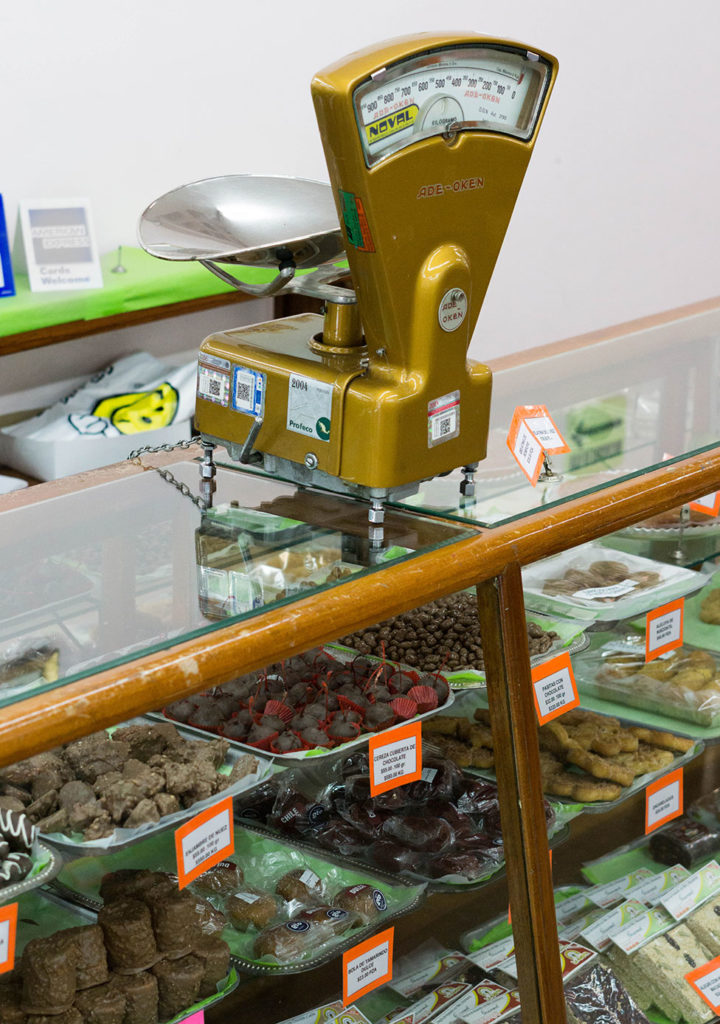
During the first few years of business, the different candies were sourced from various states across Mexico. After the shop’s reputation grew and gained popularity, the Guizar family decided to buy recipes from some of their most trusted suppliers and began also producing candy in the basement of the family home.
Strawberry, orange, guava, pineapple are all flavors you’ll taste, and the freshly grated coconut in their cocada dorada candy is a must. A few other, more traditional, Mexican flavors to try are marzipan and cajeta. As soon as you step foot in this tiny candy shop, you’ll find it hard to not walk out with a bag full of flavor.
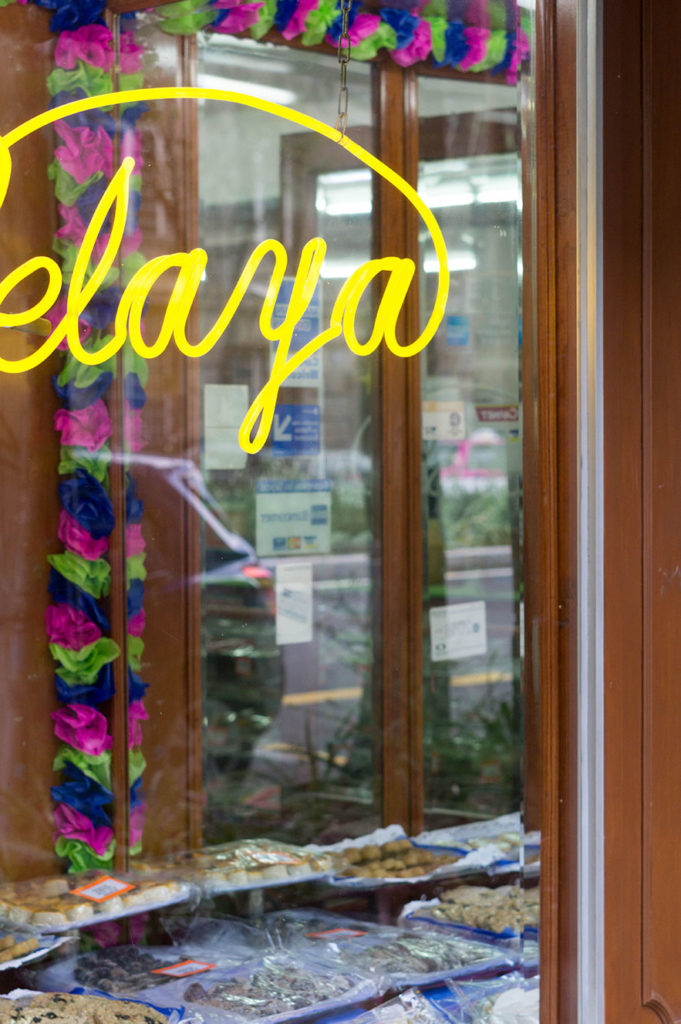
Dulcería de Celaya, Av. Cinco de Mayo 39, Centro Histórico, Cuauhtémoc, Ciudad de México
Pancracia
By Eduardo | @cazadordelomejor
Seven years ago, bread maker Hugo González opened up what is known to be one of the best bakeries in Mexico. As you walk along Chihuahua Street in Colonia Roma, a vibrant and historic neighborhood, the strong aroma of freshly baked bread will lure you over.
Hugo studied culinary arts at Universidad del Claustro de Sor Juana, a highly esteemed culinary school in the south of Mexico City and completed his thesis on bread fermentation. Soon after he was given the opportunity to stage at Ferran Adrià’s 3-Michelin star restaurant, El Bulli in Spain.
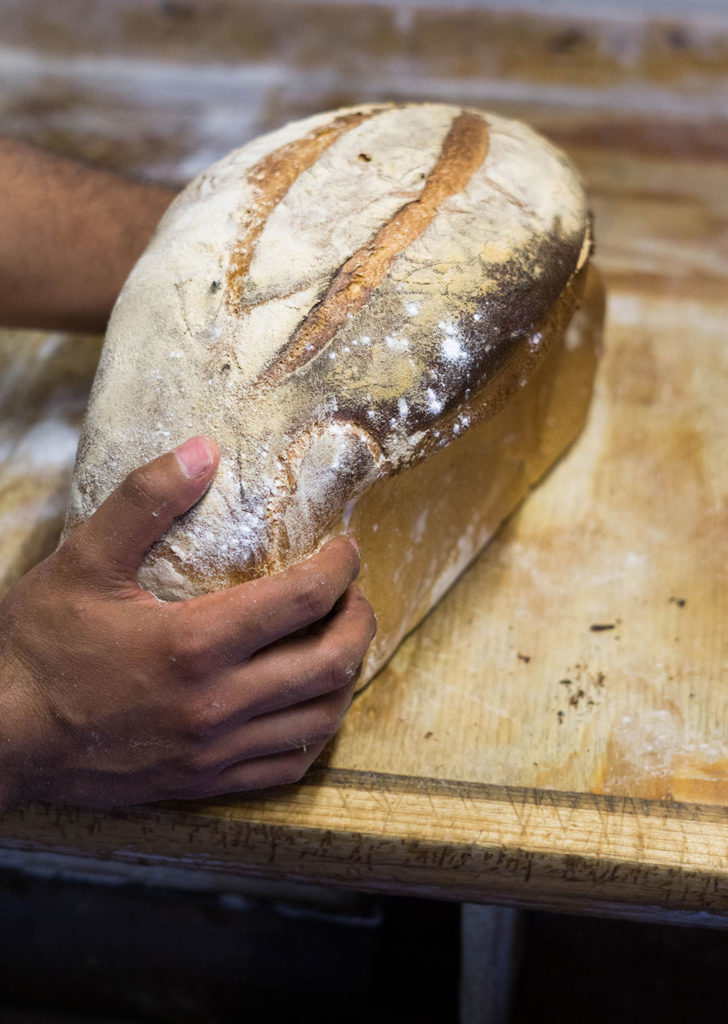
Everything at Pancracia is made with a sourdough starter that Hugo has been carefully nurturing for over 20 years. The thick & rustic crust and the soft & tangy crumb is a result of the fermentation-focused philosophy, different from classic bakeries in Mexico that stick to more traditional varieties using fresh yeast.
The bakery itself is a tiny ten by ten feet space divided into two different levels. On the first level is a large oven, racks of freshly baked bread and a small wooden working table. Up top is a fridge space where the rare sourdough starter is kept and shelving where dough is left to ferment. The temperature on the second floor is slightly higher and perfect to make the most of the fermentation process.
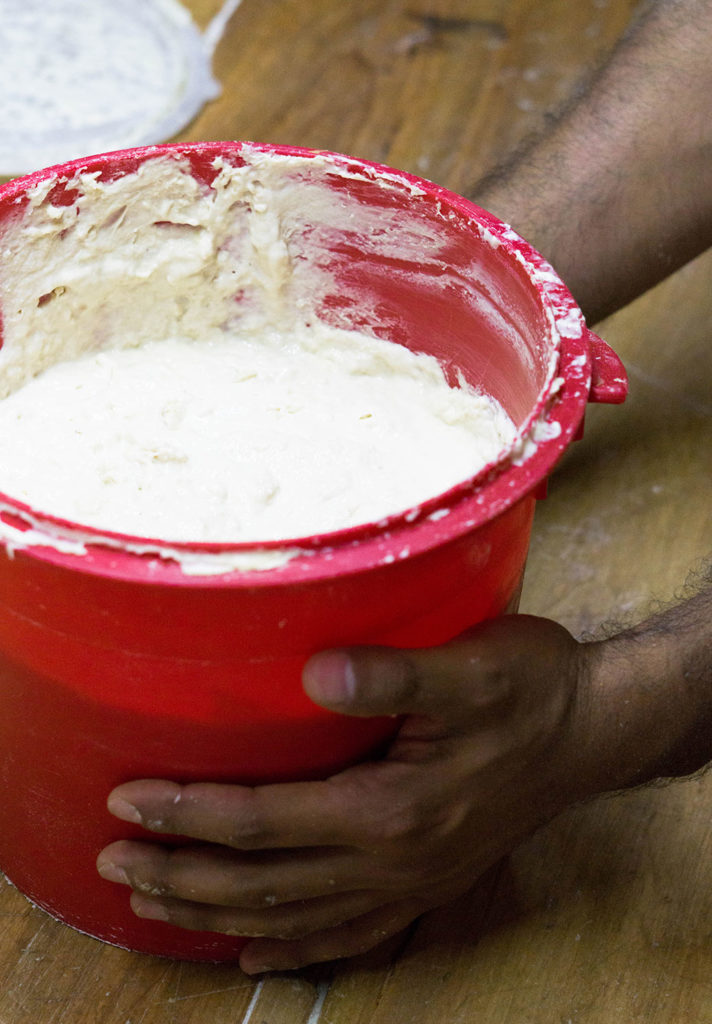
If you arrive early in the morning, you’ll be able to take home anything from doughy yogurt-based chocolate and vanilla conchas to savor through breakfast or fresh-out-of-the-oven fennel loaves to eat with dinner. Come late morning, some of Mexico City’s most renowned restaurants will be stopping by to pick up their artisanal orders.
One of my favorite things are the vigilantes: oval shaped butter-based sweet bread bathed in lemongrass honey – native to South America. Once you eat one, it’s hard to not eat a whole tray.
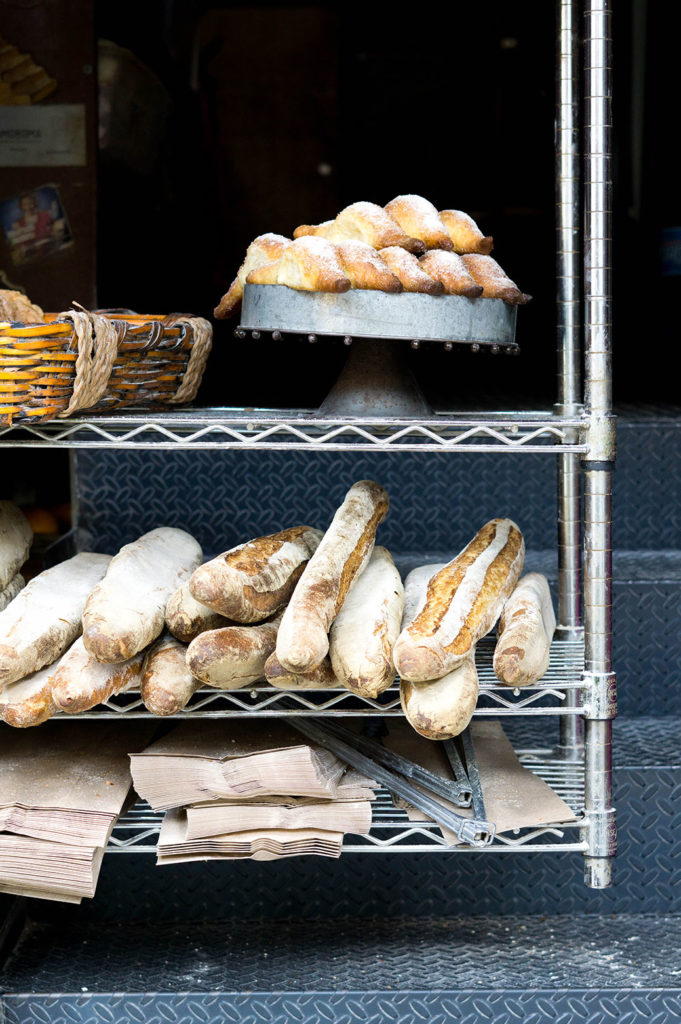
Over the years, Pancracia has made its mark on the neighborhood and has evolved into a strong reference for some of the best sourdough bread in the country.

Pancracia, Chihuahua, 181, Roma Norte, Ciudad de México

